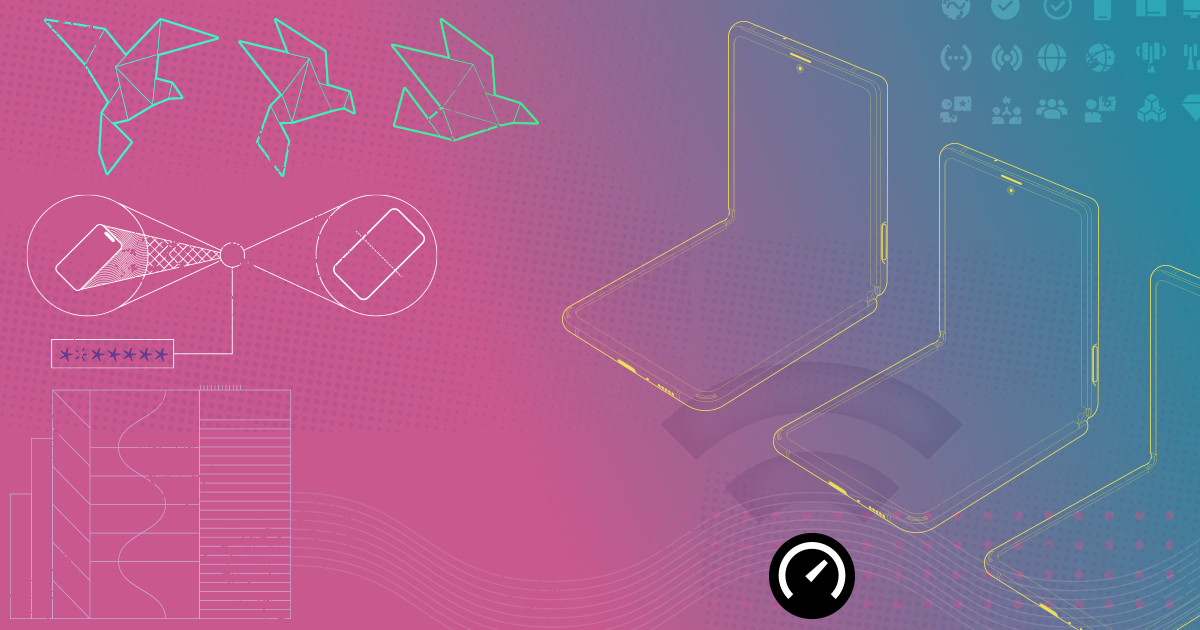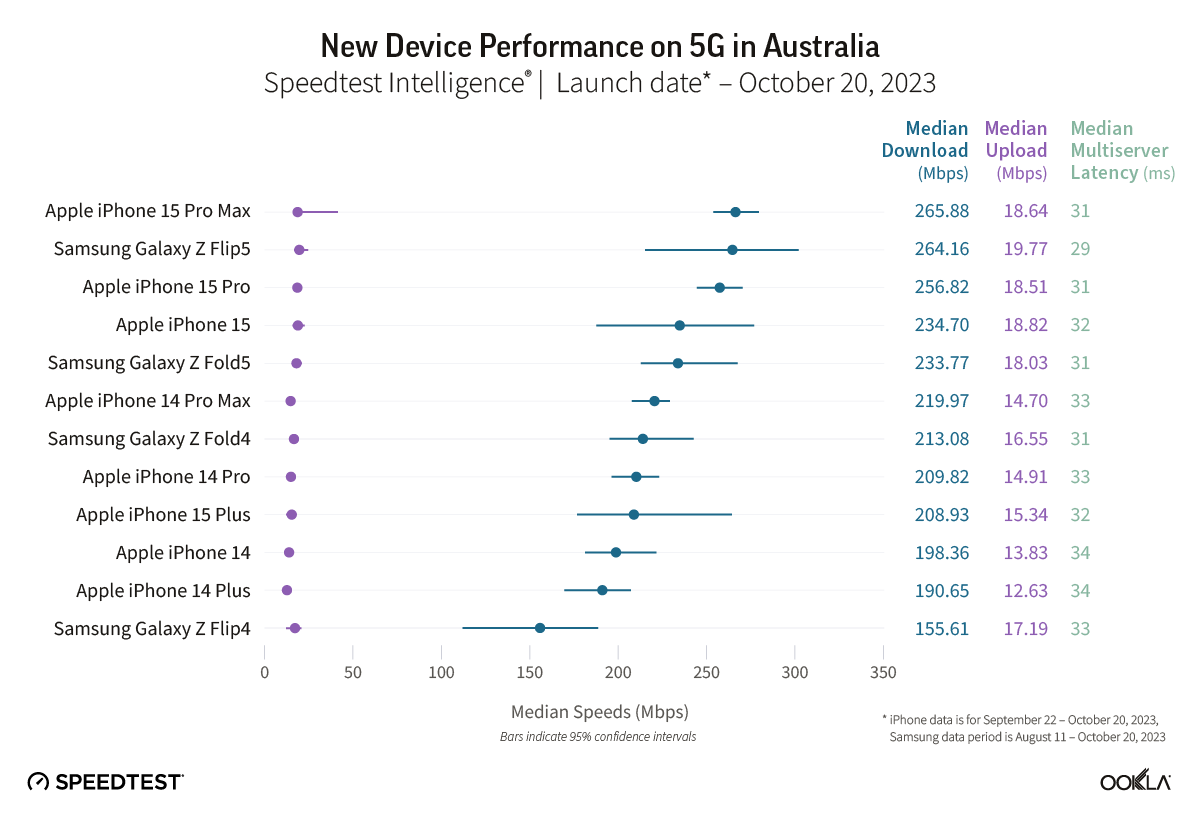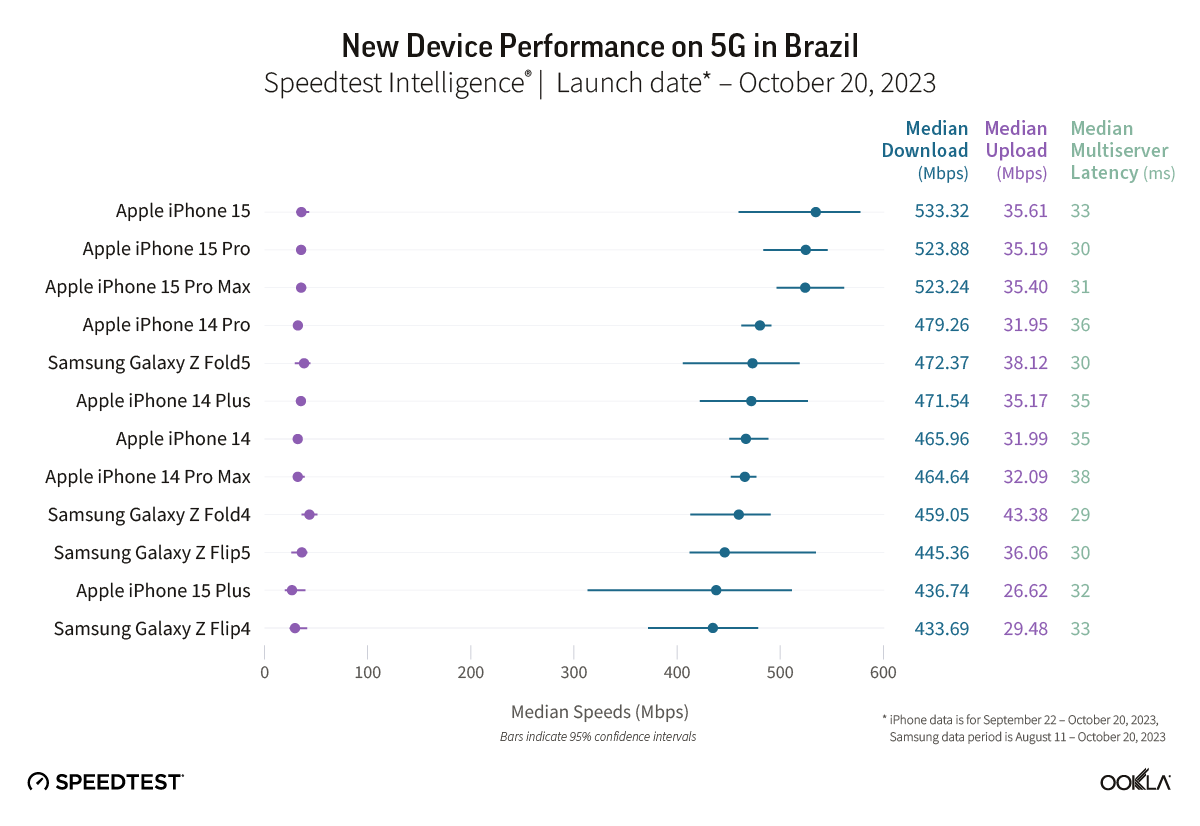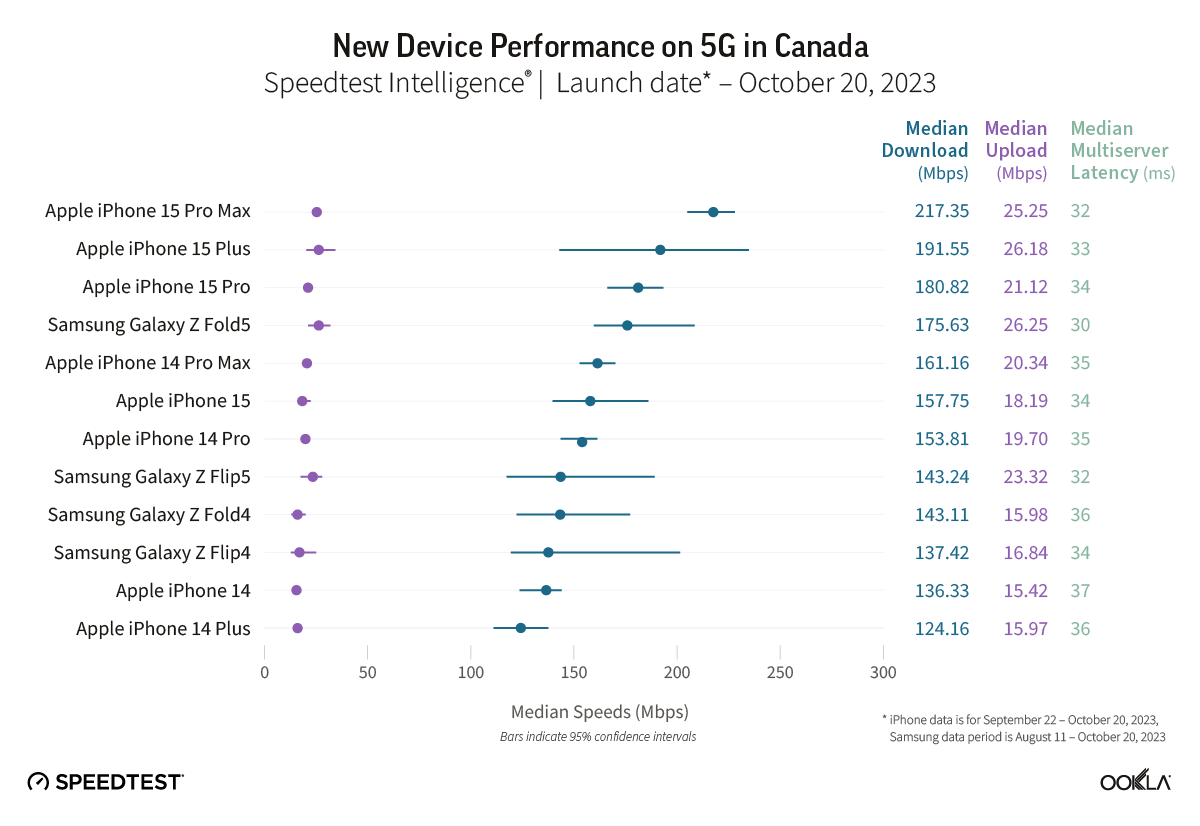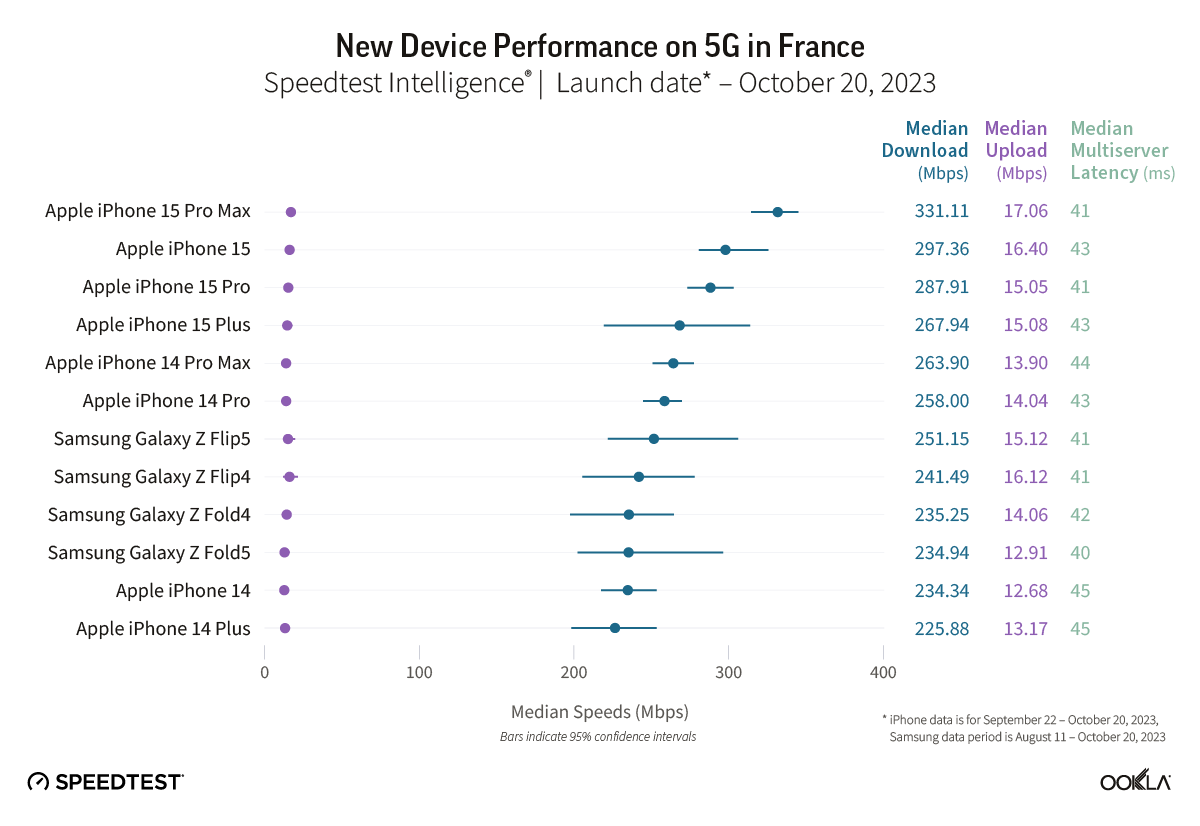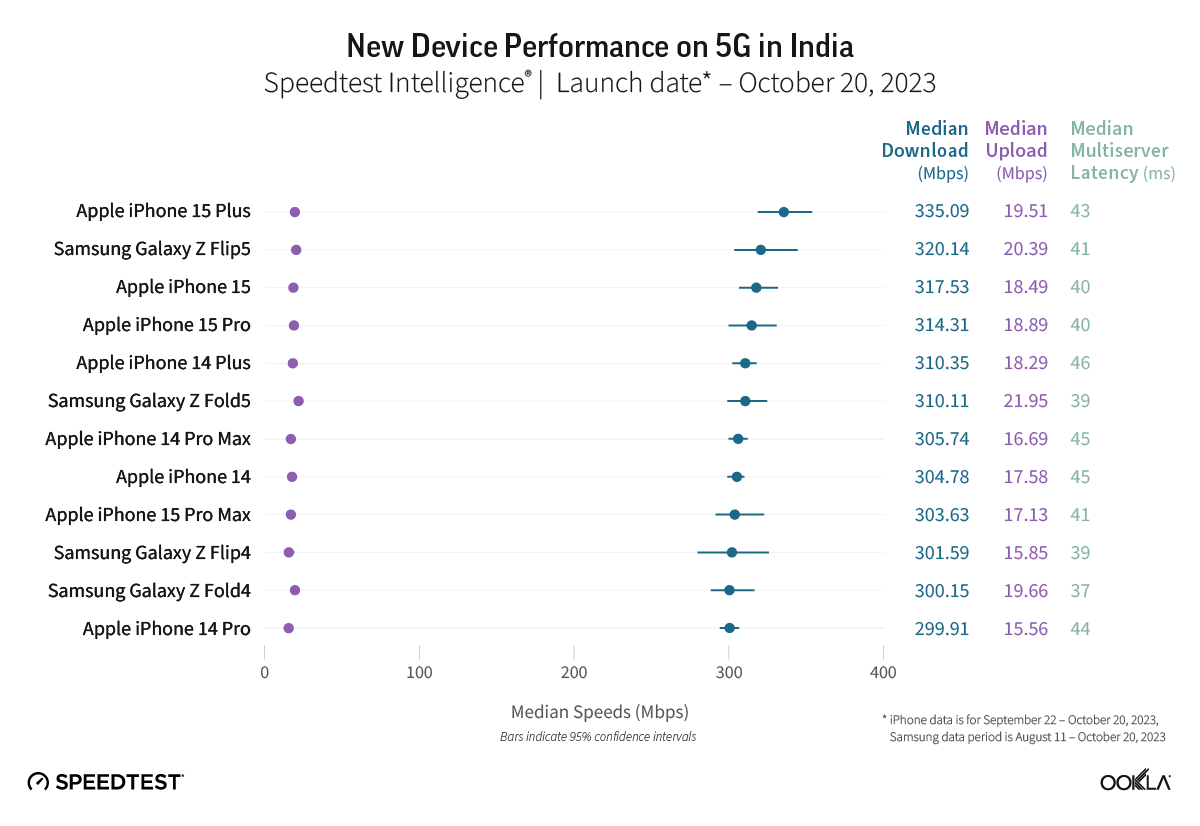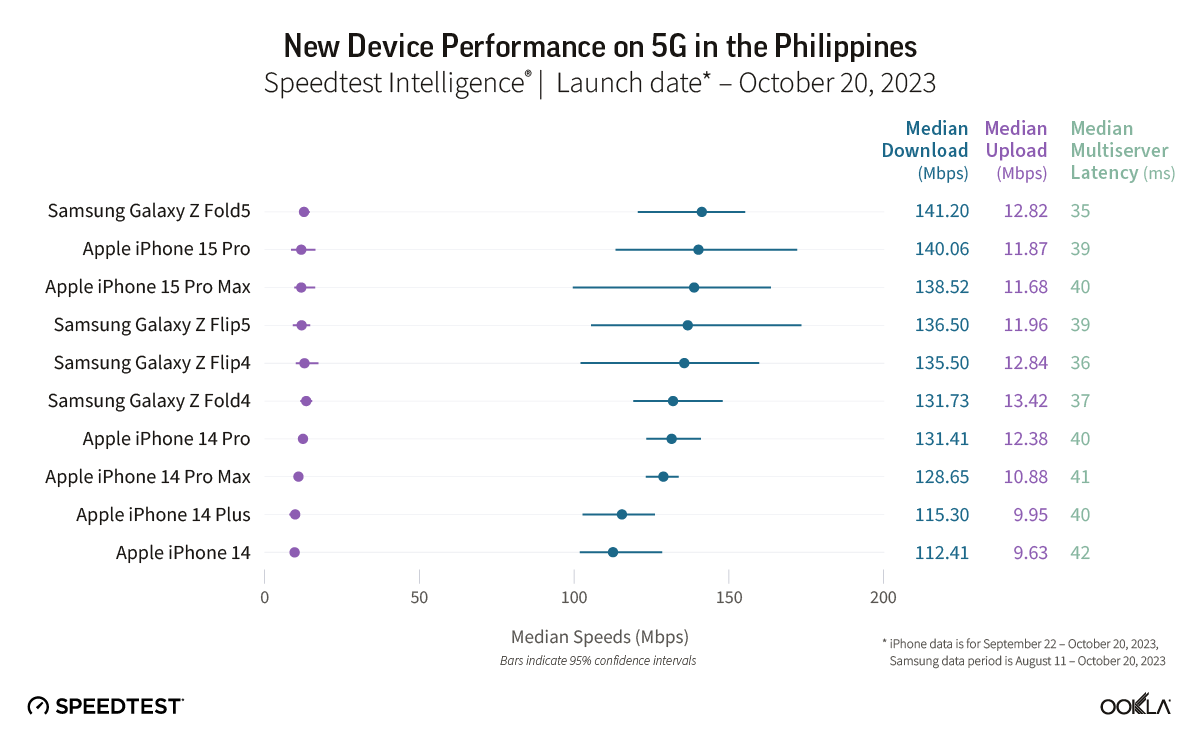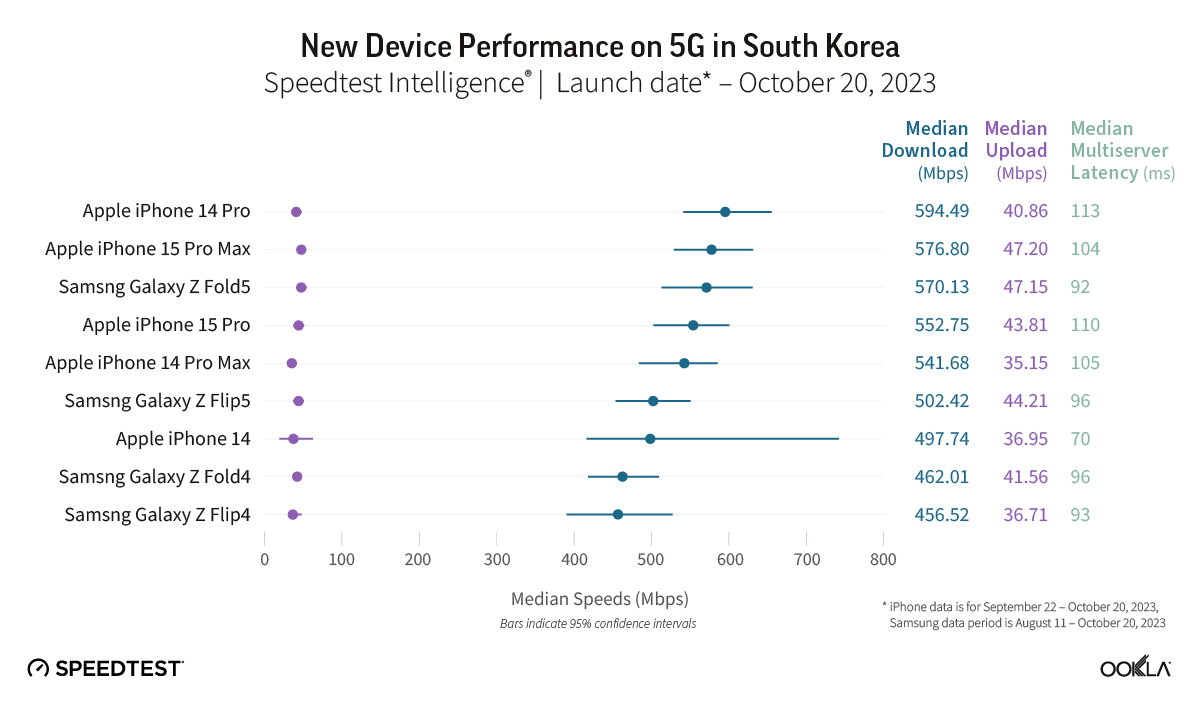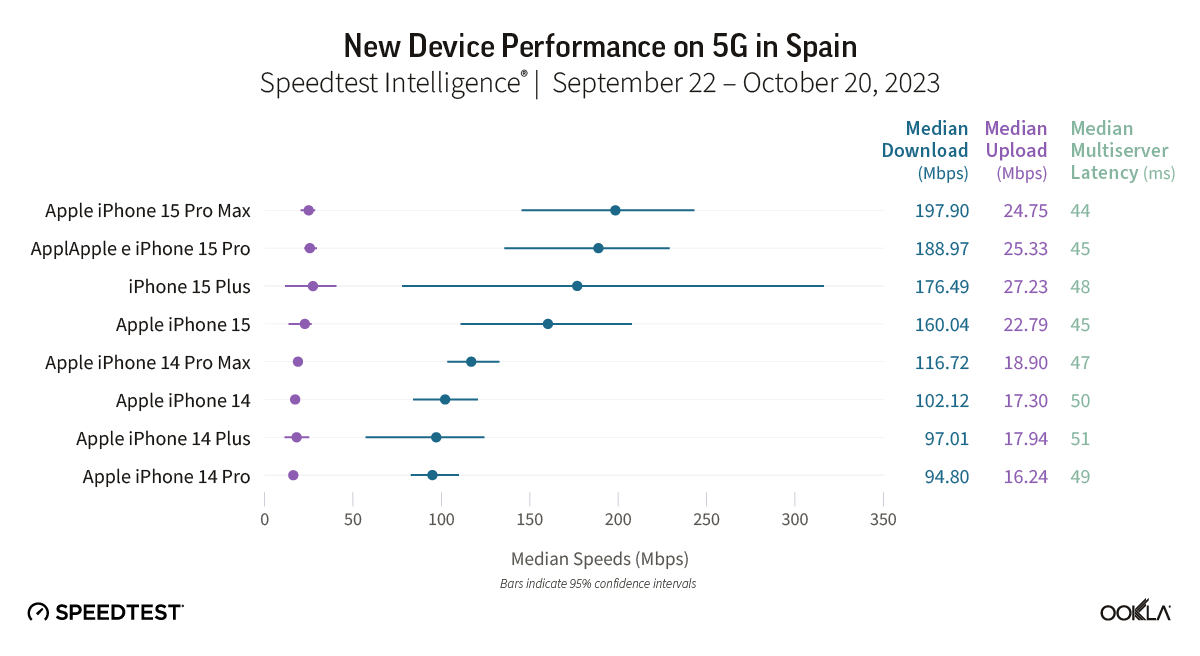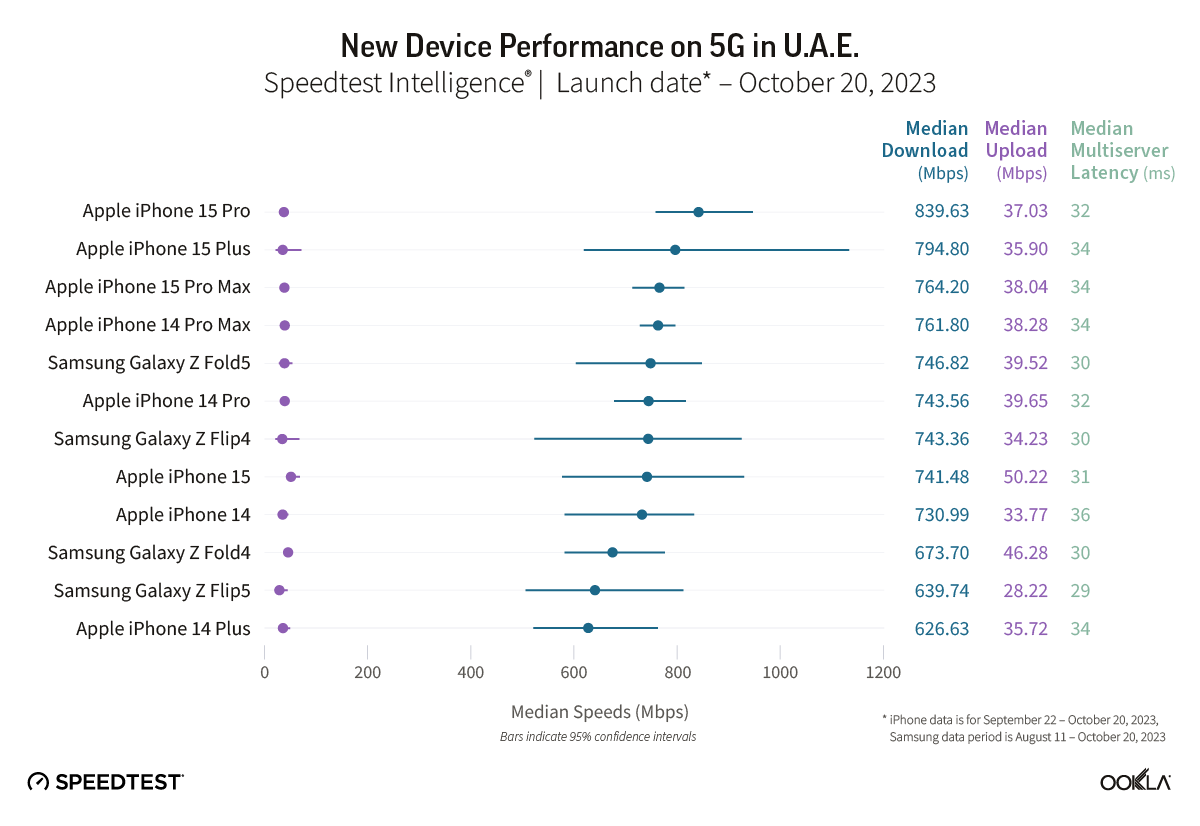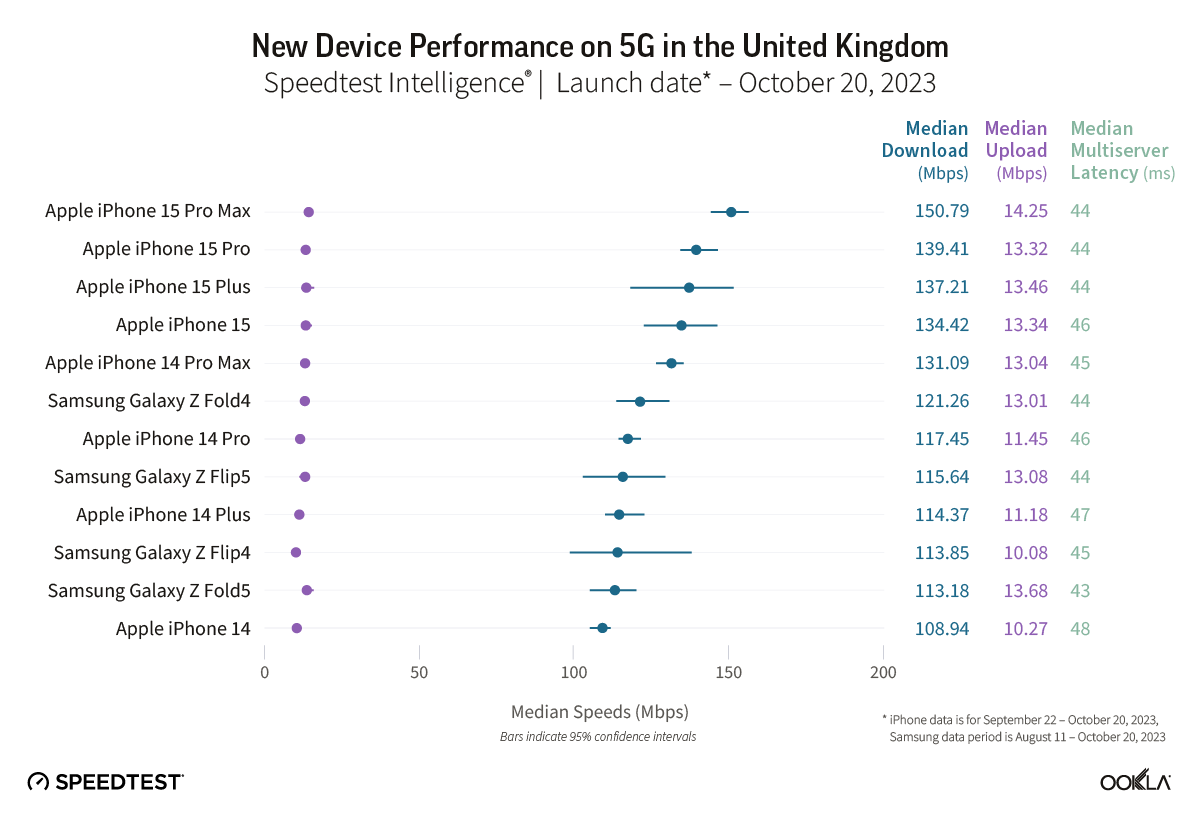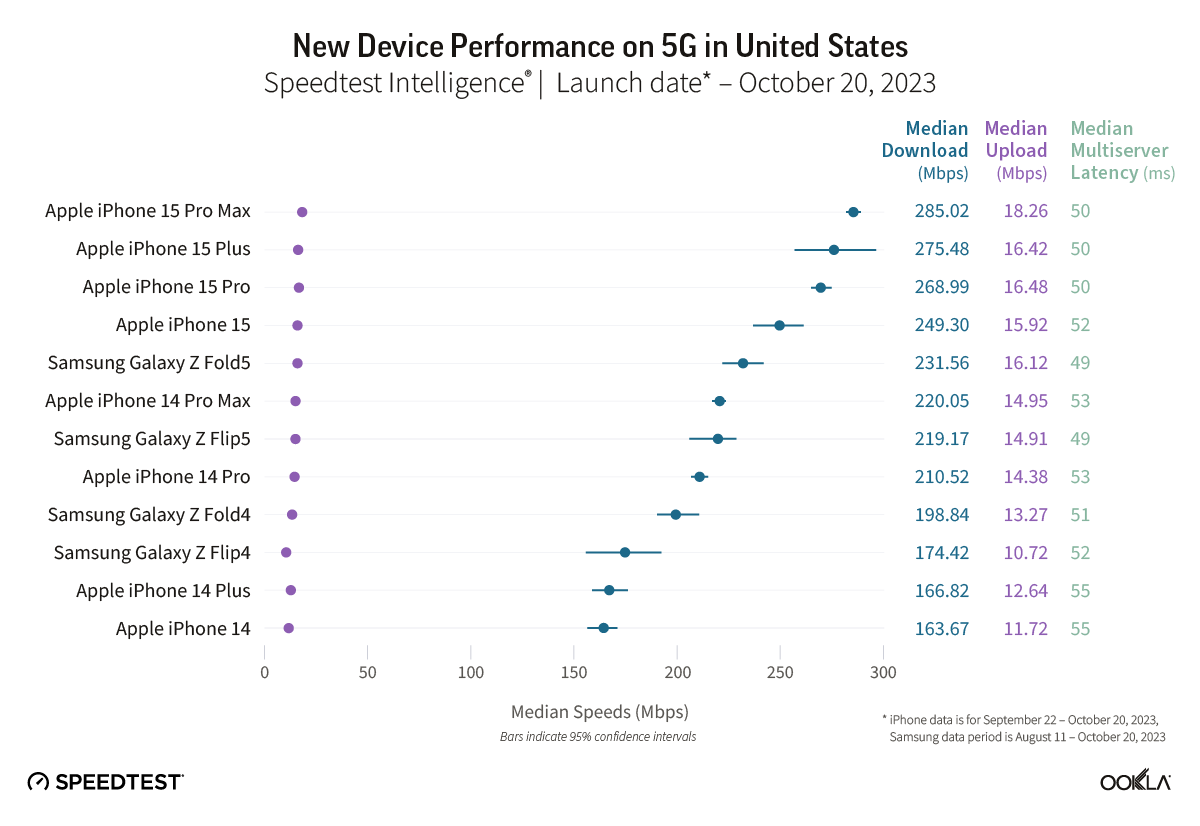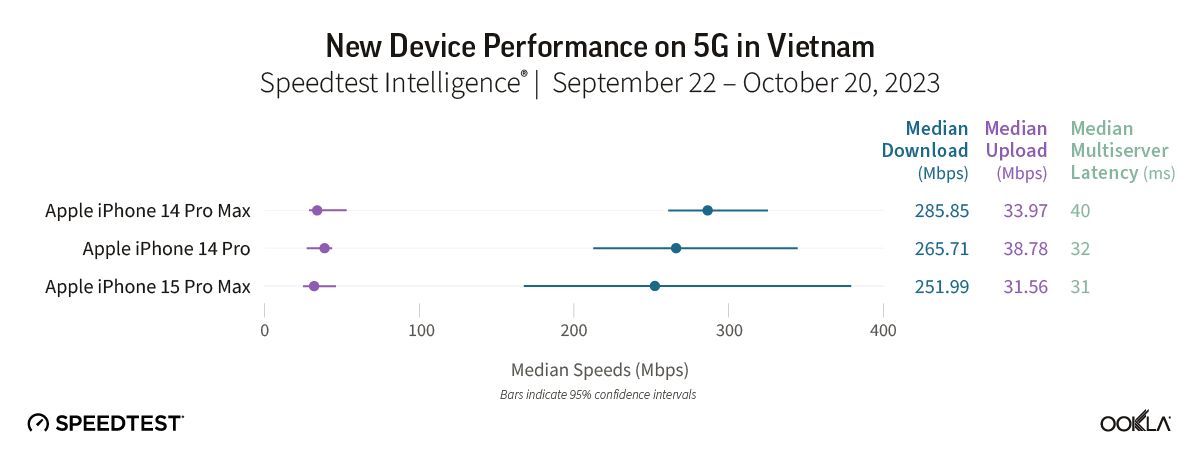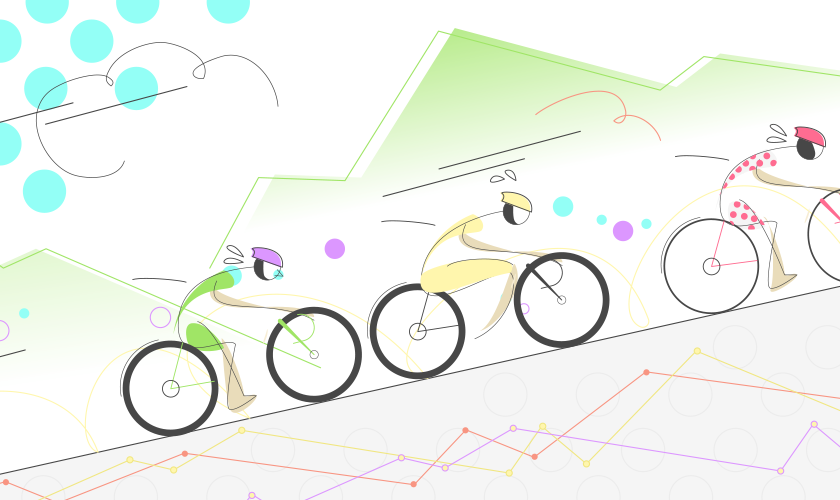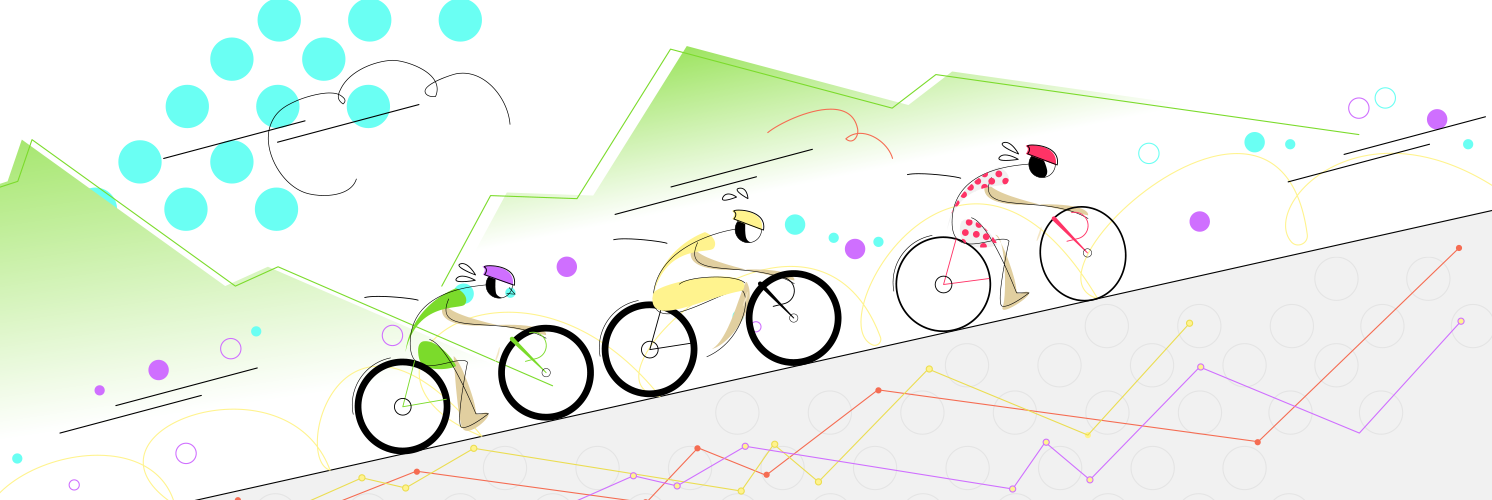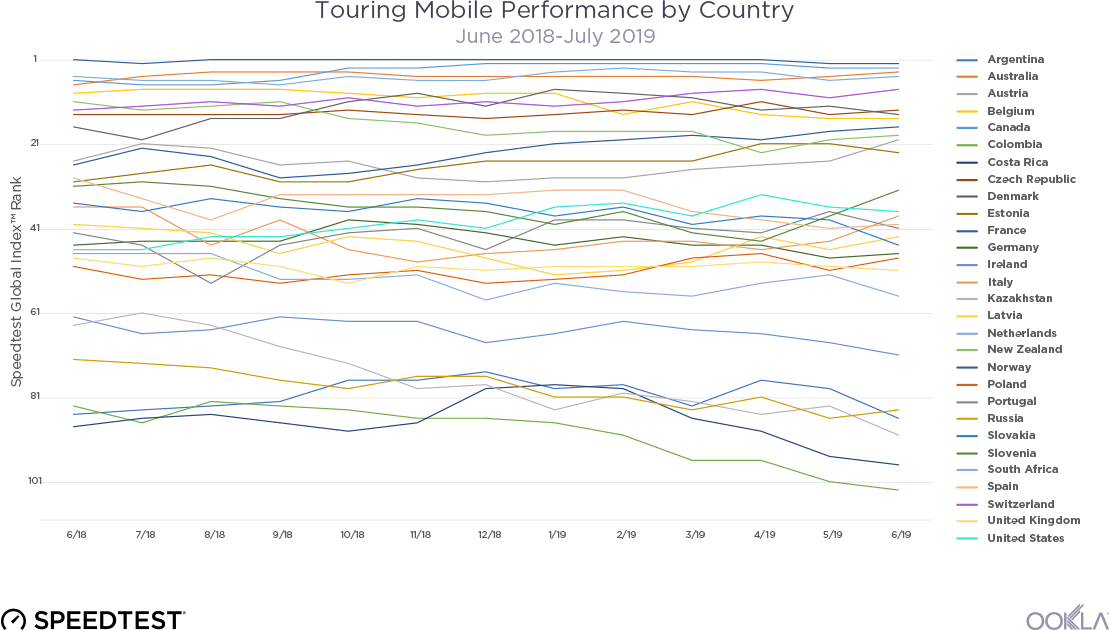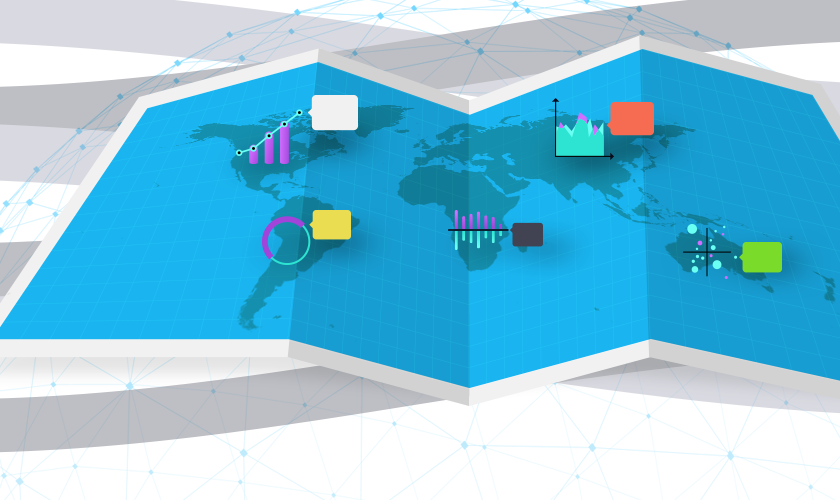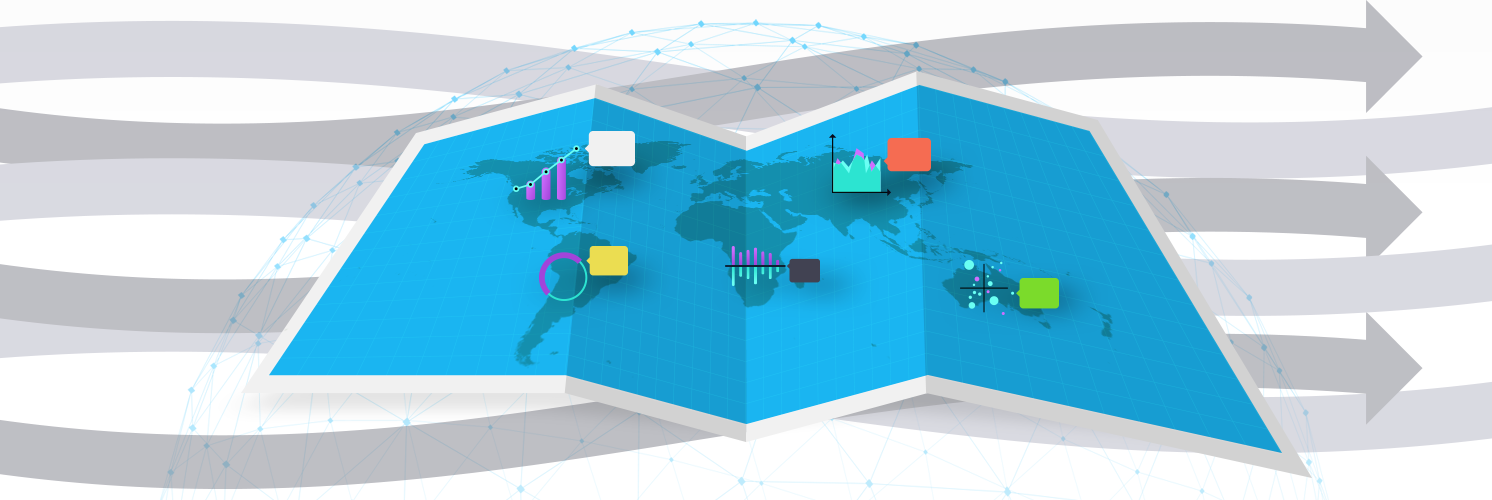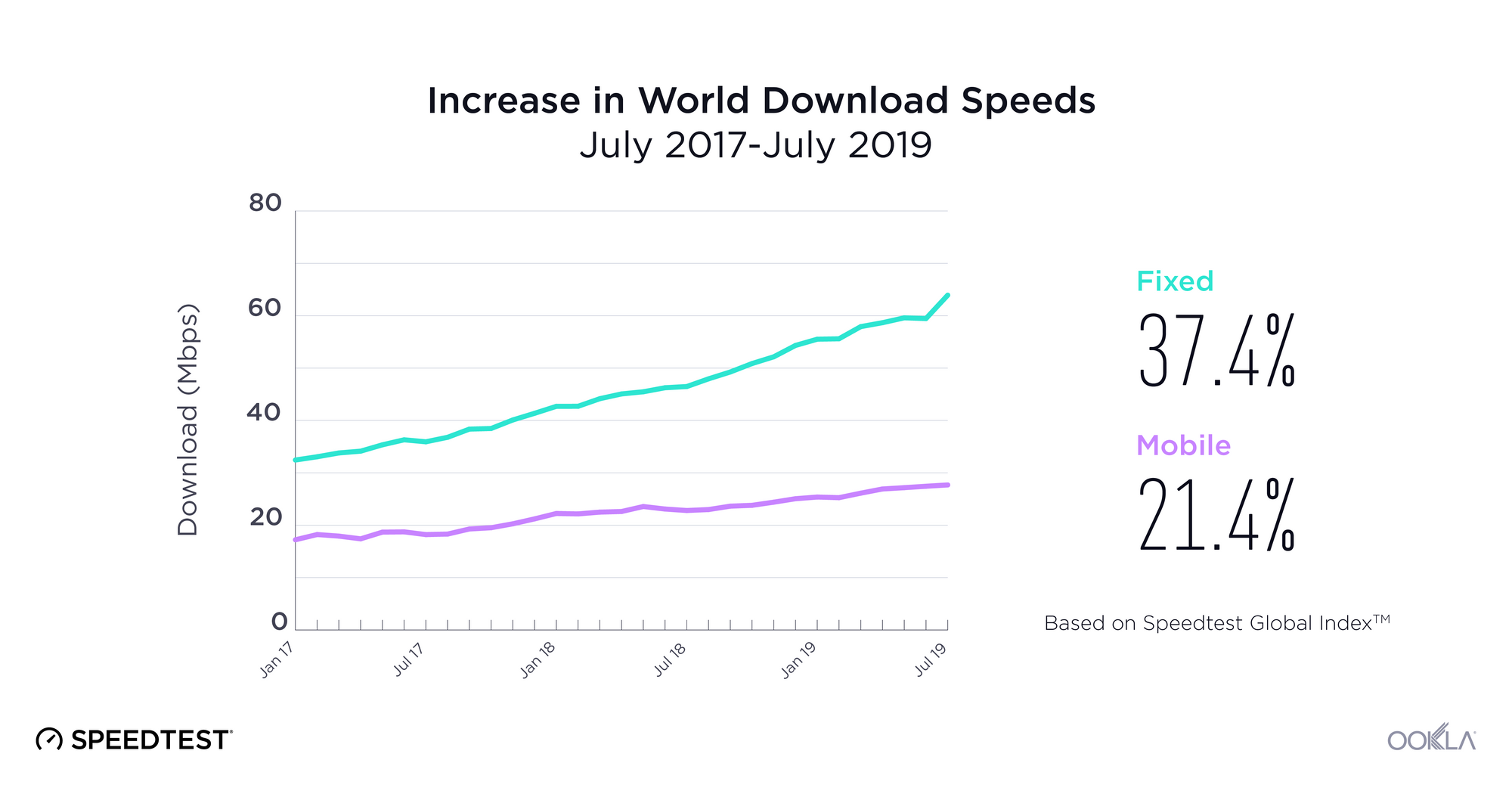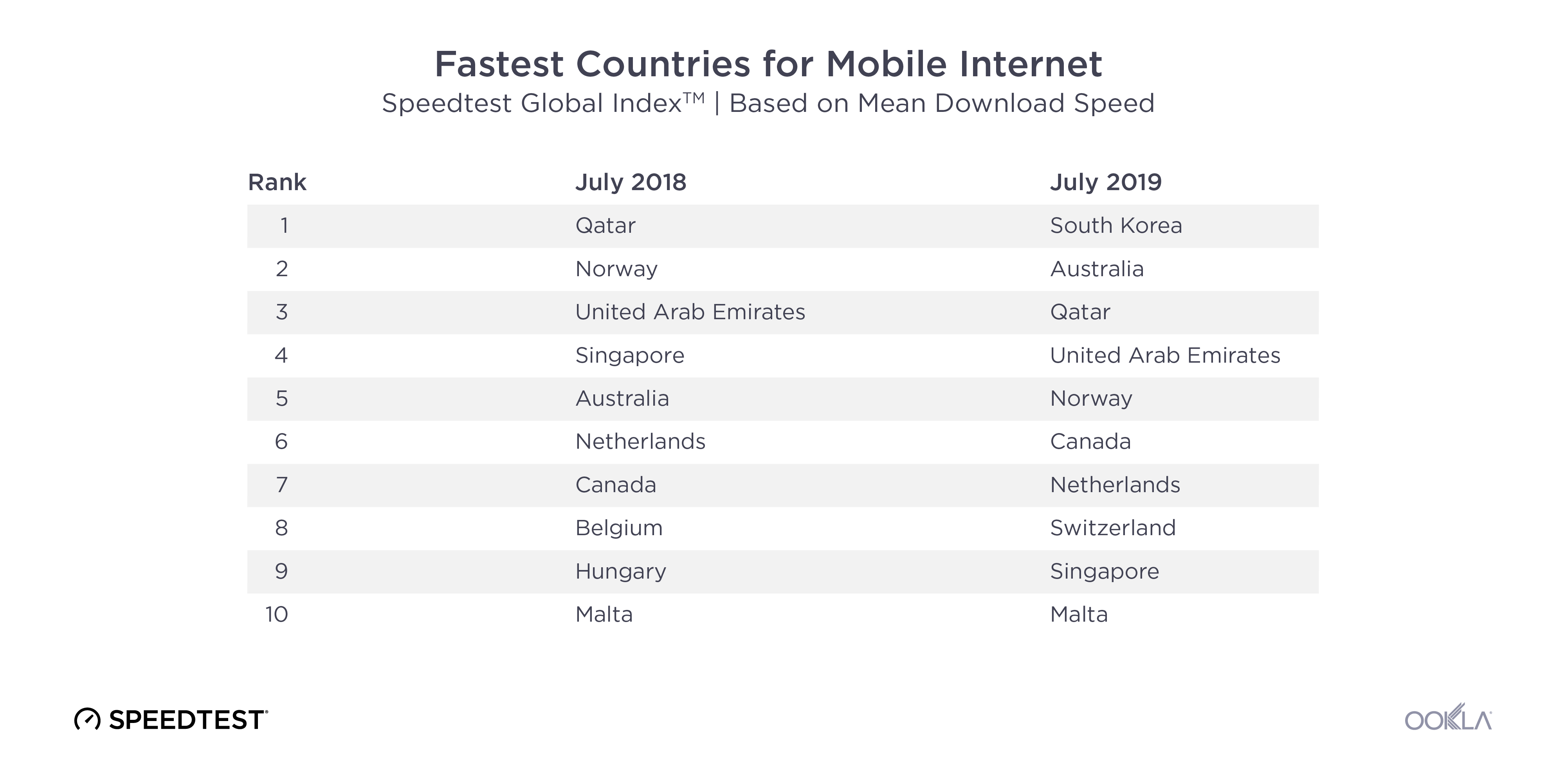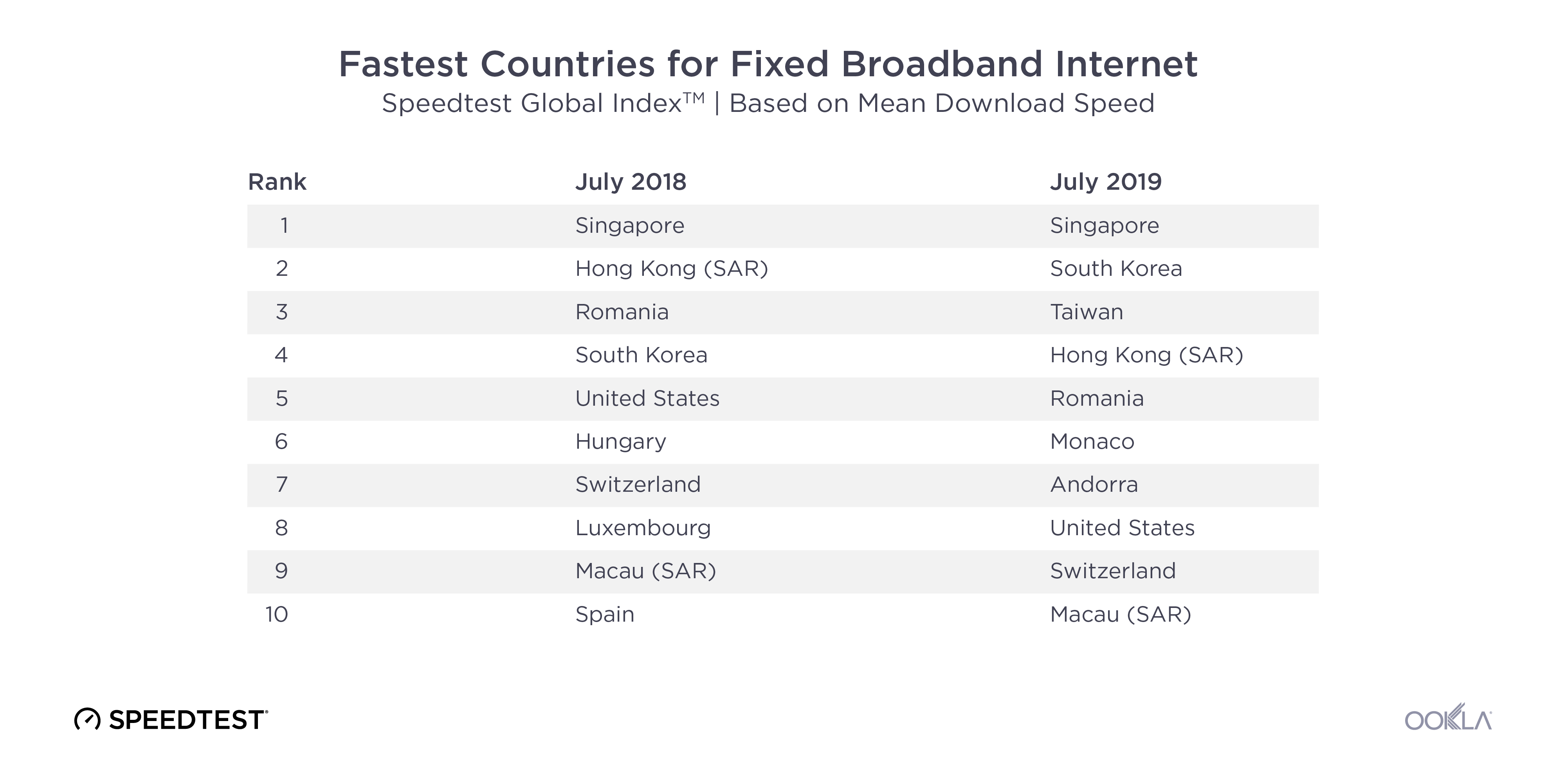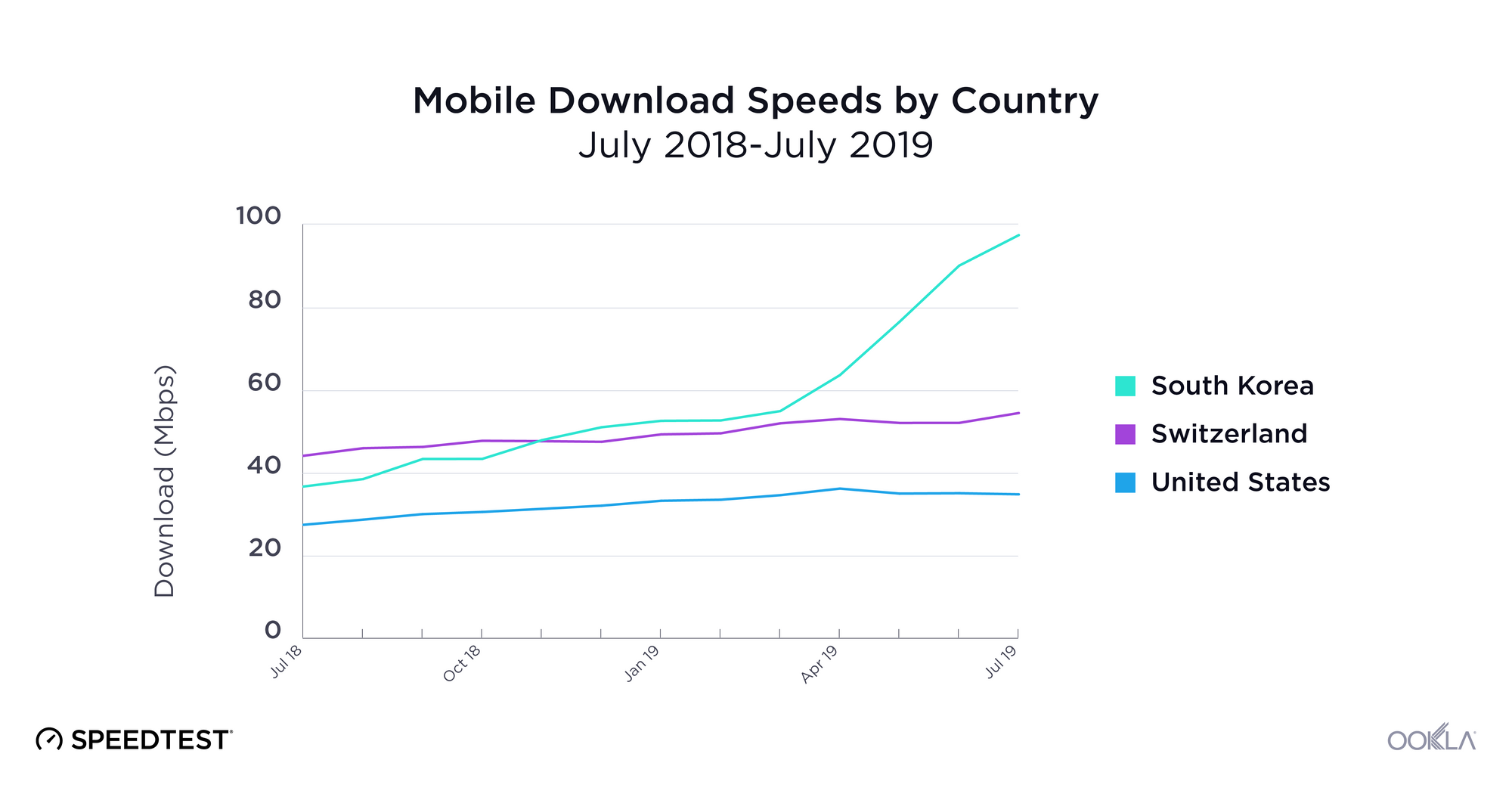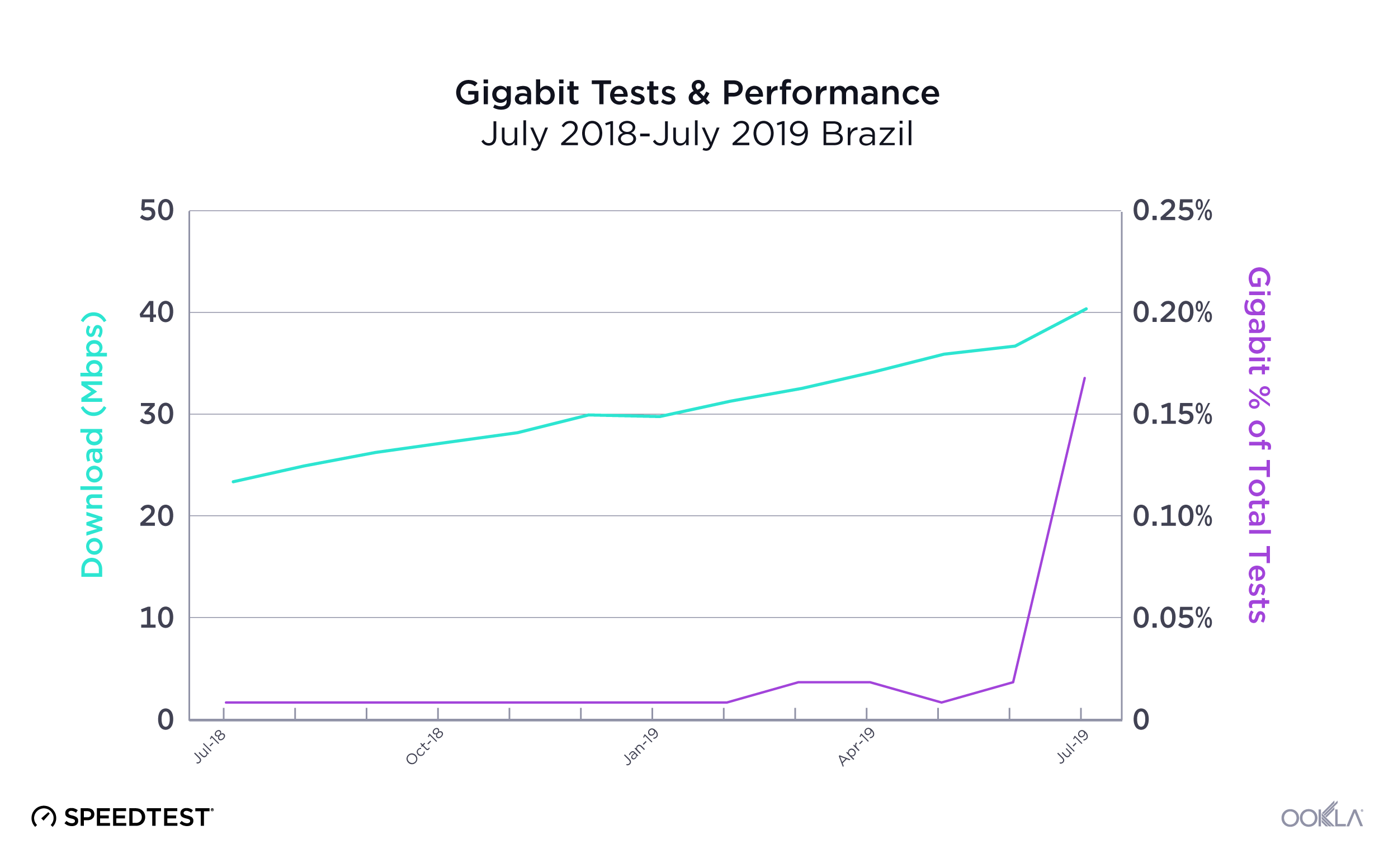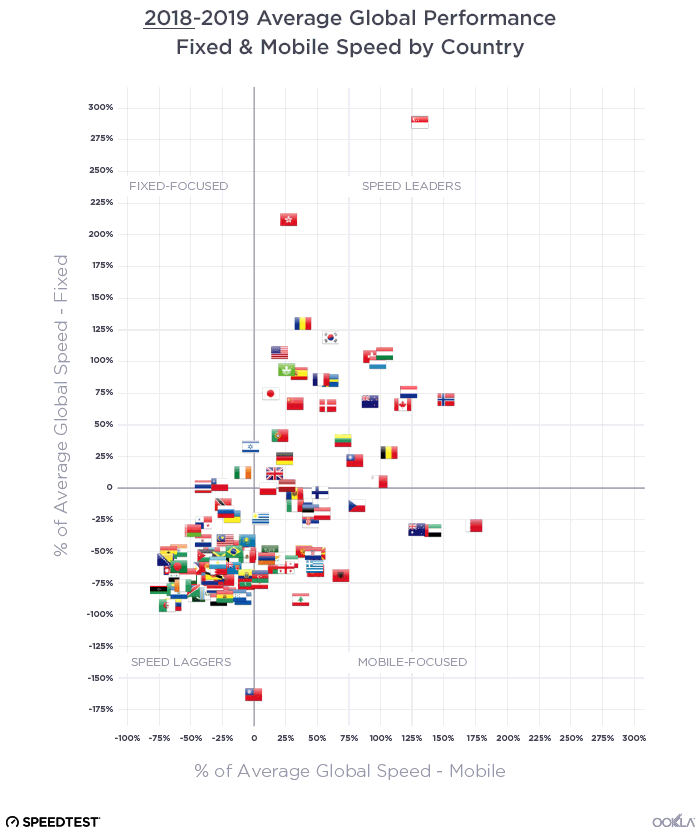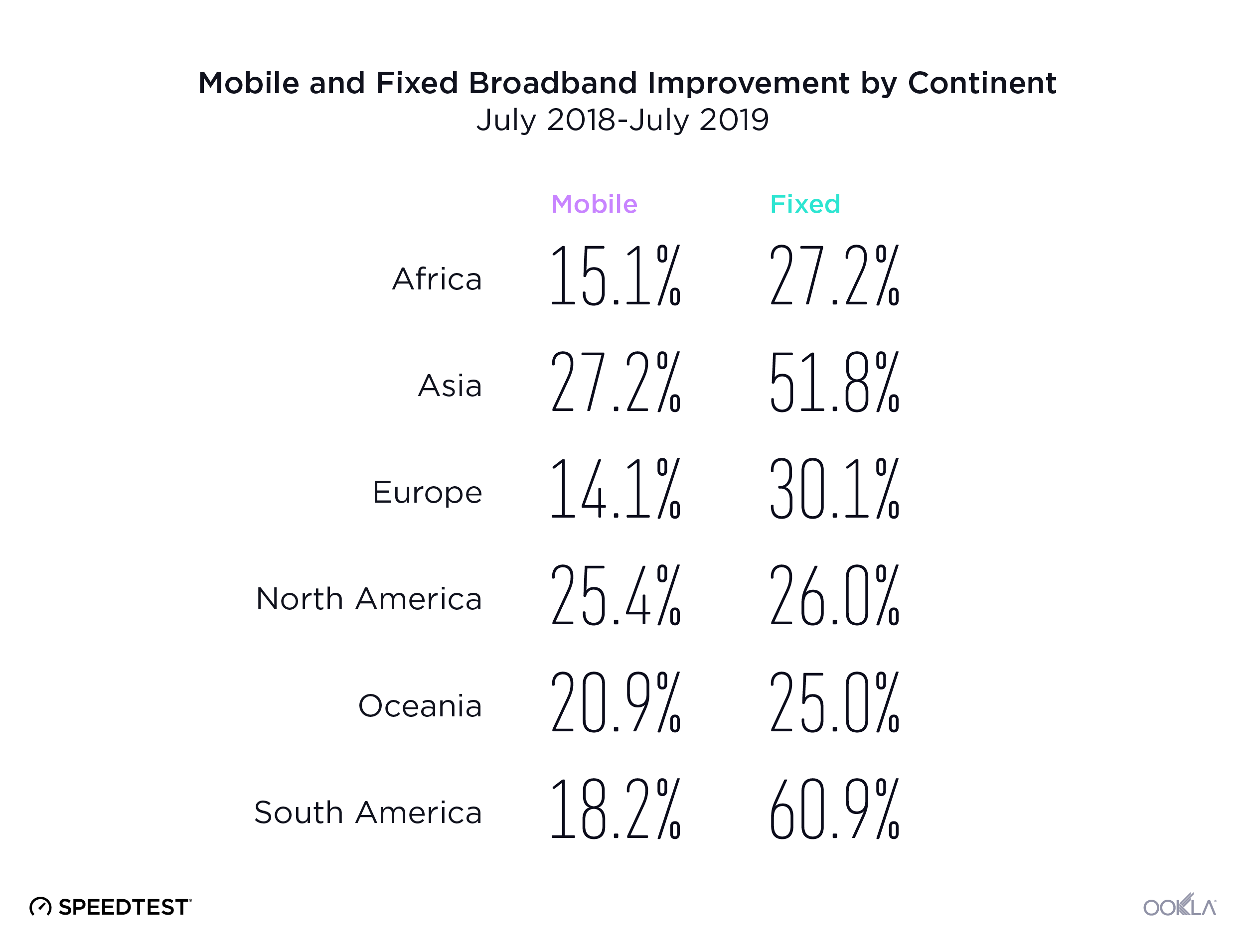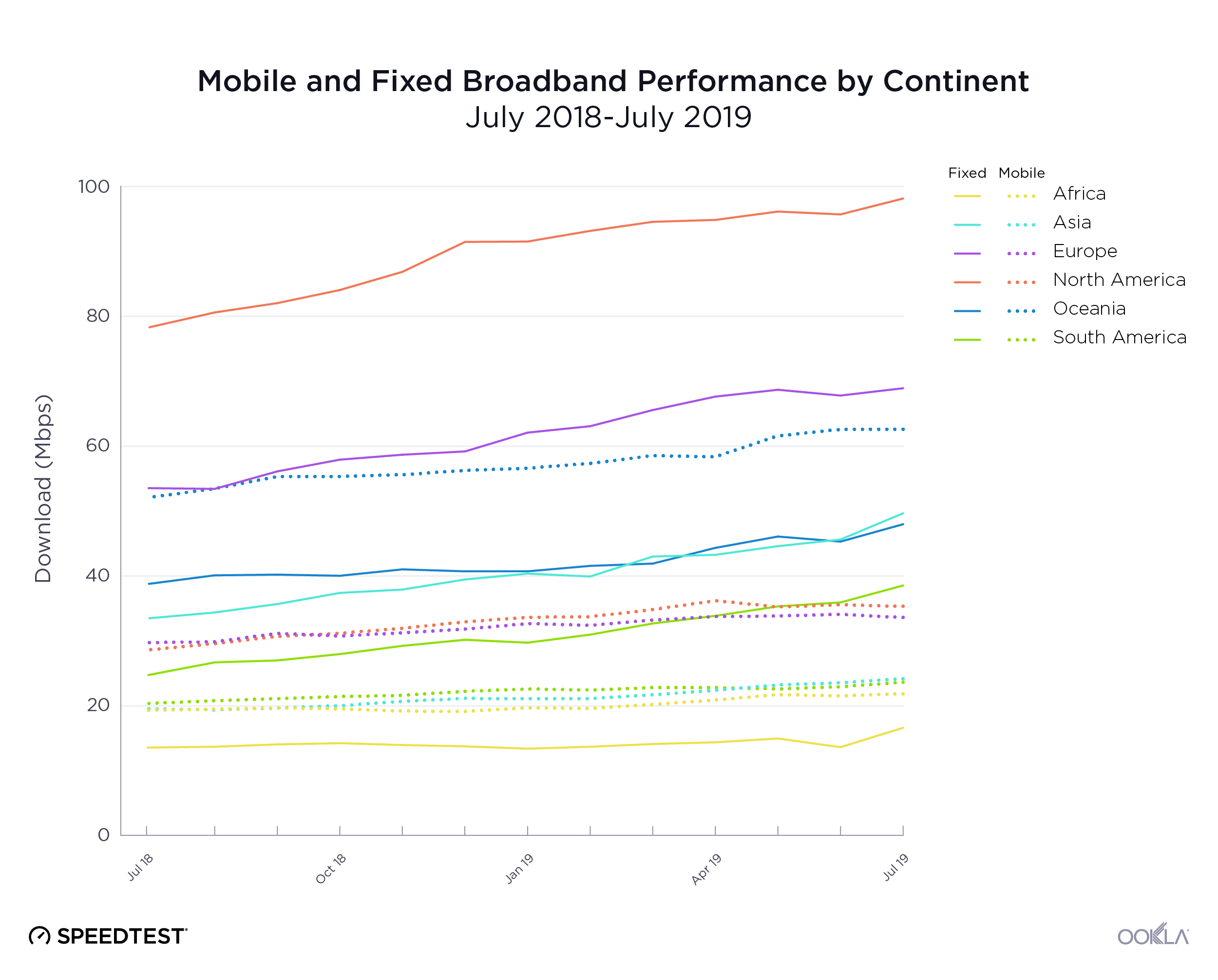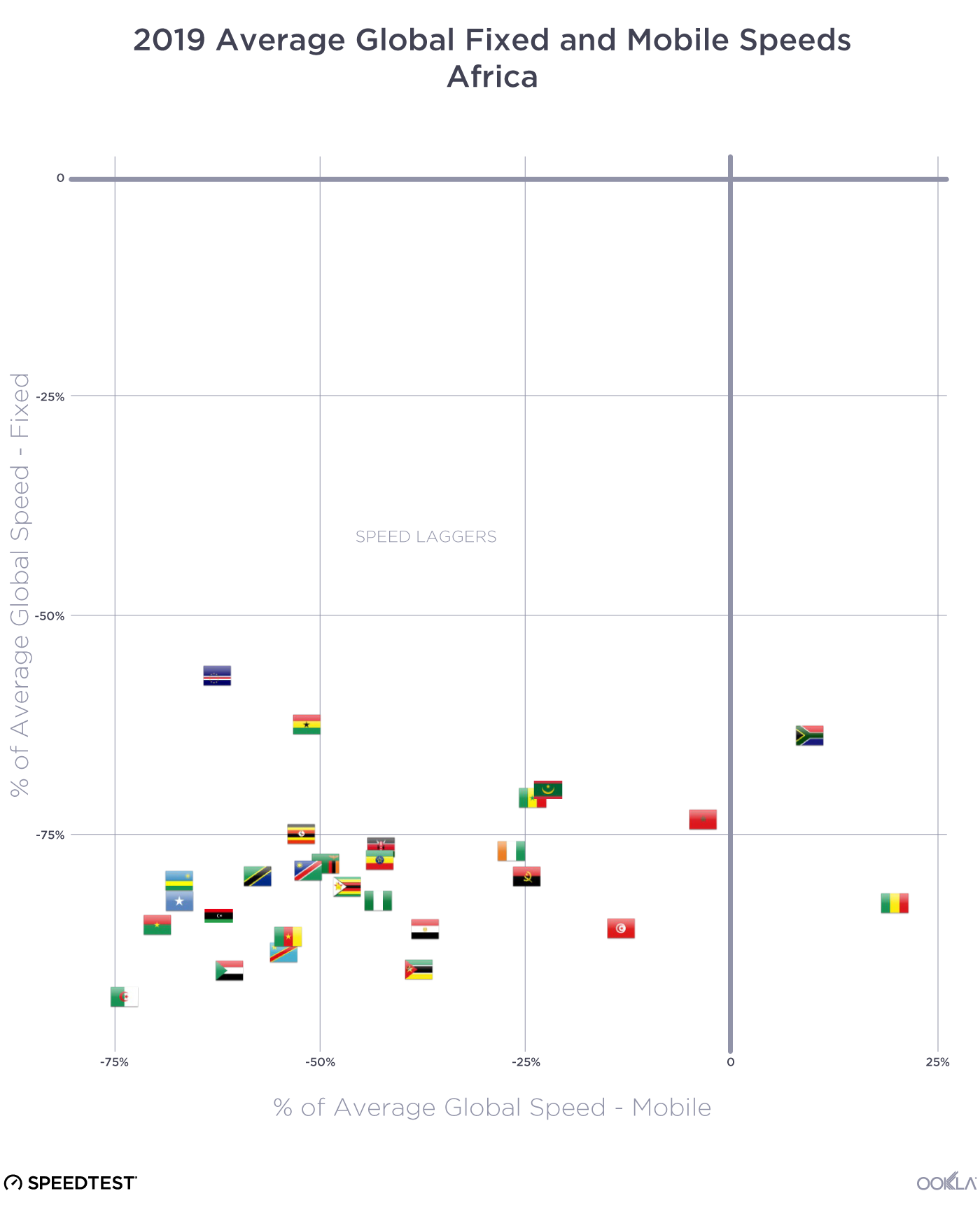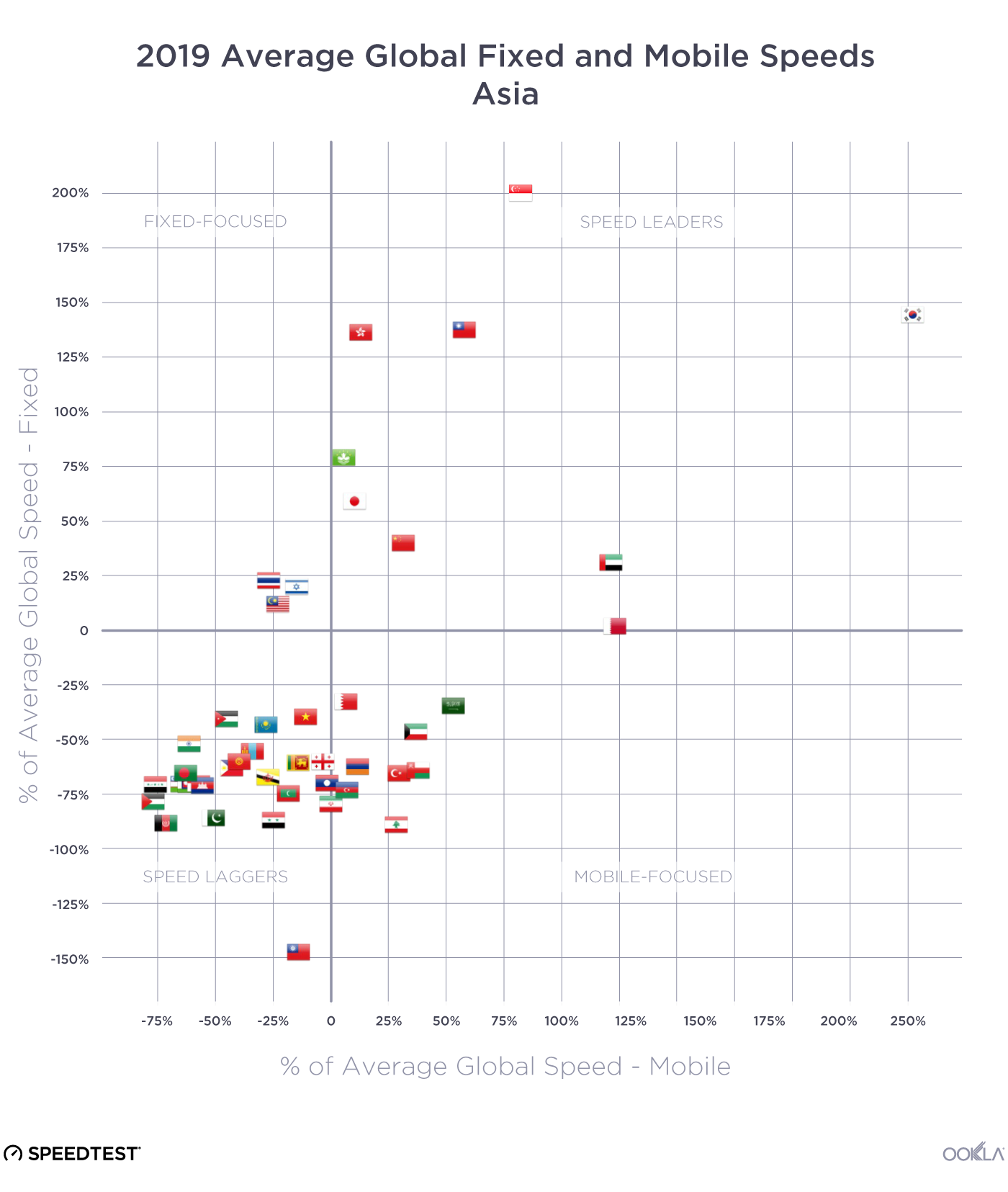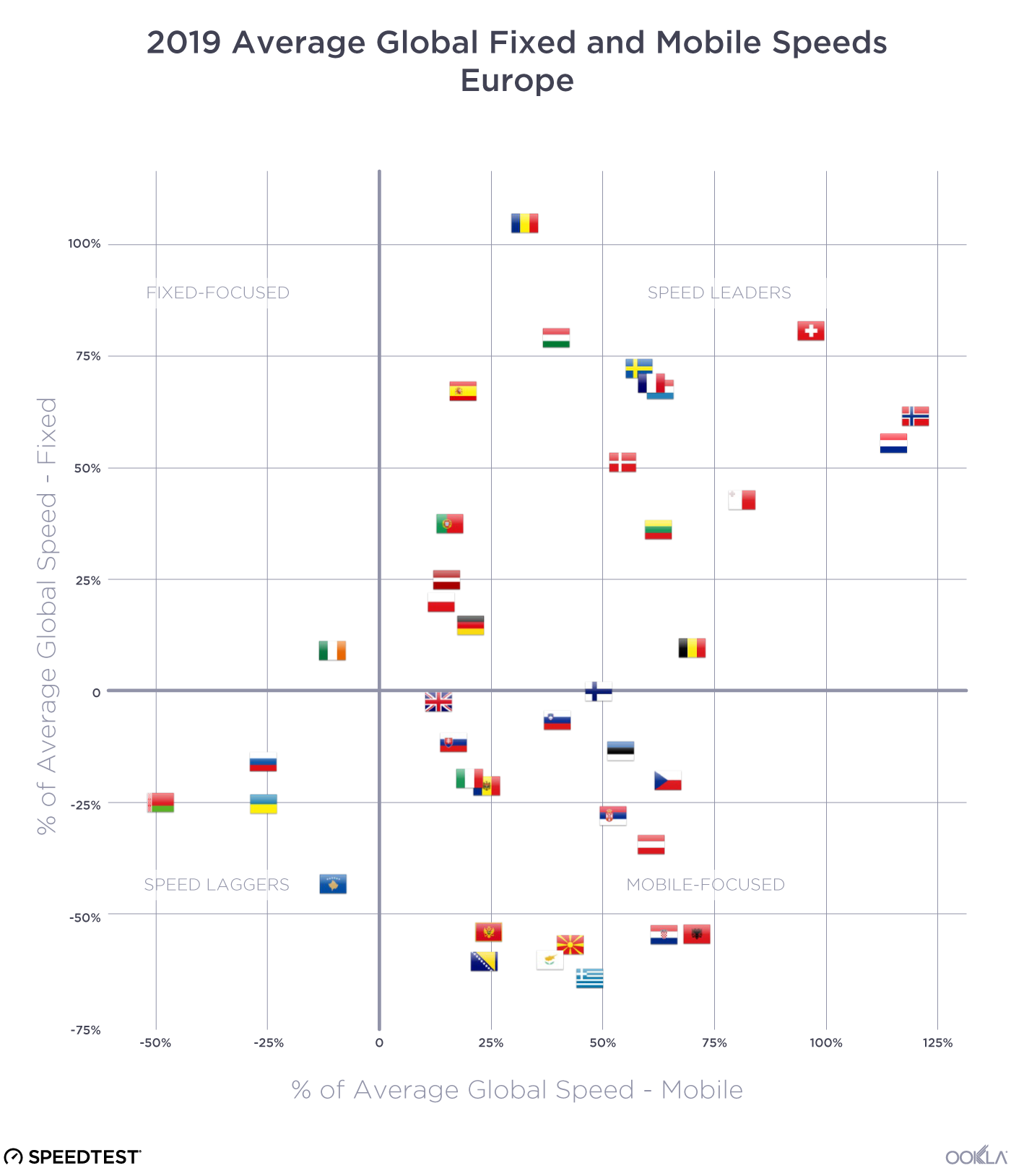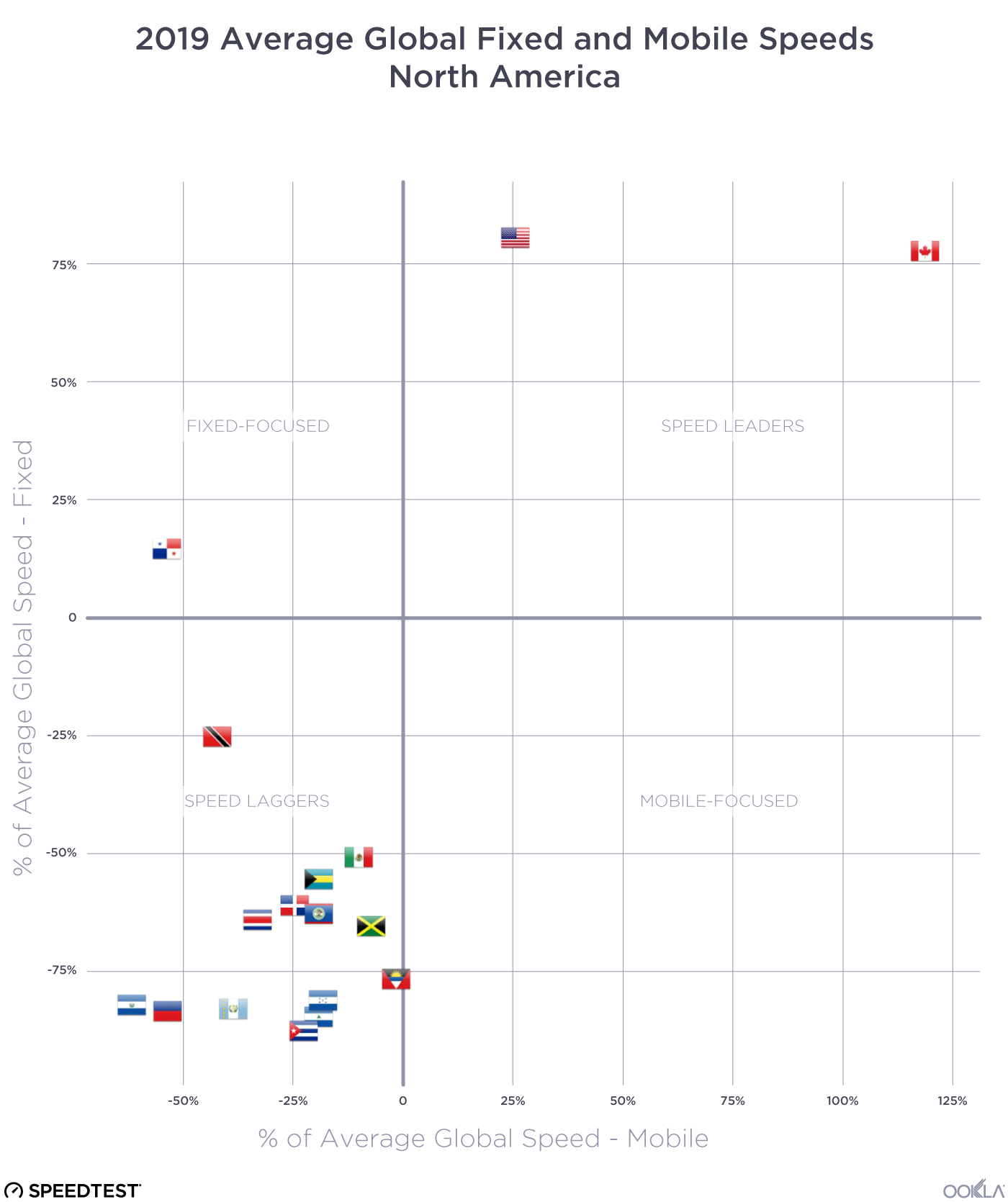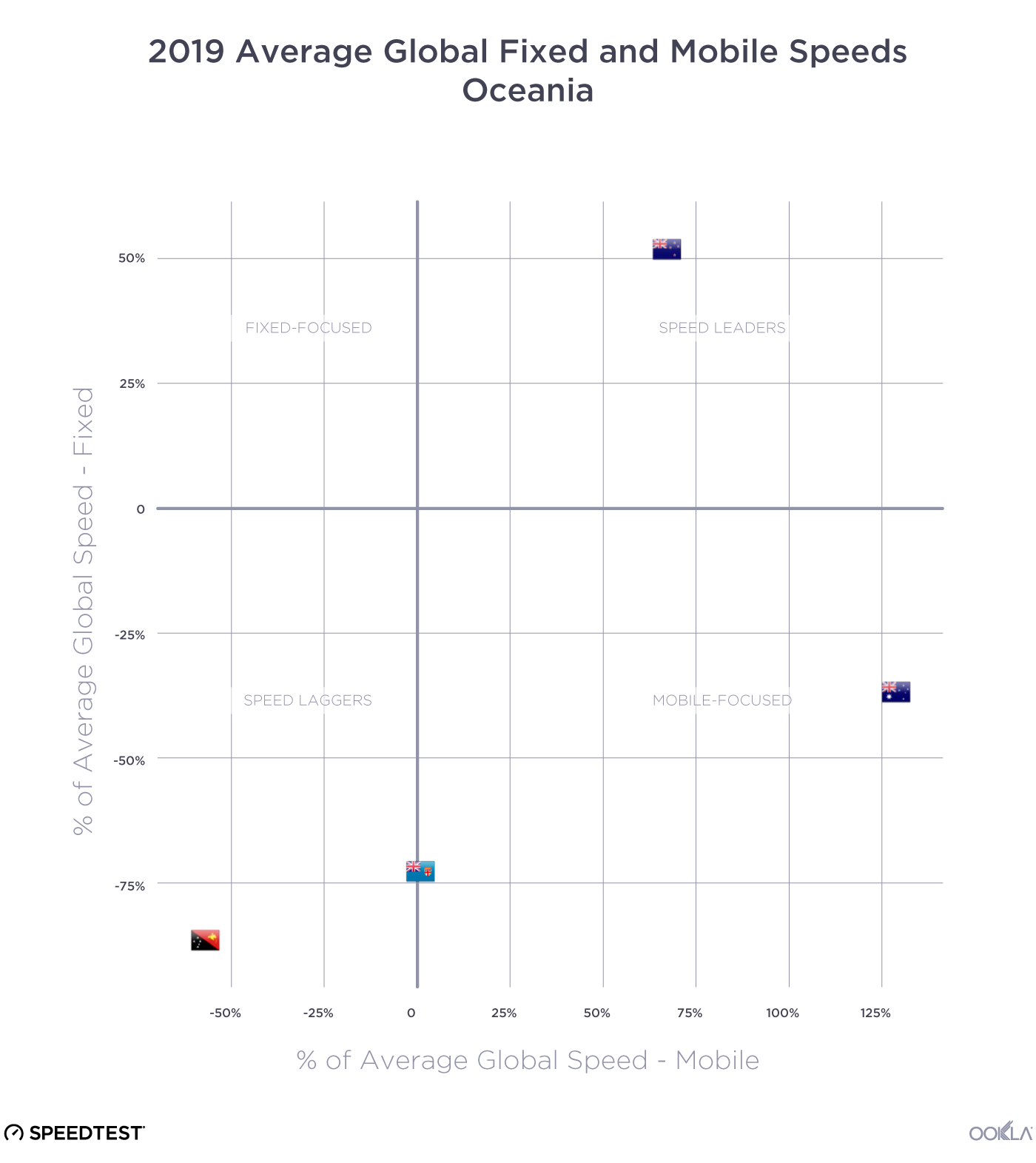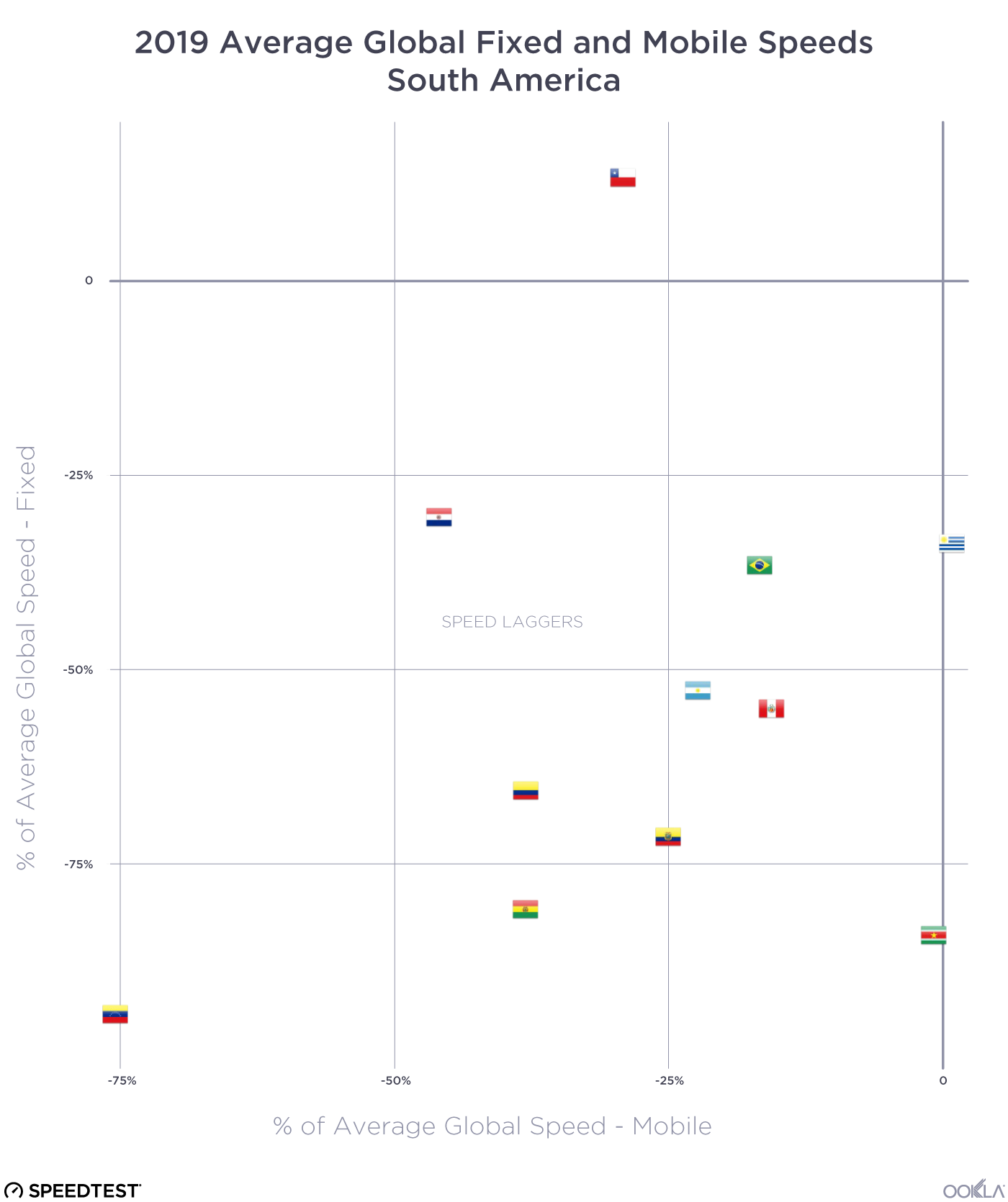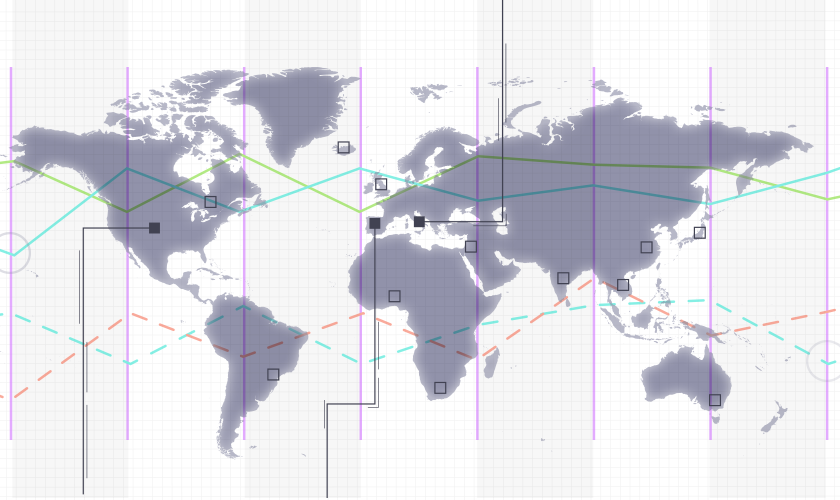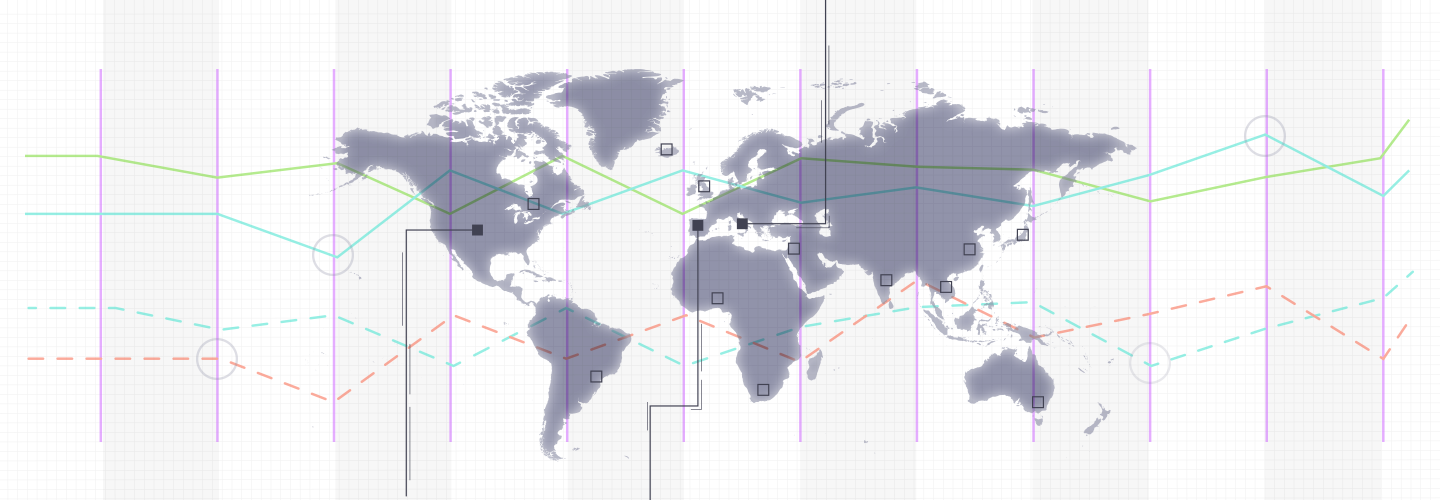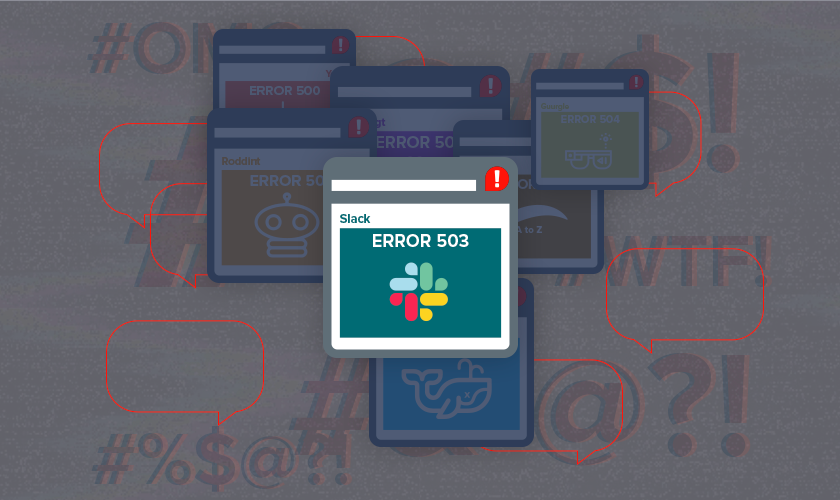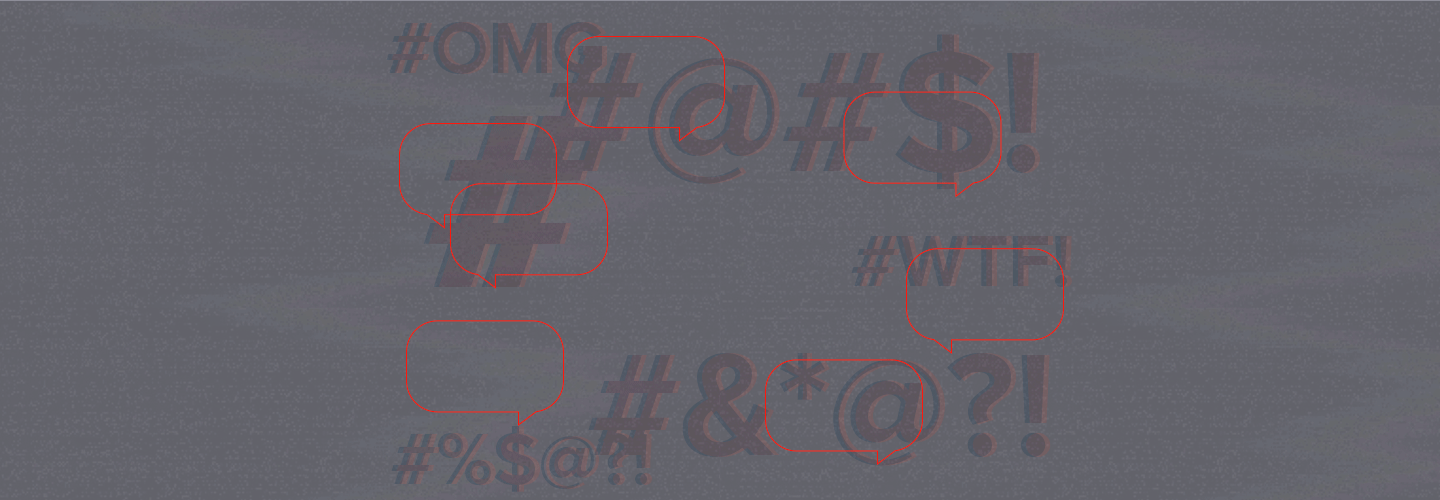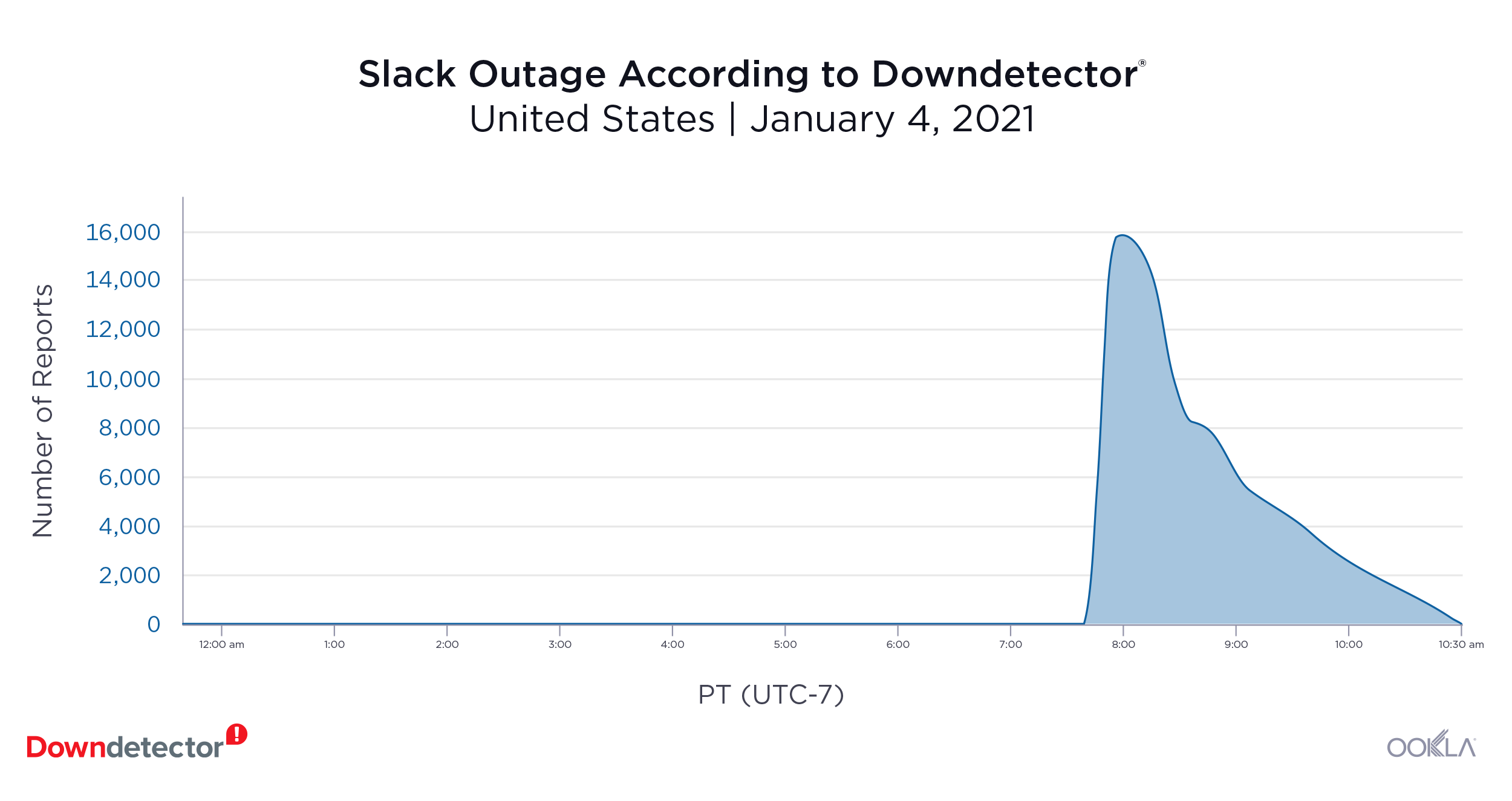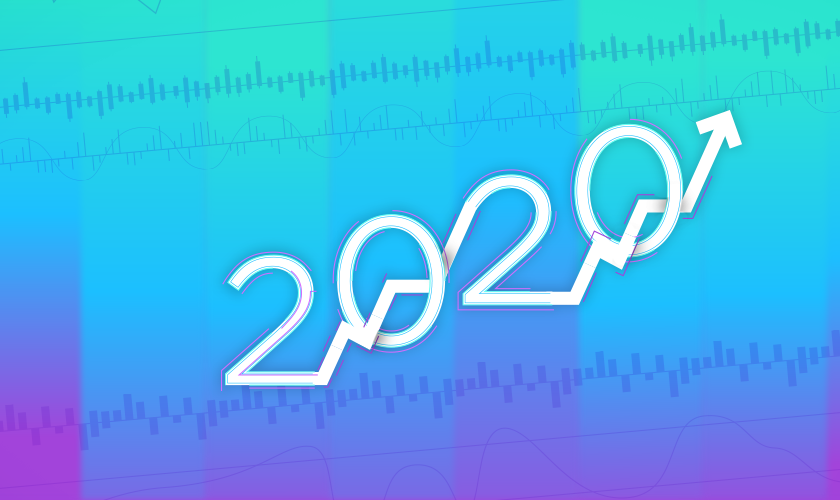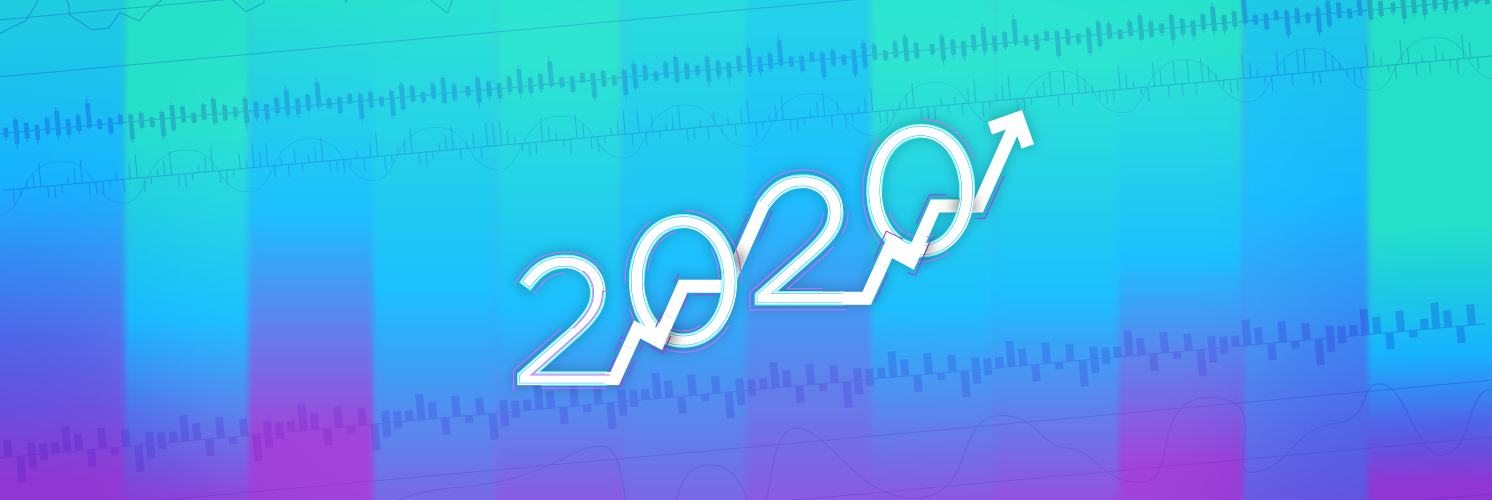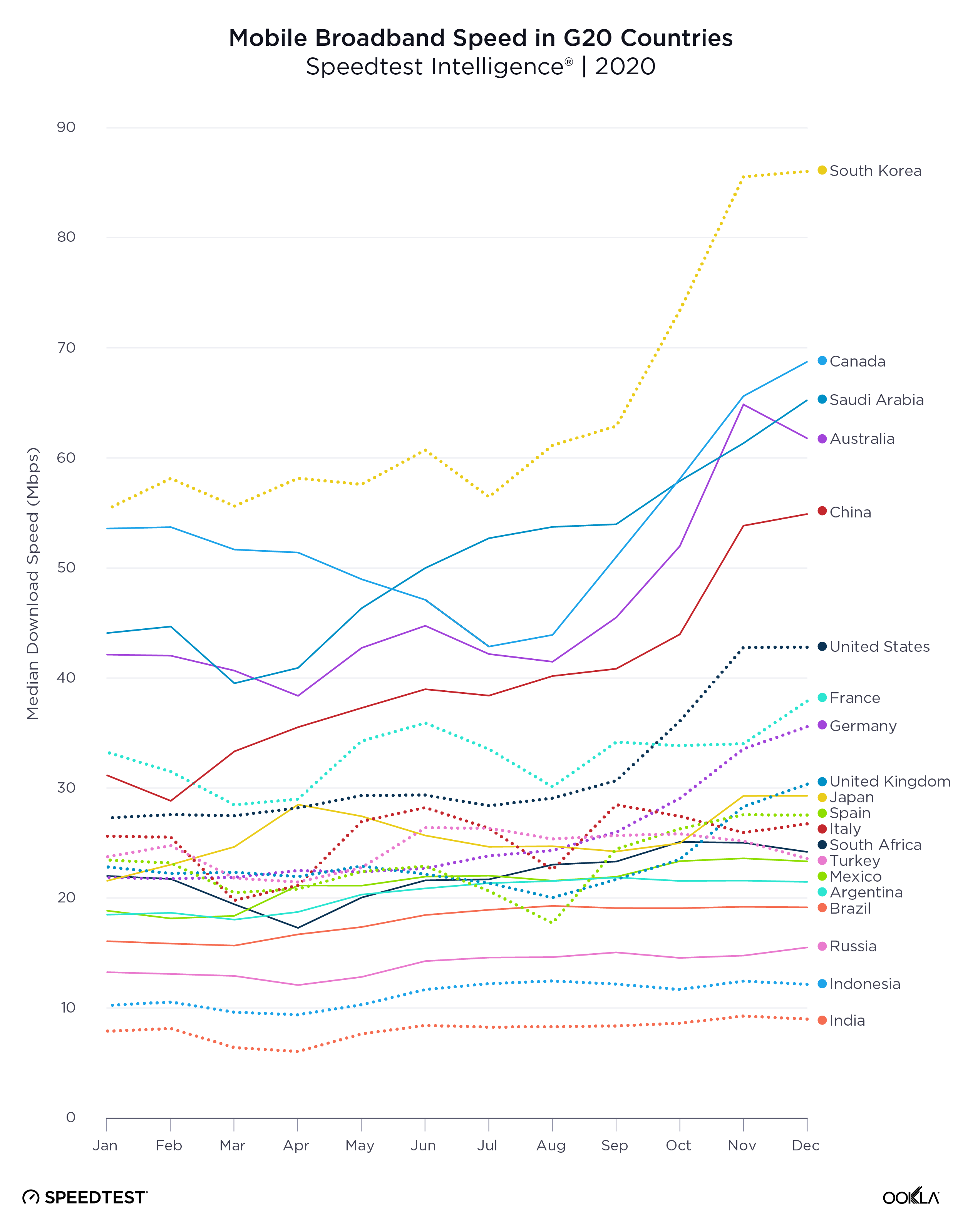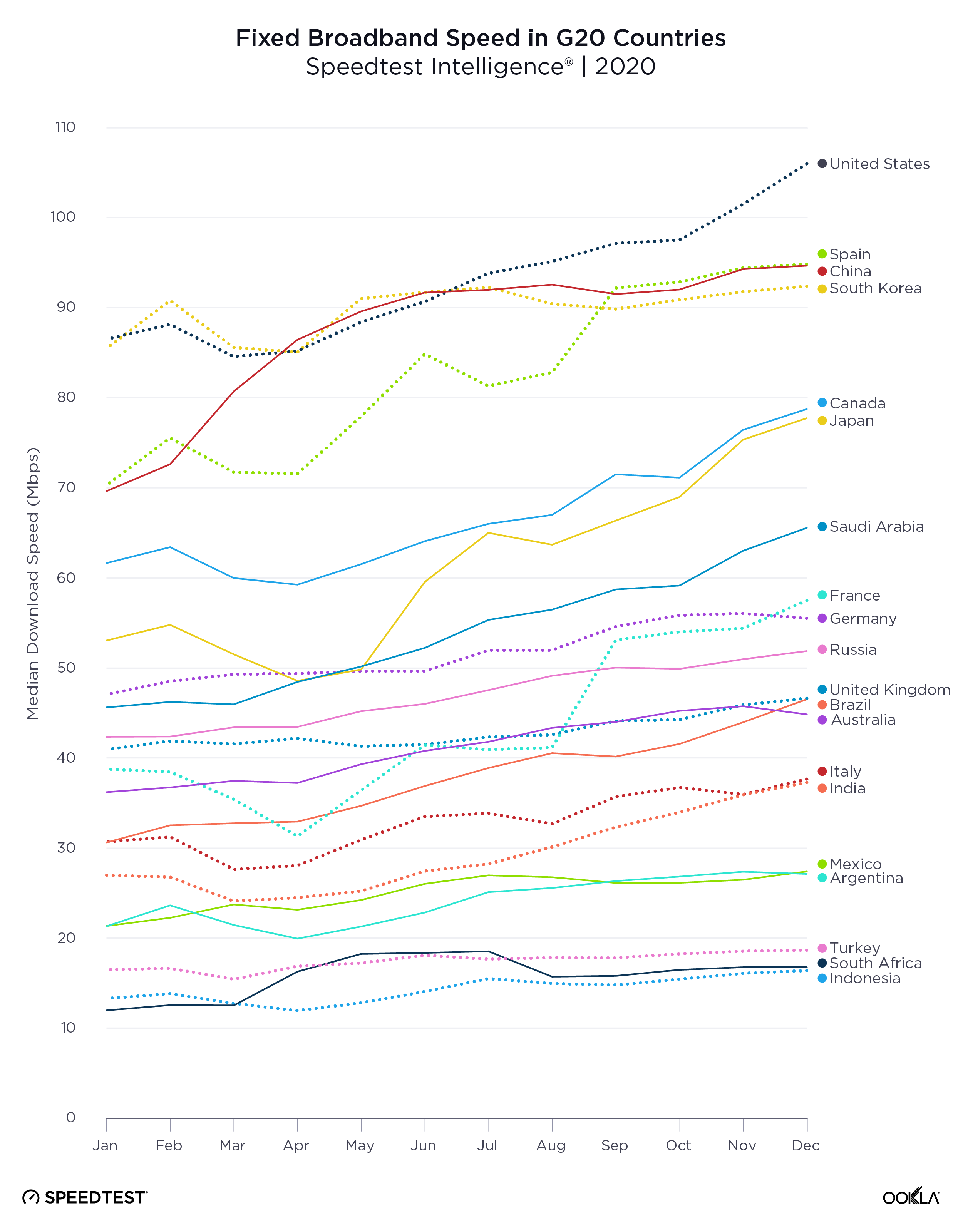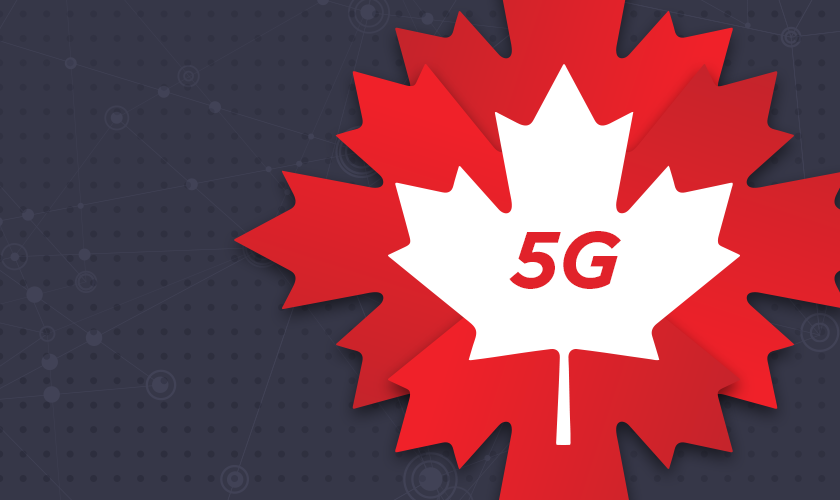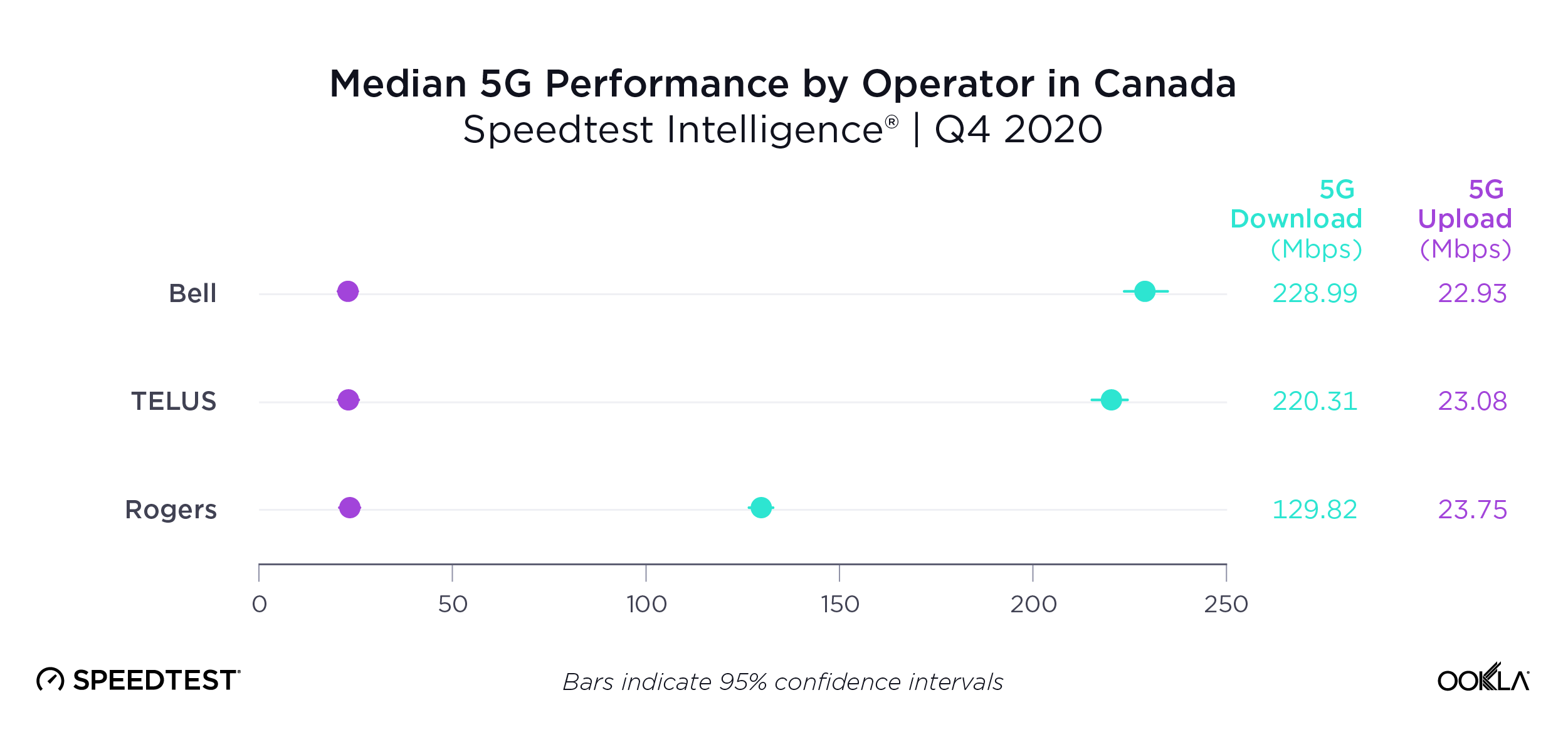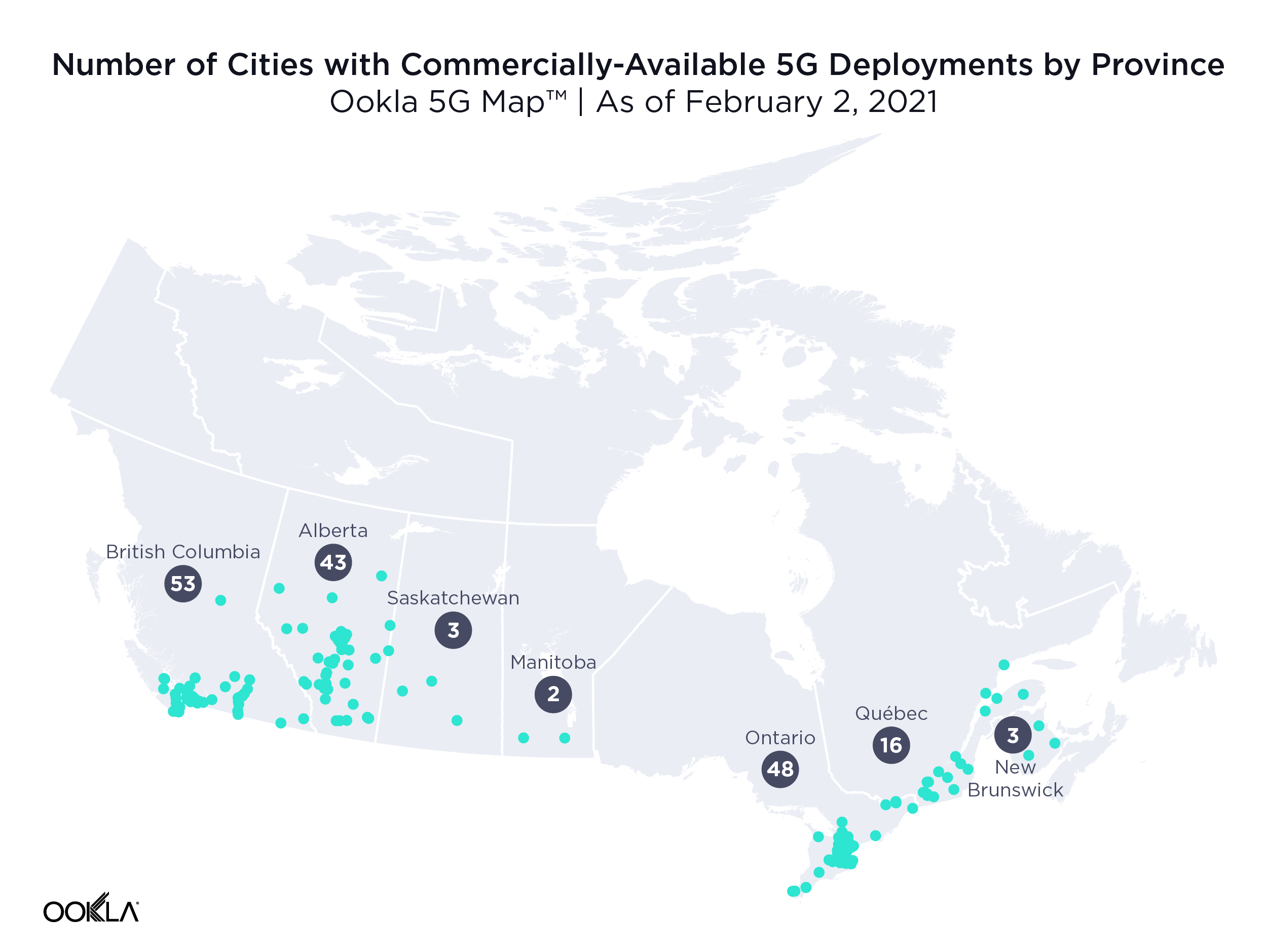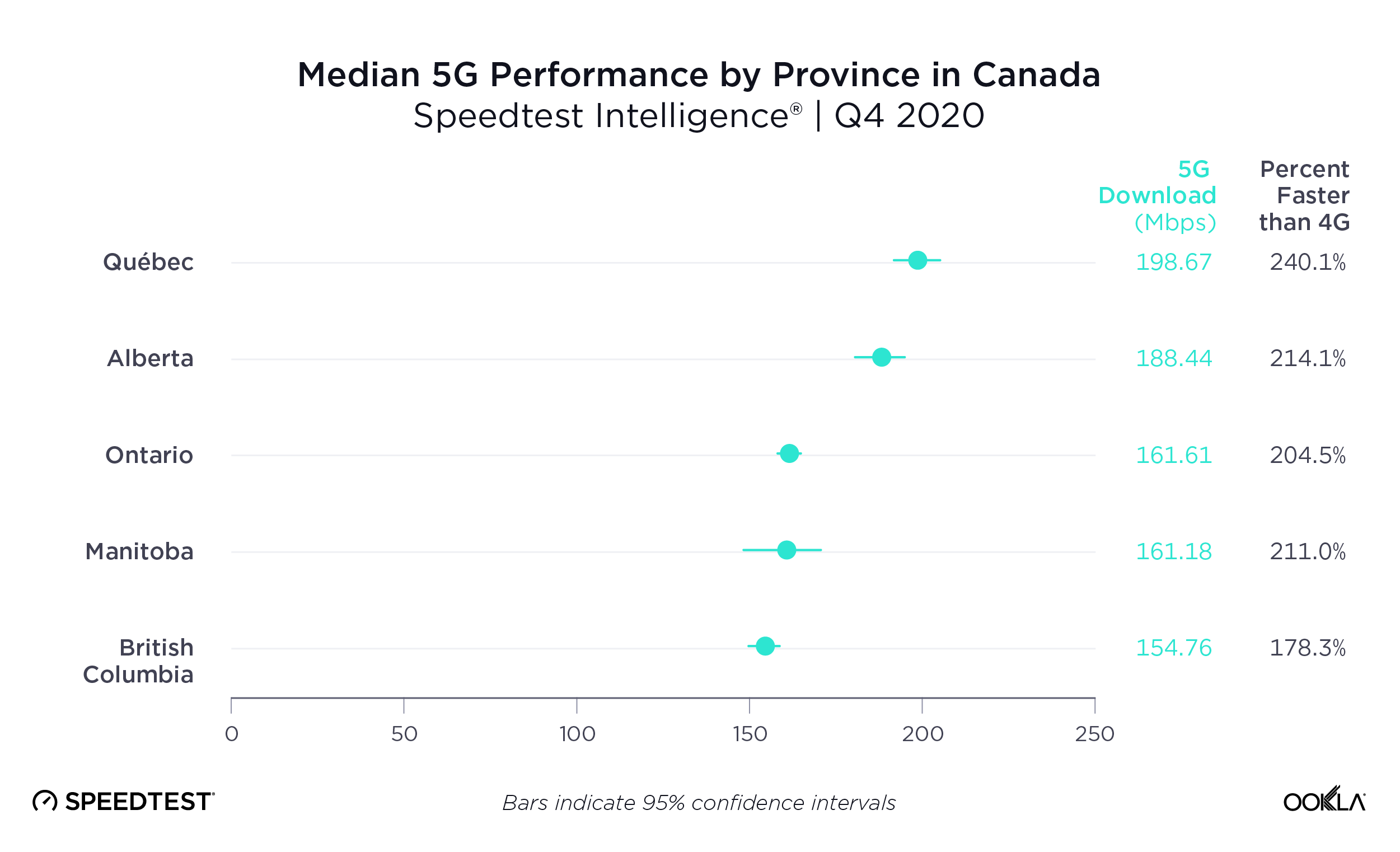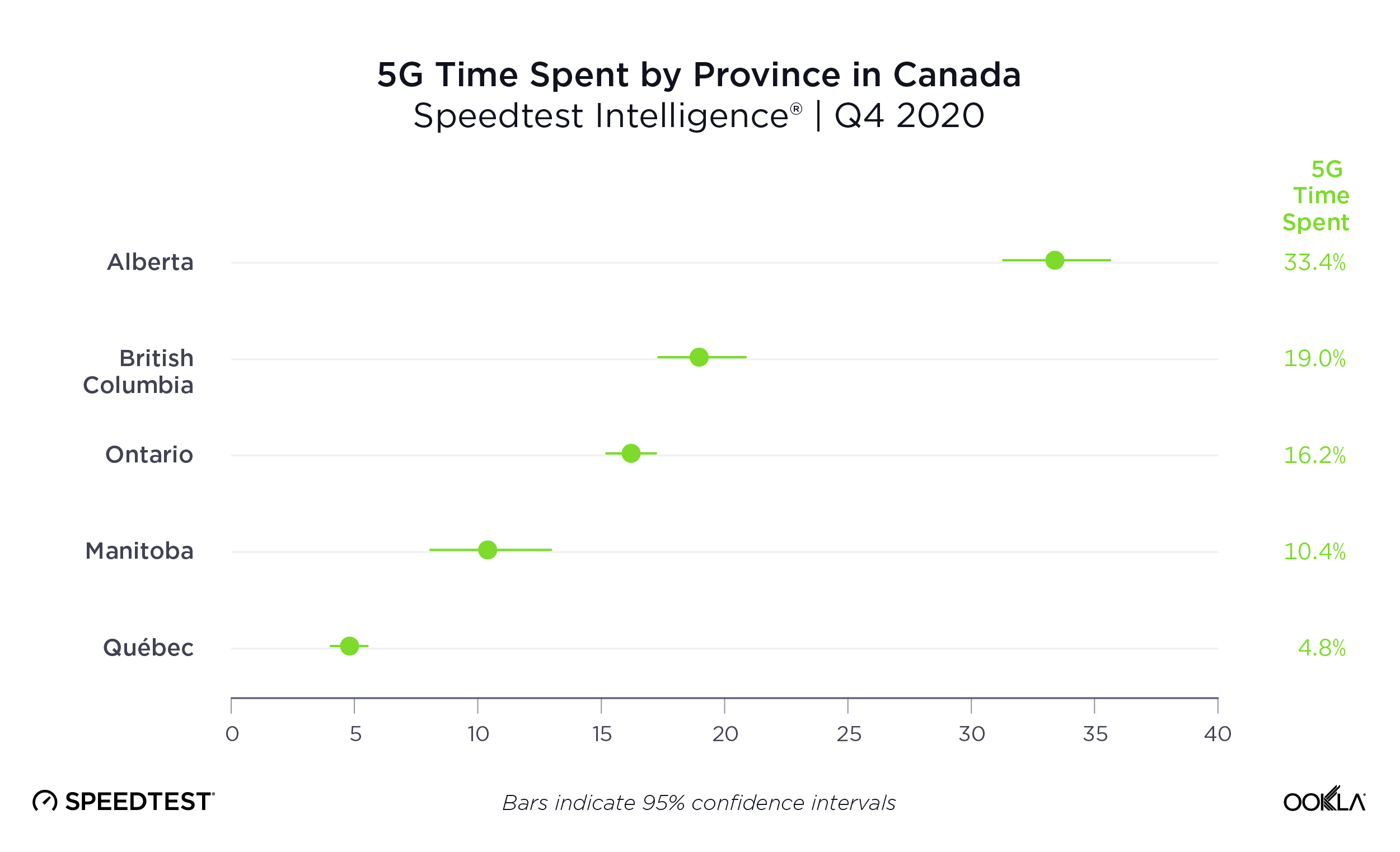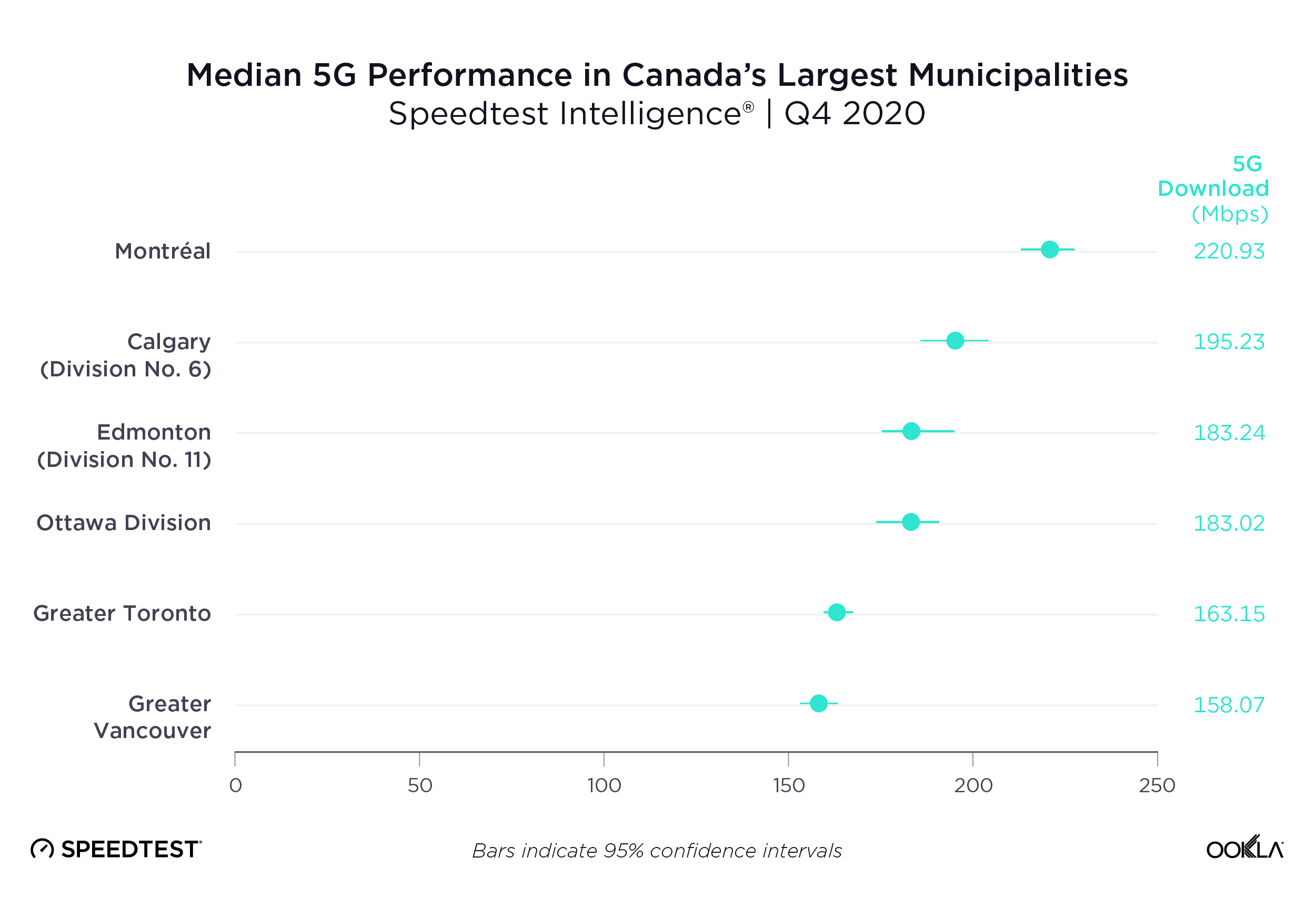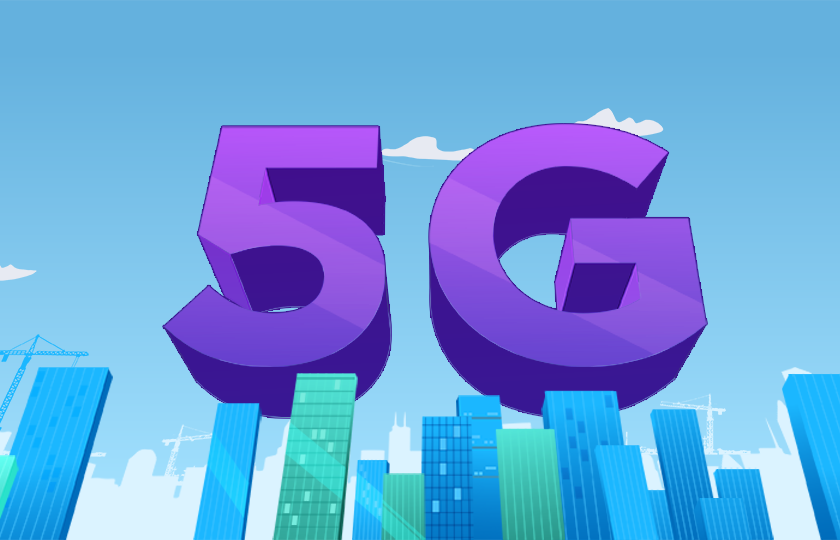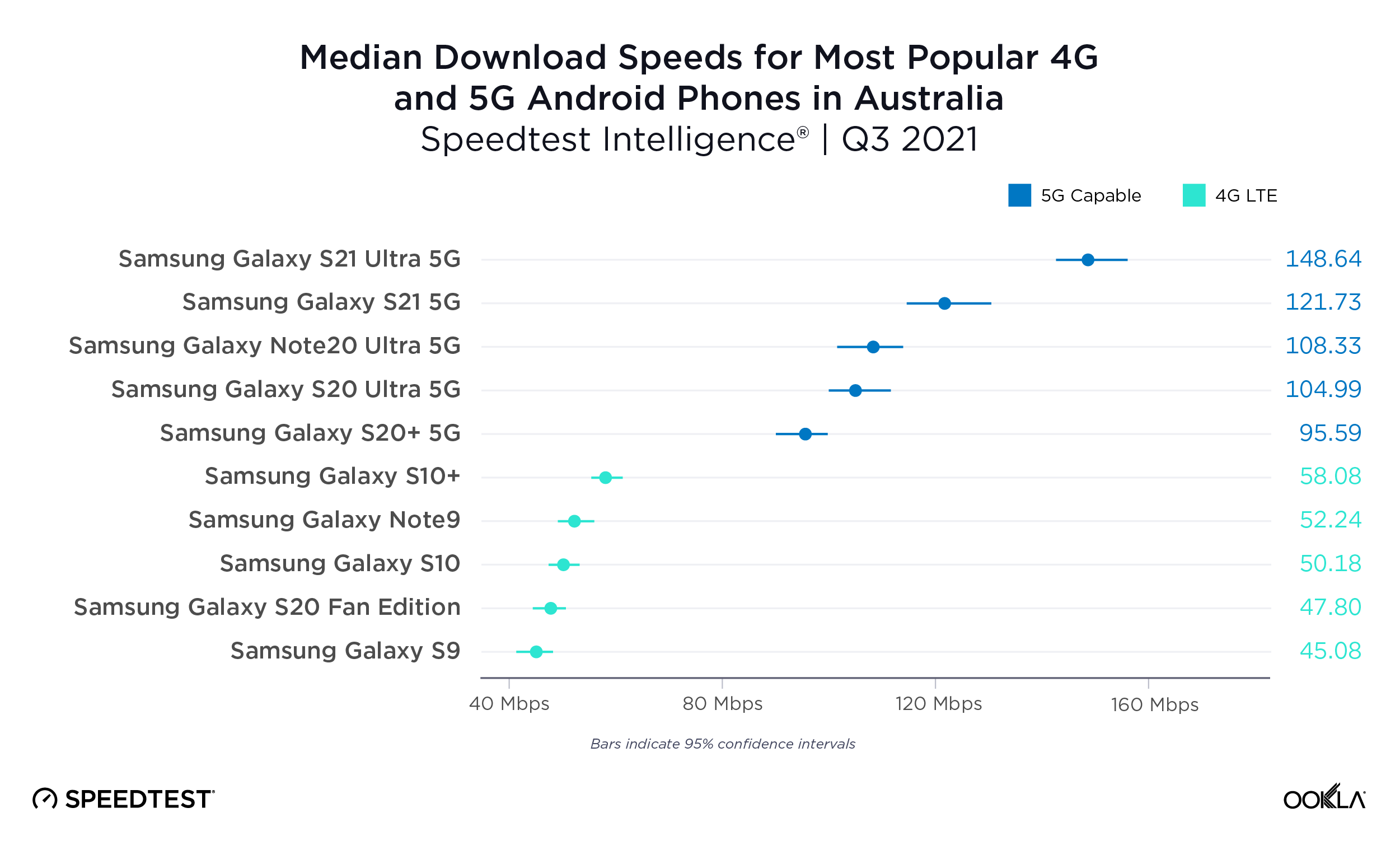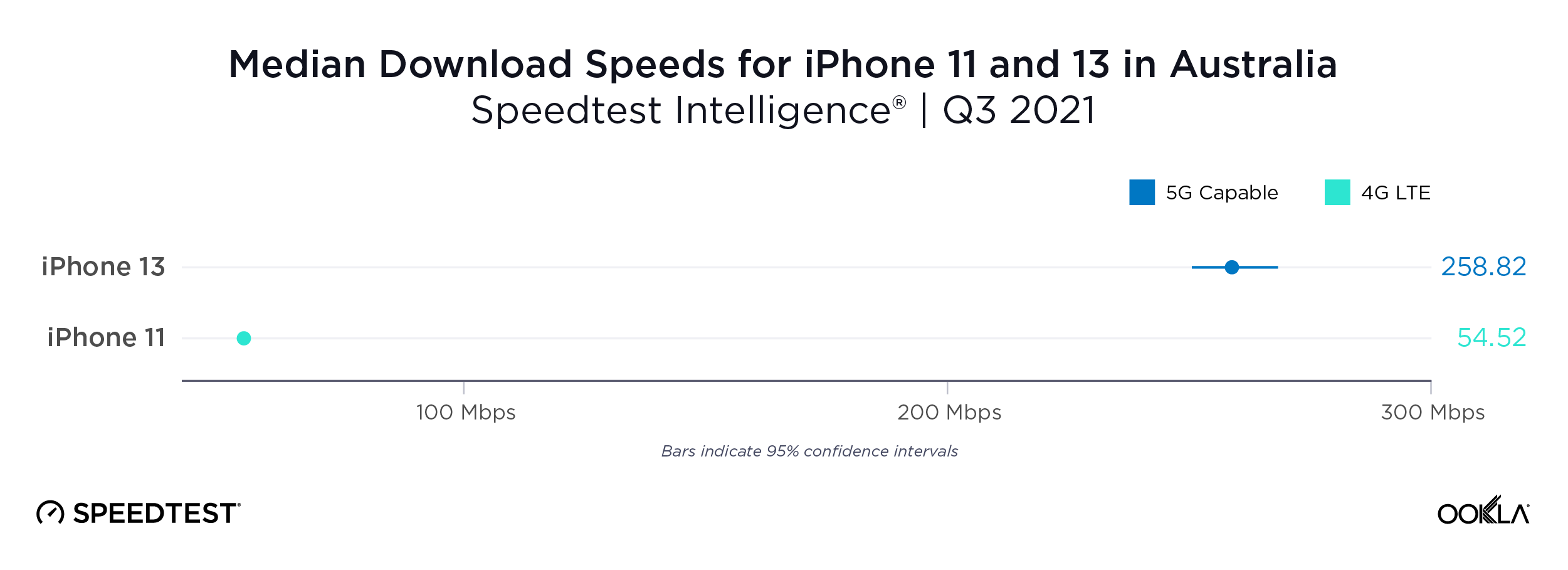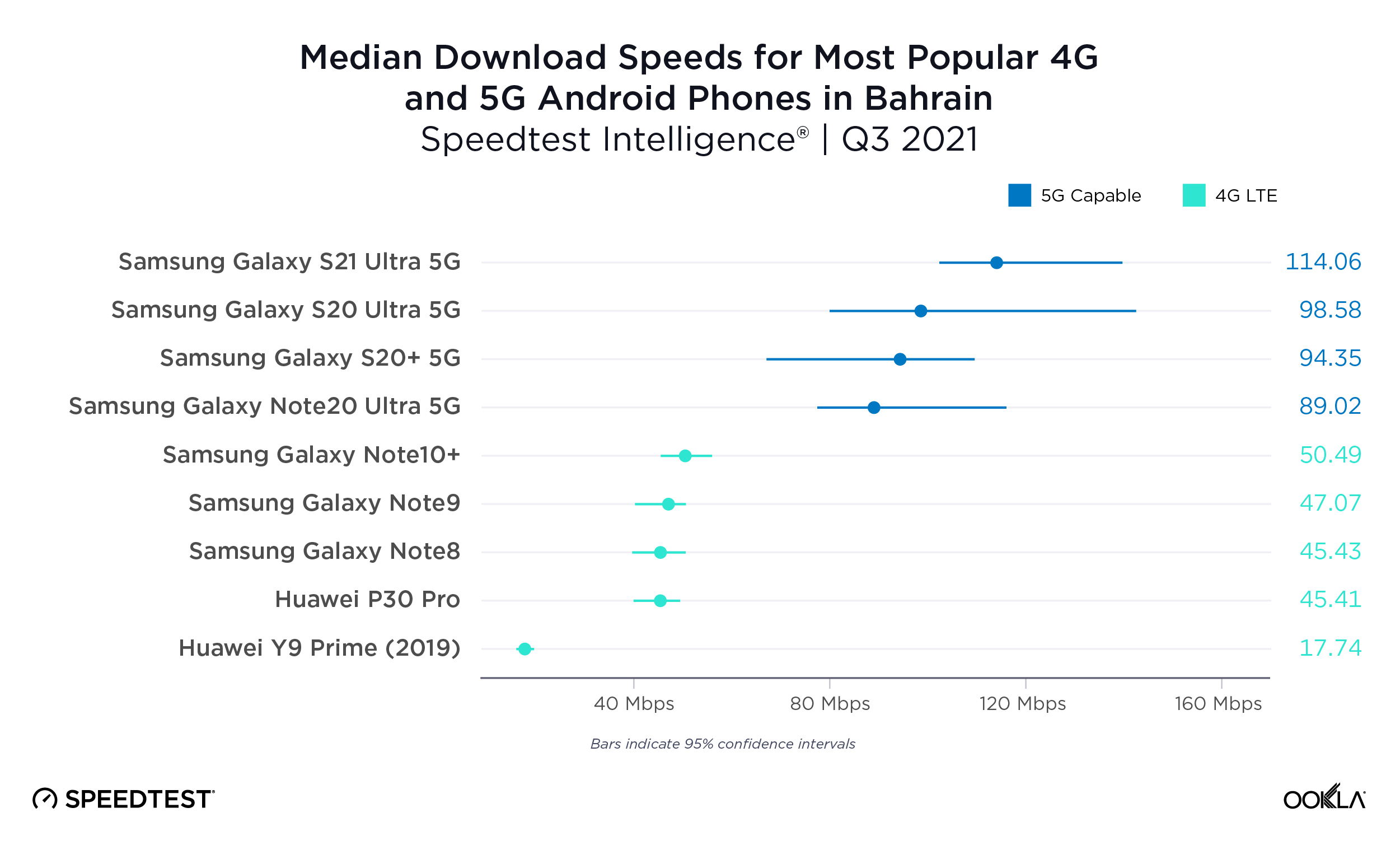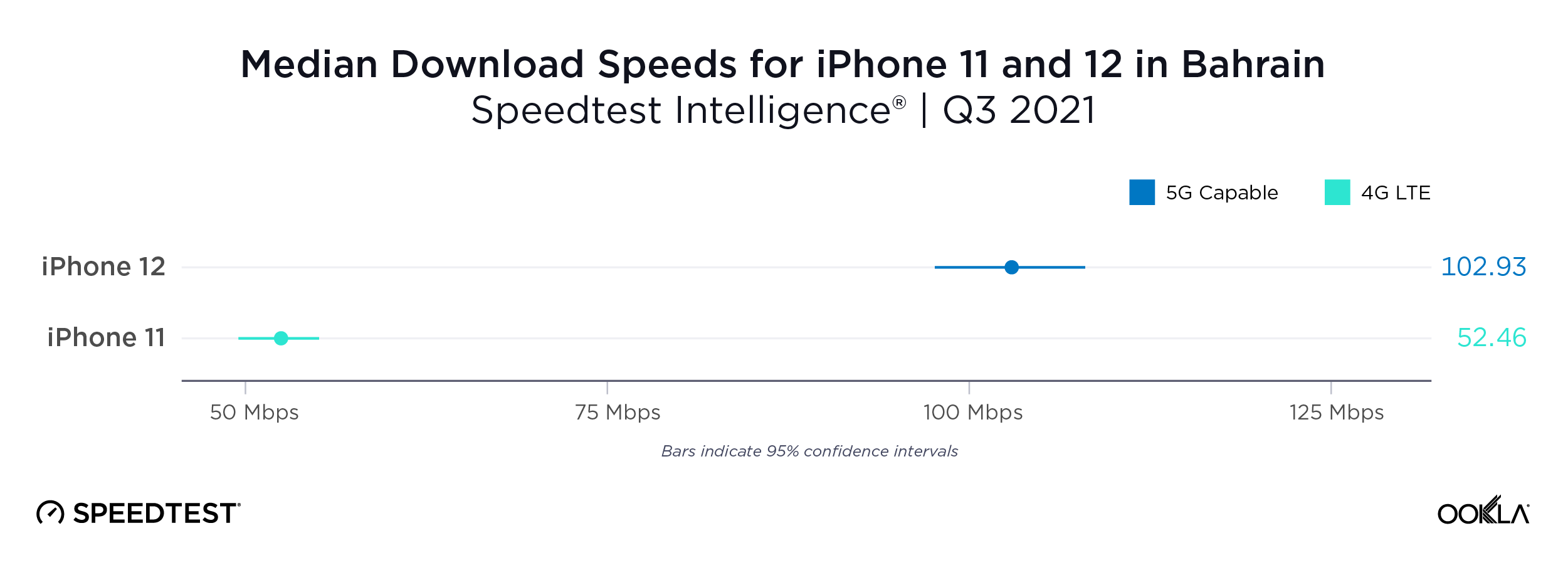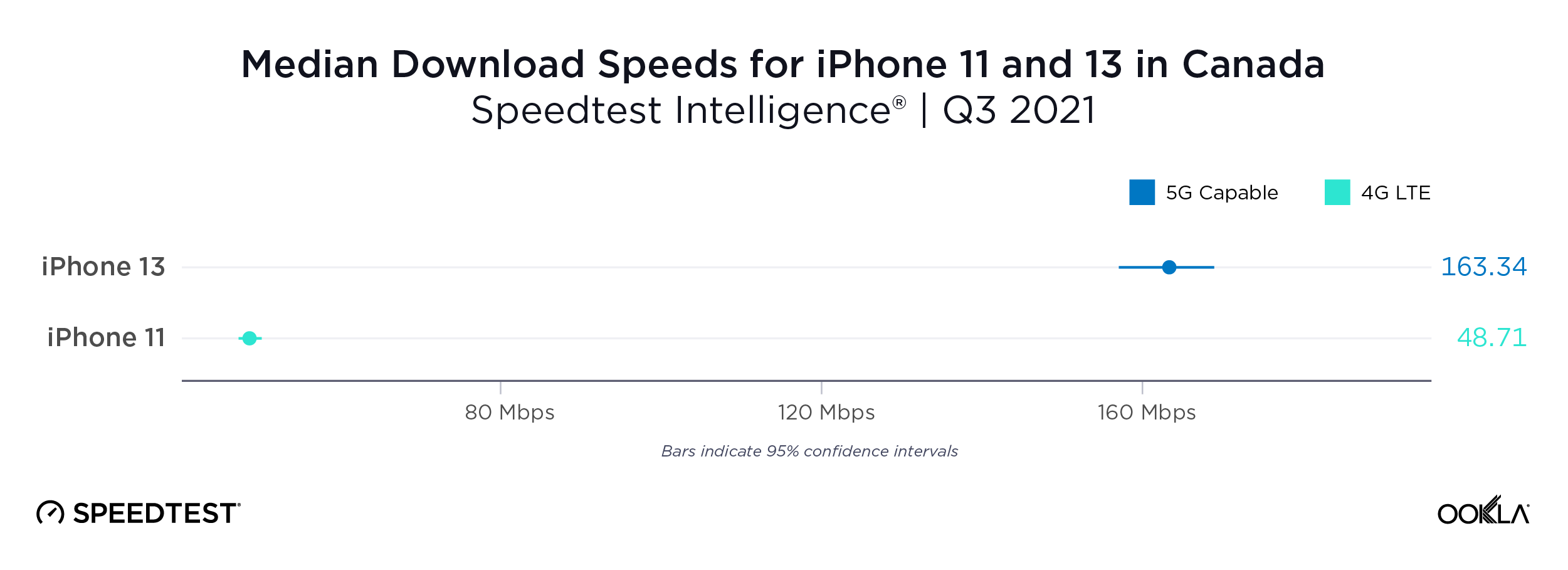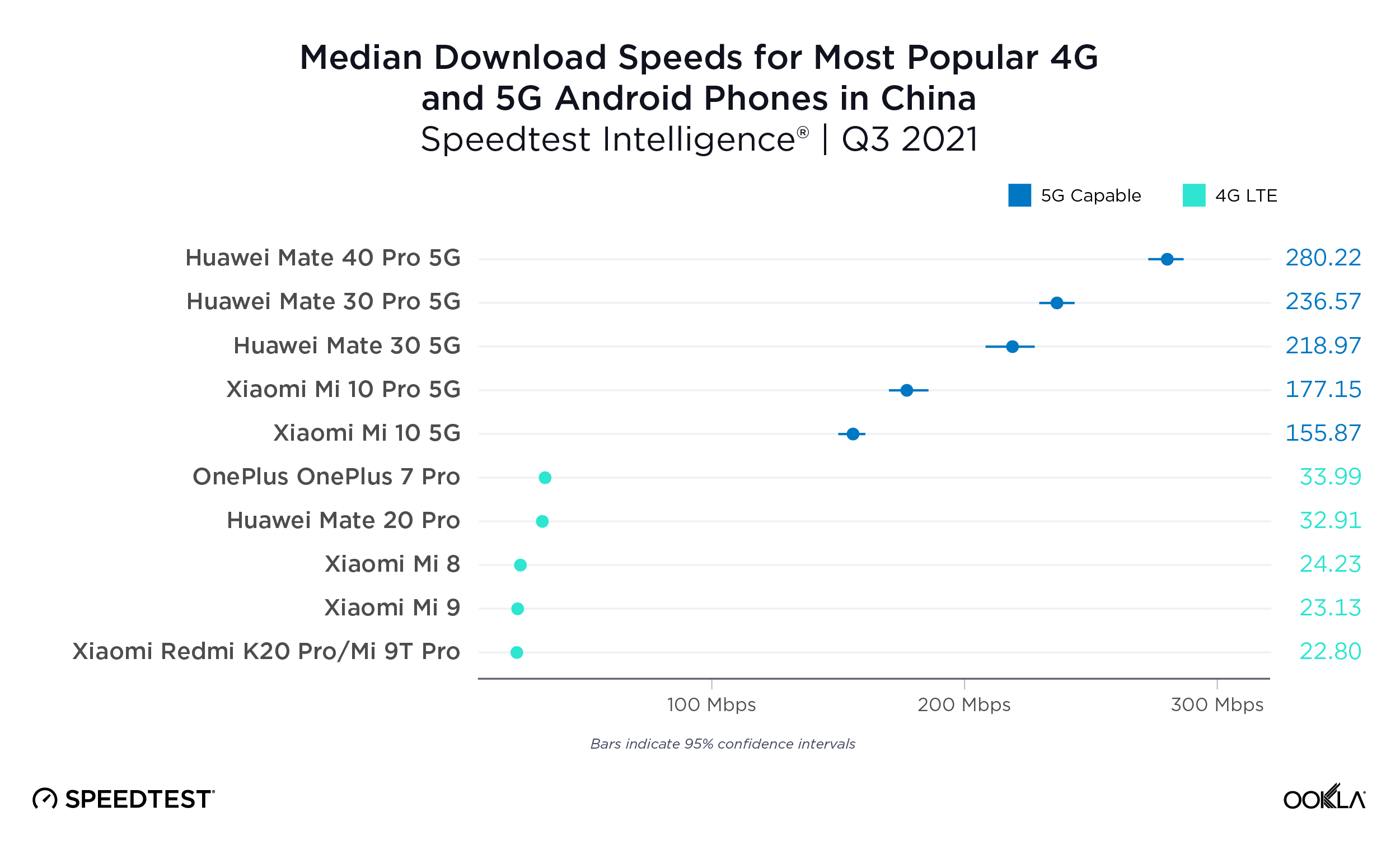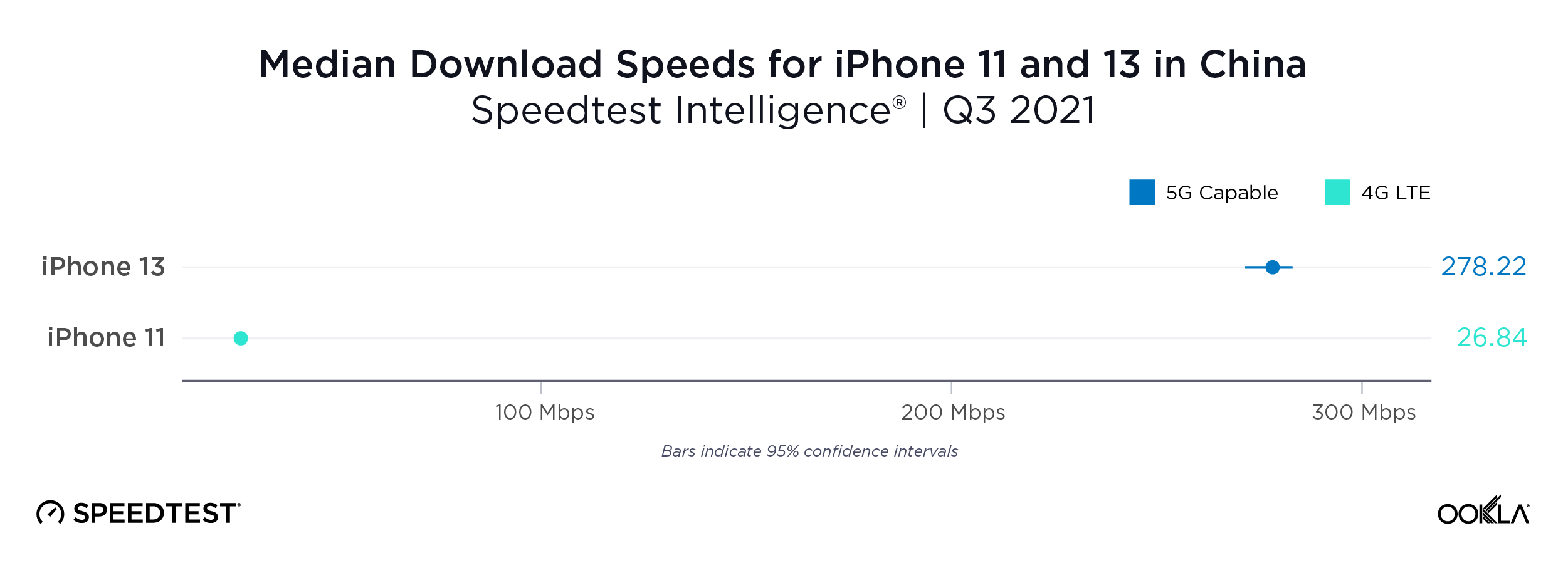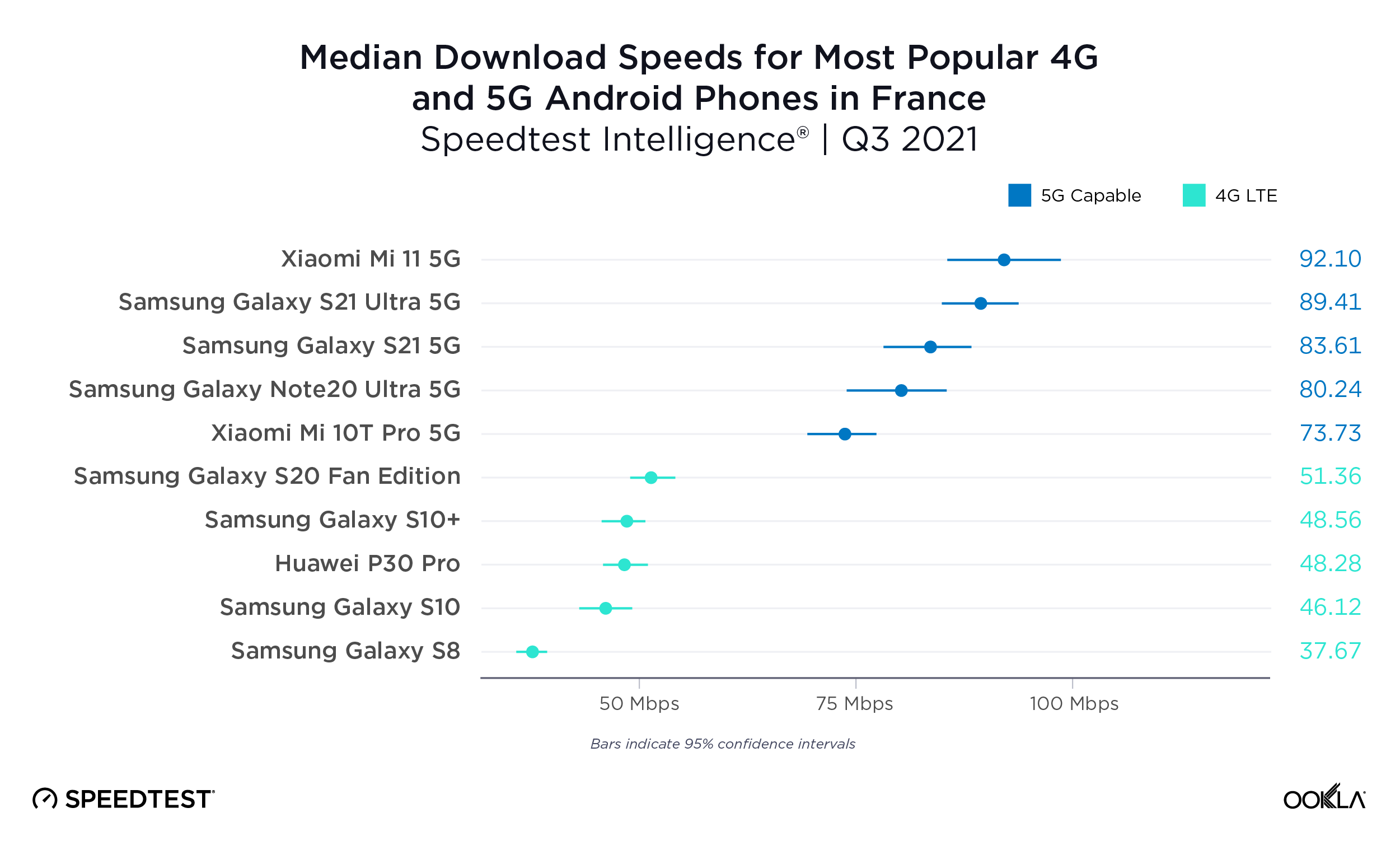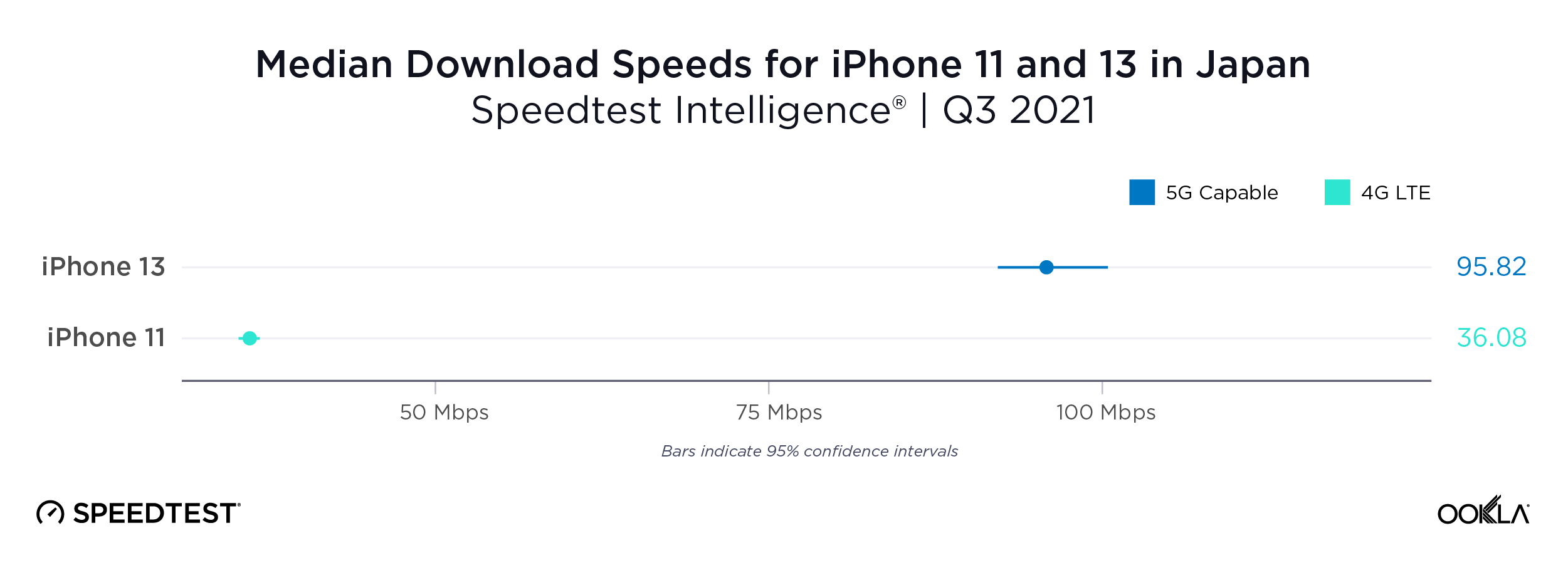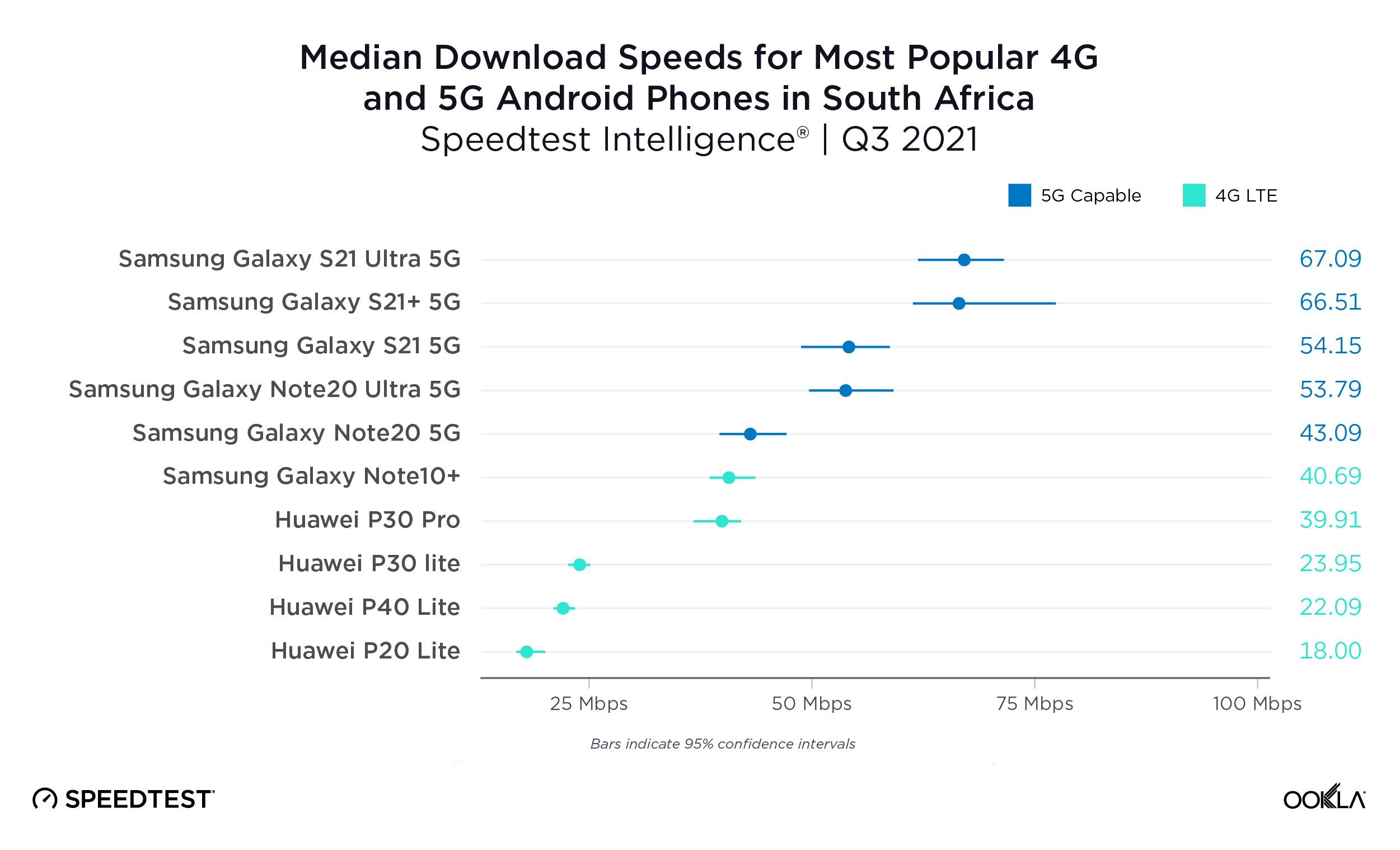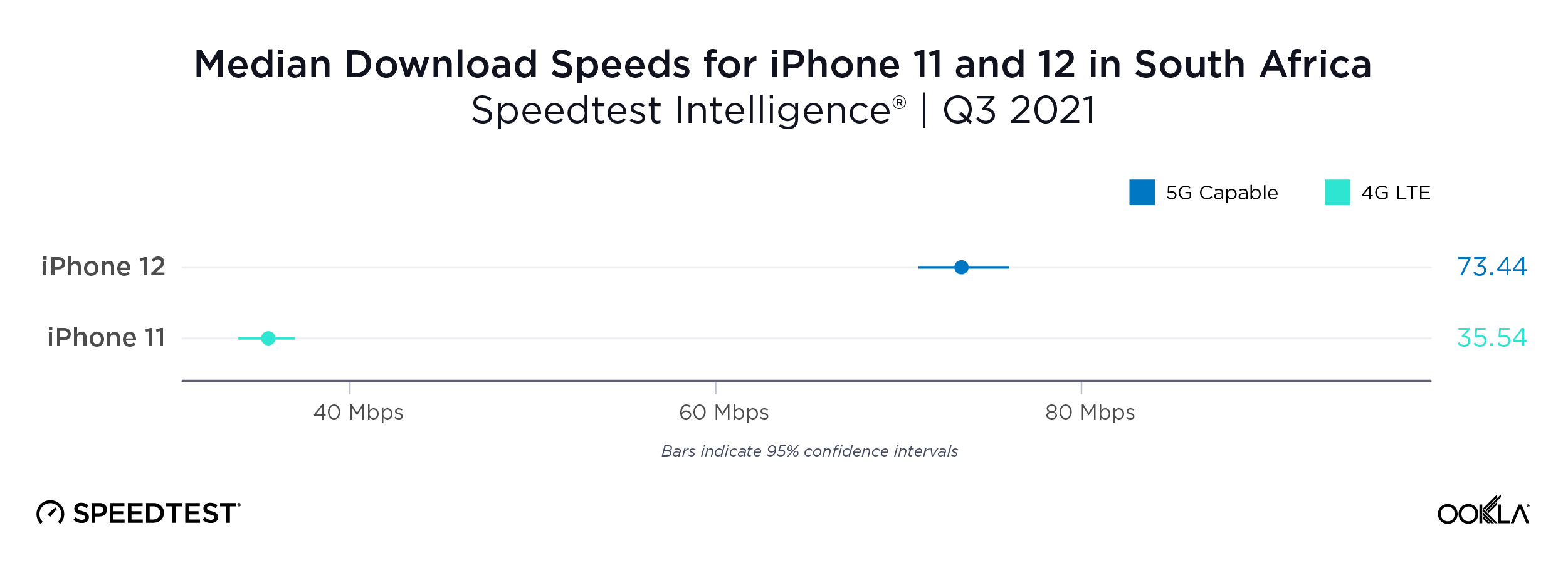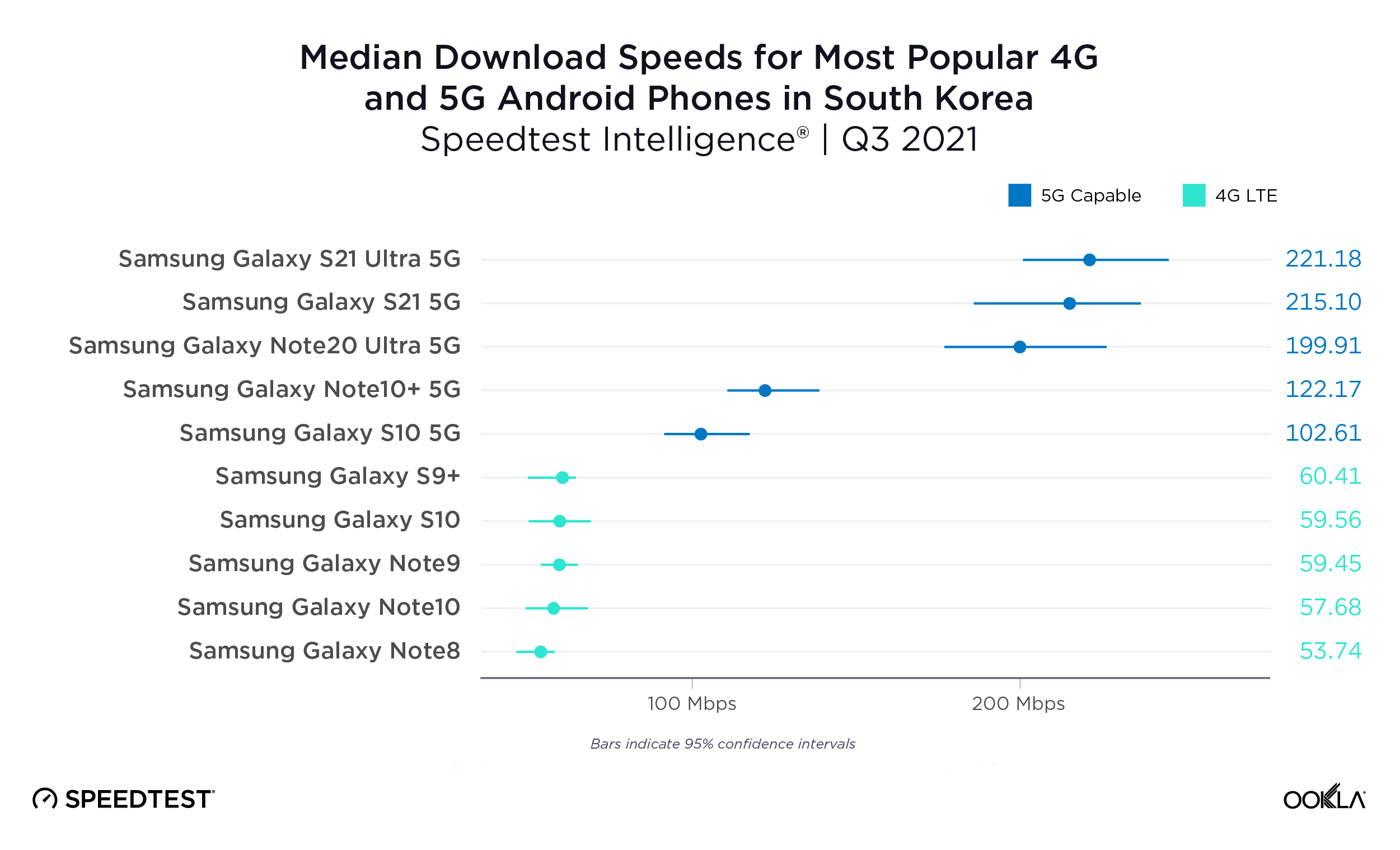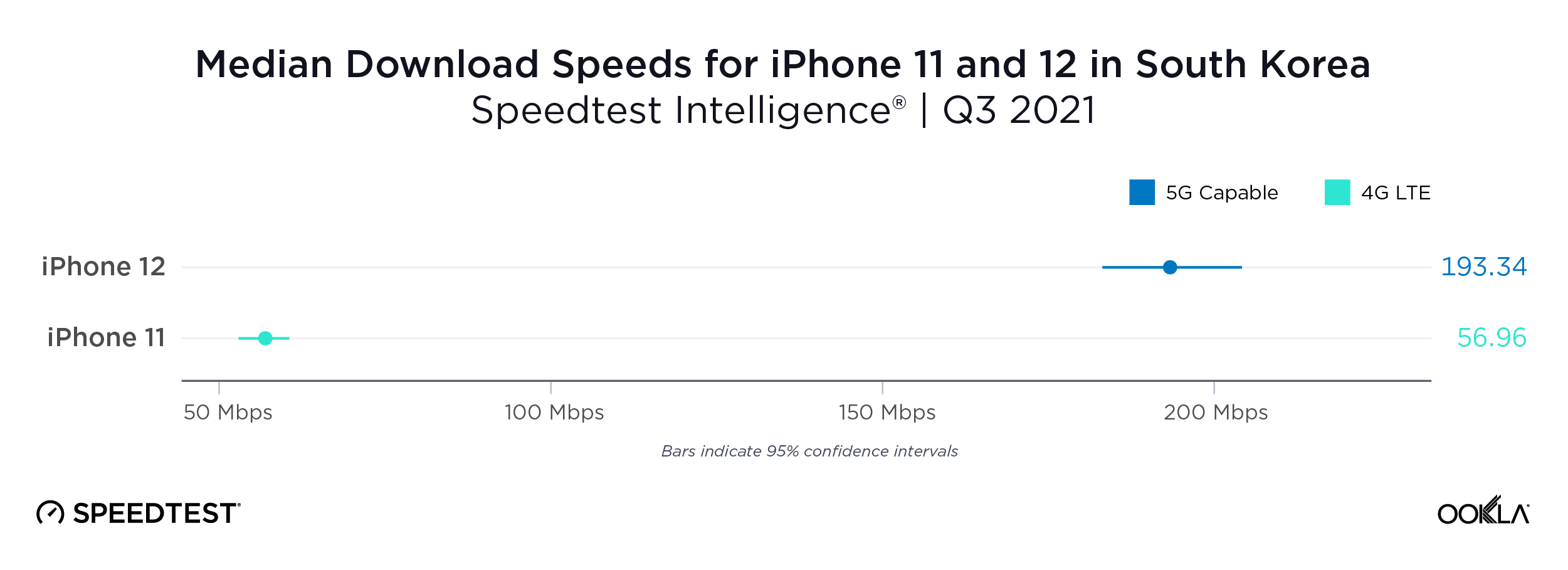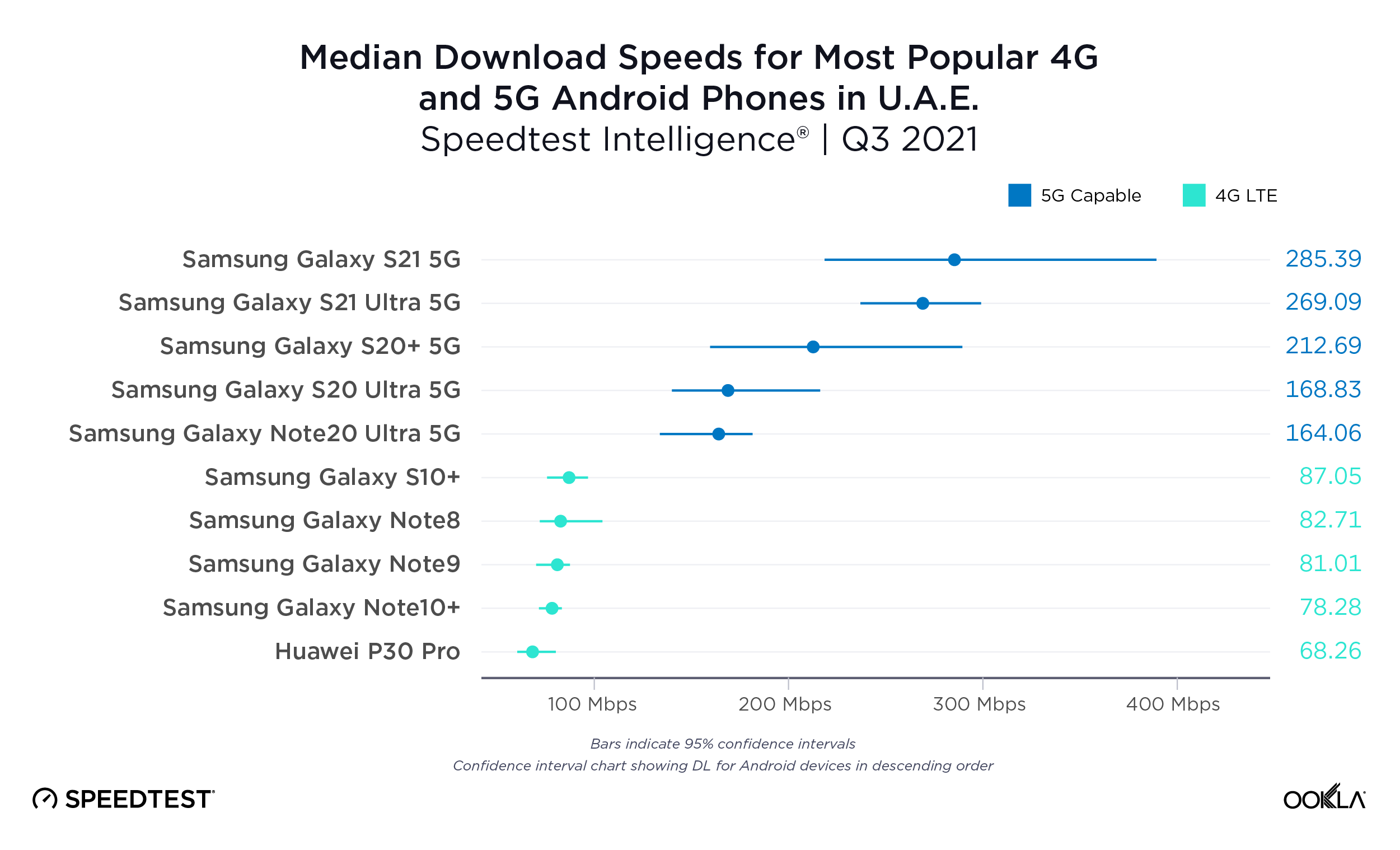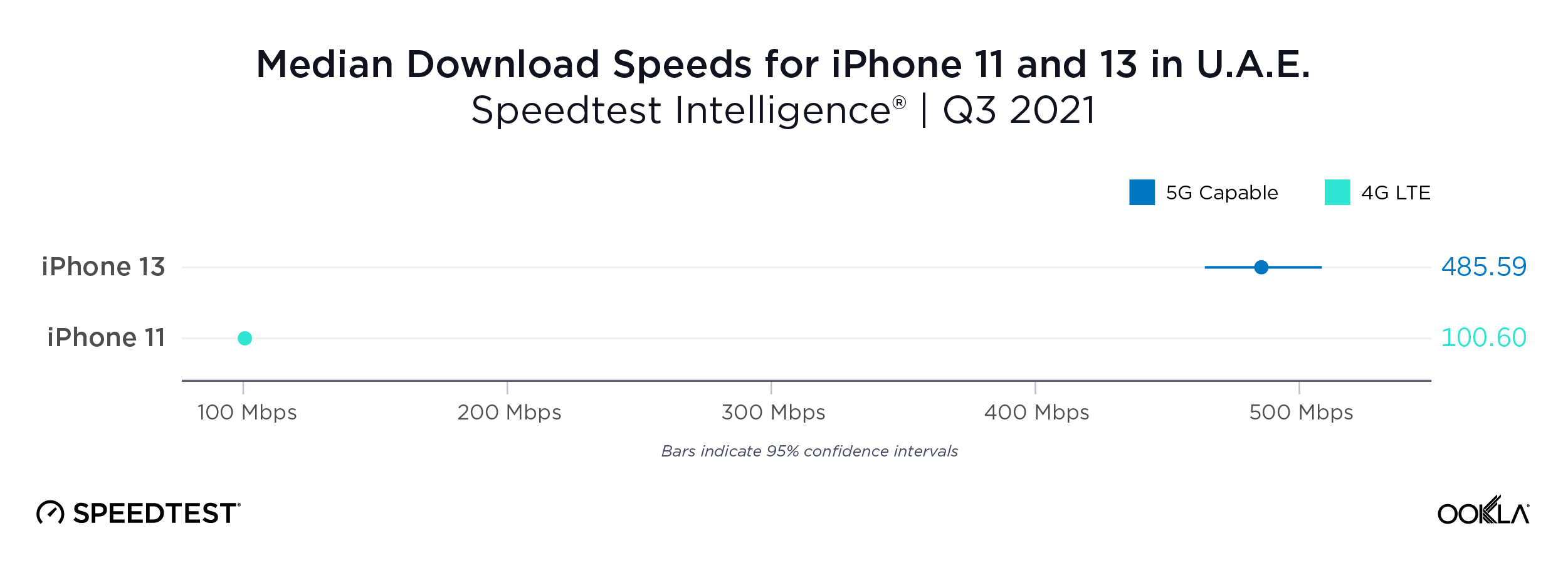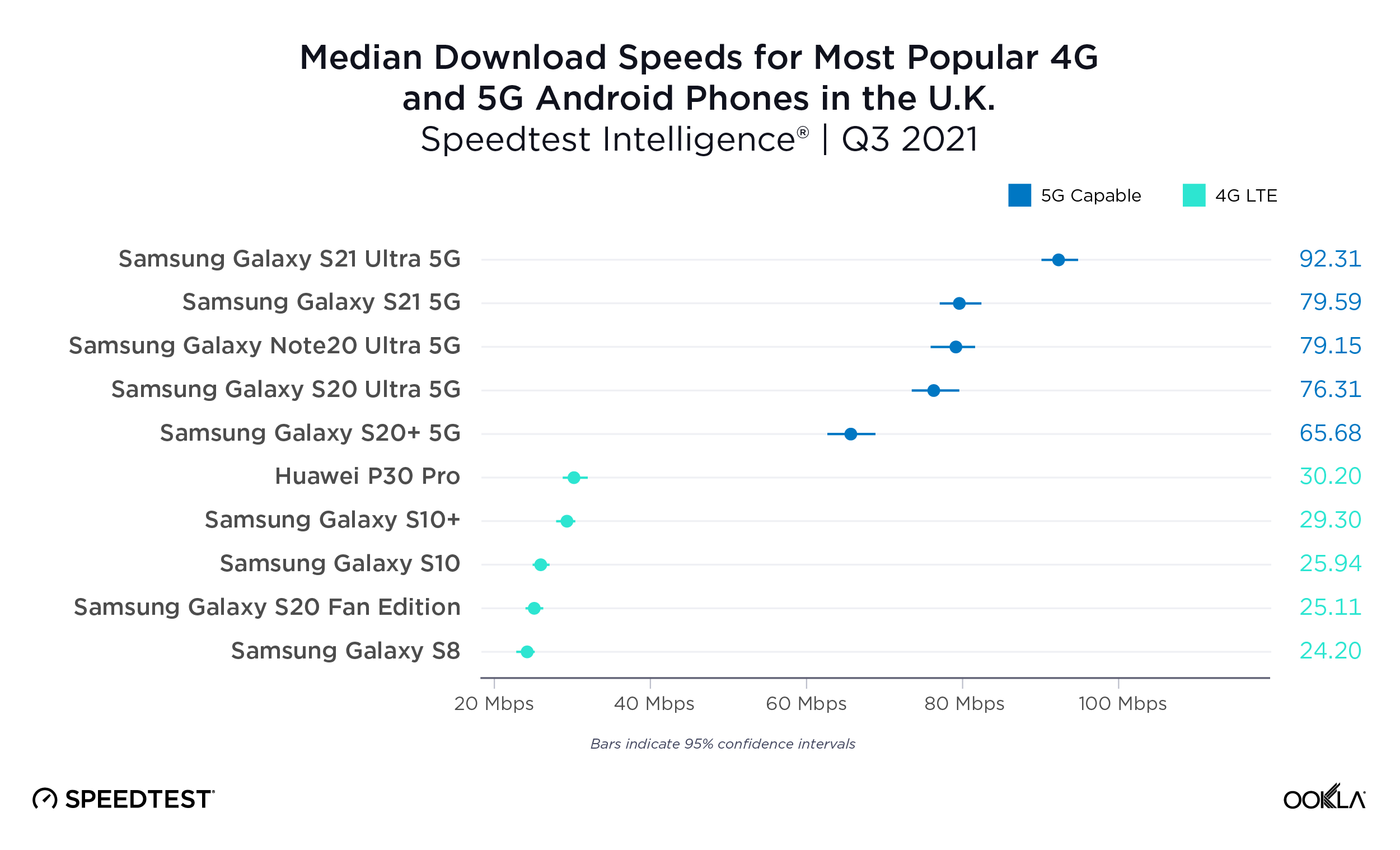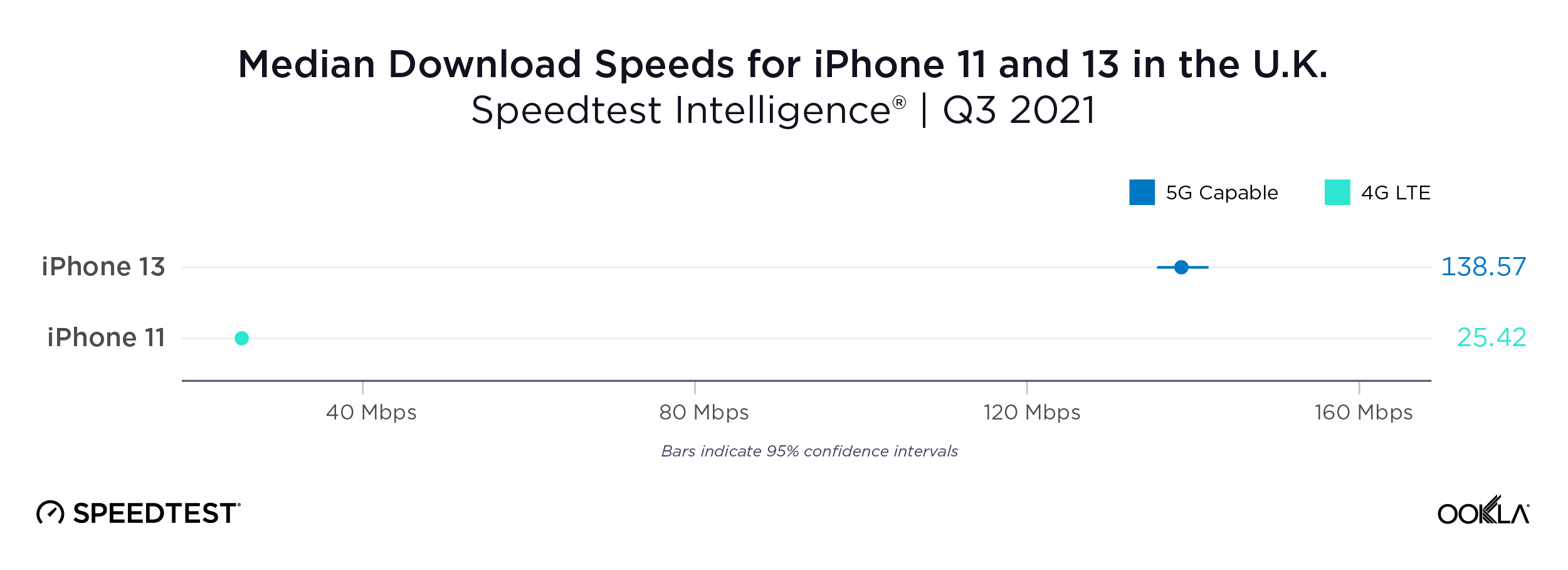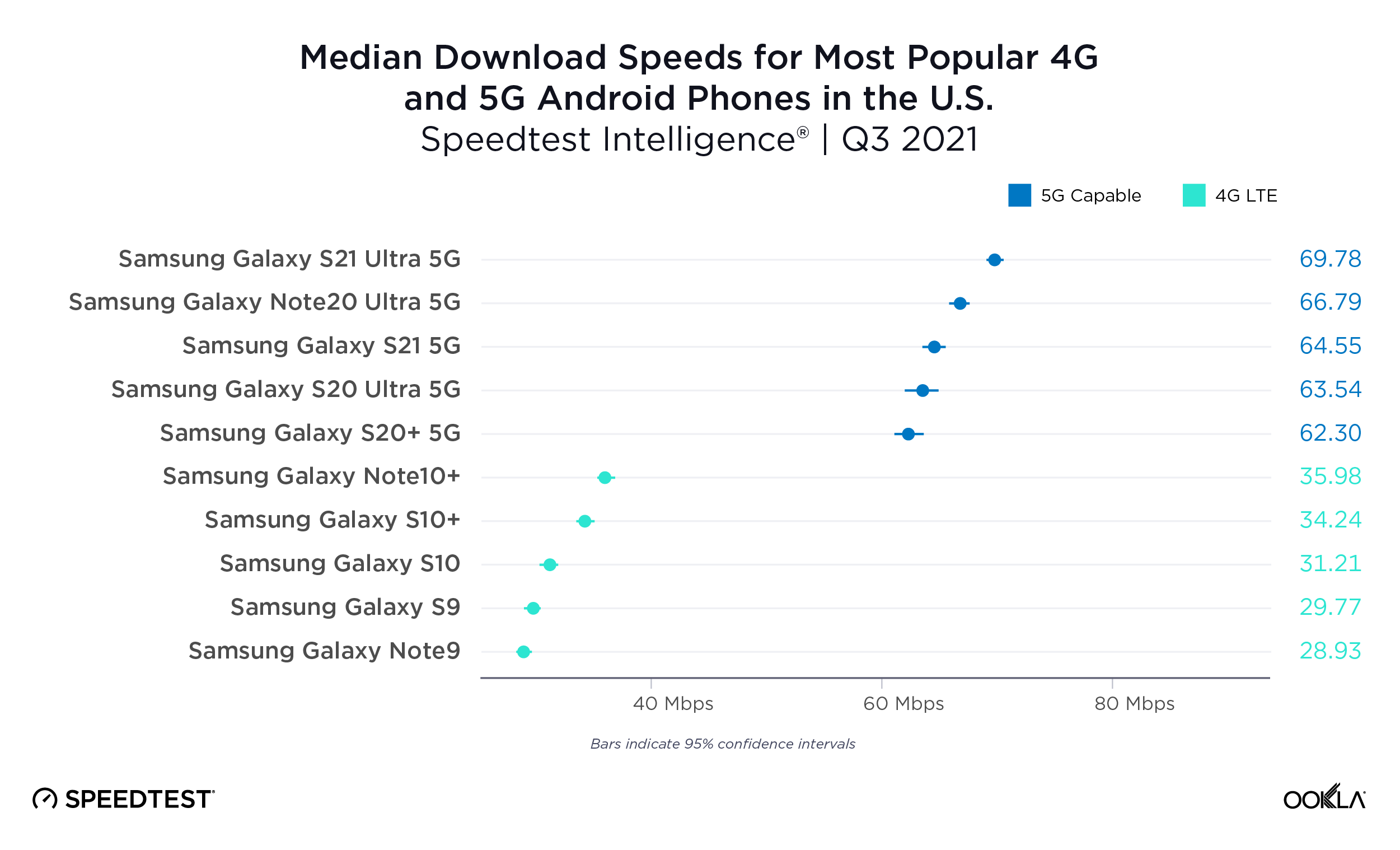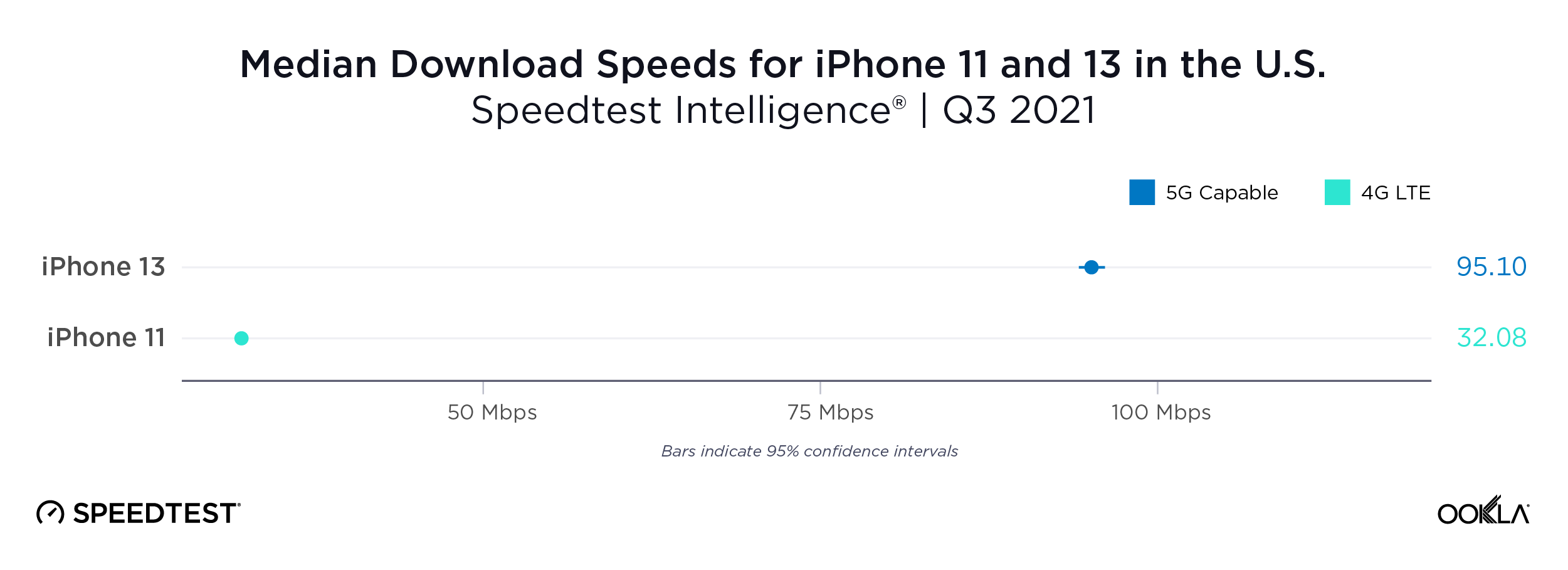

The great outdoors provided a refuge to many last year when travel options were limited. Now that many are vaccinated, national parks in Canada and the U.S. expect a surge in the number of visitors over the summer months. To find out if those visitors will be able to stretch the definition of “remote work” or if they should count on being unplugged, we looked at mobile internet performance, availability and coverage in national parks in Canada and the U.S. We included data from Q3 2020-Q1 2021 to account for the variability in dates that parks were actually open over the last year.
Gateway Arch had the fastest download speed among U.S. parks, Waterton Lakes in Canada
Fastest parks in the U.S. are near urban areas
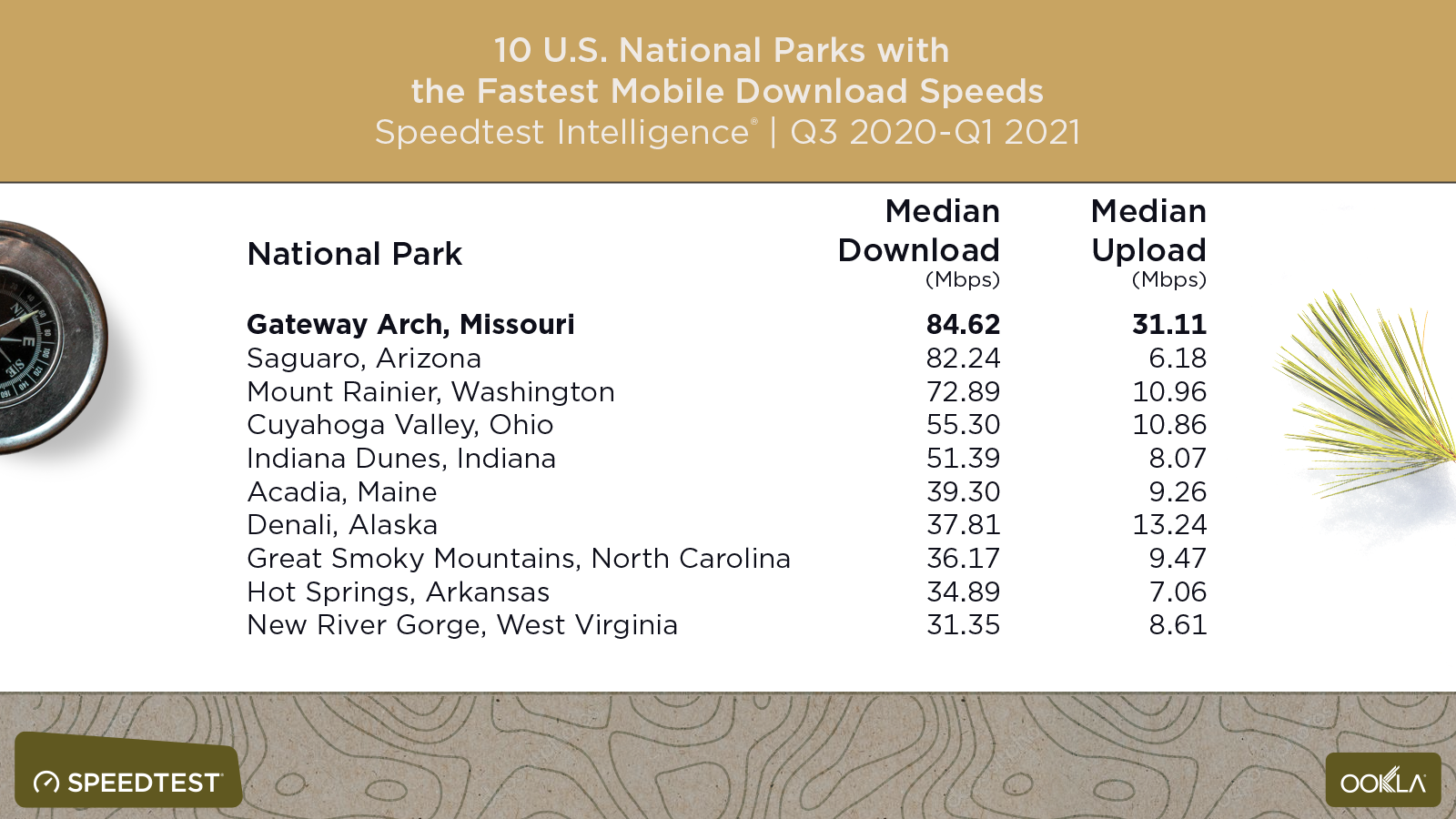
According to data from Speedtest®, U.S. travelers looking for time in the great outdoors this summer without giving up mobile performance should stick to national parks located in or near urban areas. Gateway Arch National Park, located on the shores of the Mississippi River in St. Louis, Missouri, is definitely at an advantage when it comes to accessing the faster speeds that come with urban infrastructure. Gateway Arch had the fastest median download speed on our list of national parks in the U.S. Saguaro National Park and Mount Rainier National Park share a similar story and were second and third for median download speed, respectively. Saguaro borders on Tucson, Arizona and Mount Rainier is very near to Tacoma, Washington. For comparison, the median download speed over mobile in the U.S. during Q1 2021 was 41.19 Mbps.
Denali National Park in Alaska was an exception, placing seventh on this list despite being located deep in the center of the state, far from major cities.
Quick take: Whether you’re posting from the top of the Gateway Arch or Mt. Rainier, there’s a high likelihood that you can livestream your view from national parks located near urban areas.
Slowest parks in the U.S. are in more remote locations
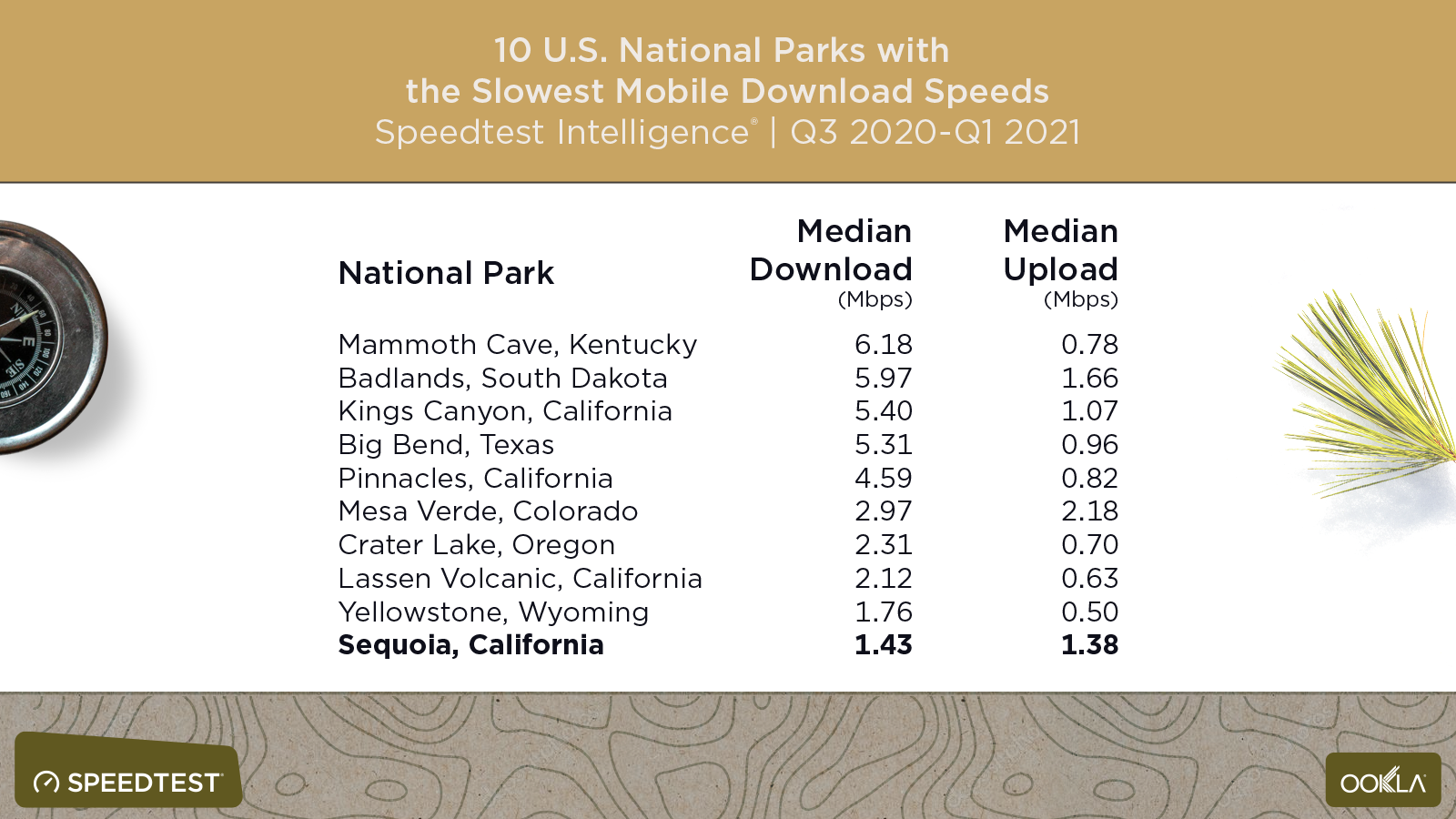
On the other hand, U.S. travelers wanting to disconnect can achieve those dreams by visiting parks that are farther from major cities or nestled deep in difficult terrain. Sequoia National Park in California had the slowest median download speed on our list at a barely manageable 1.43 Mbps — not even enough to stream a 720p video. Yellowstone was second slowest and Lassen Volcanic National Park in California third. If you’re dreaming of visiting Sequoia National Park but need a slightly faster connection, try neighboring Kings Canyon National Park where the median download speed, while still only 5.40 Mbps, was 277.6% faster.
These slow speeds are a good reminder that sometimes visiting the great outdoors can be about slowing down and enjoying the offscreen splendor. You can always post your pics later.
Canadian parks show a narrower range of speeds
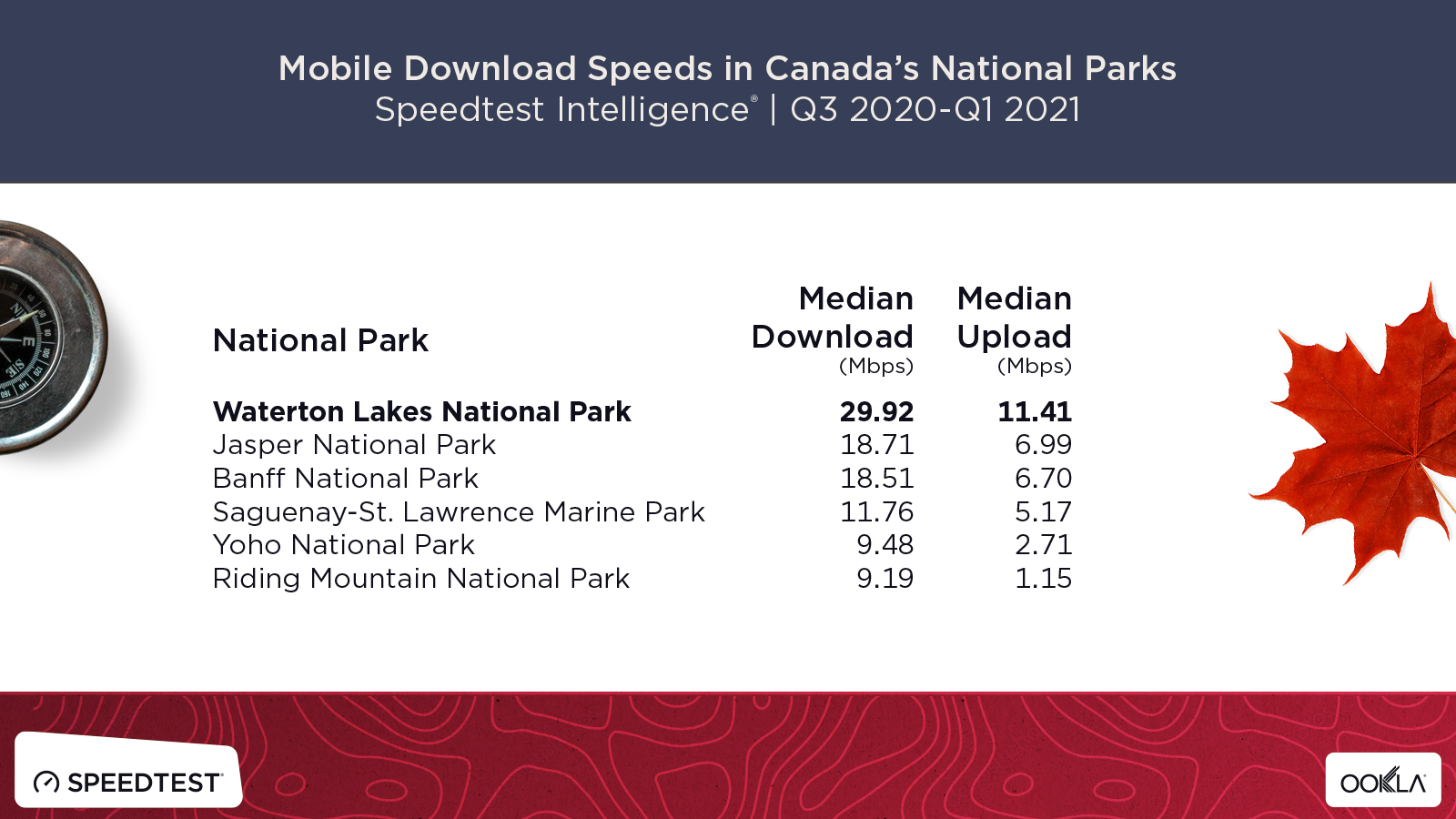
We can’t say if Canadians are better at logging off while discovering national parks than folks in the U.S. or if service is harder to get, but there were far fewer parks with sufficient data to report on in Canada. As a result, the spread in download performance was not nearly as wide for Canadian national parks as it was for those in the U.S. And, unlike the U.S., all of the Canadian national parks that made our list were in more remote locations.
Waterton Lakes National Park had the fastest median download speed during the period. Jasper and Banff were second and third, respectively. Riding Mountain National Park had the slowest median download speed, followed by Yoho National Park and Saguenay-St. Lawrence National Park. For comparison, the median mobile download speed in all of Canada was 66.90 Mbps during Q1 2021.
38 national parks across the U.S. and Canada show 5G
5G offers the fastest speeds for travelers looking to make arrangements on the go or tether to a laptop to fit in a few hours of remote work. Data from Android users with 5G-capable phones during Q3 2020-Q1 2021 showed 36 national parks in the U.S. and two in Canada with sufficient samples to confirm 5G at least somewhere in the park.
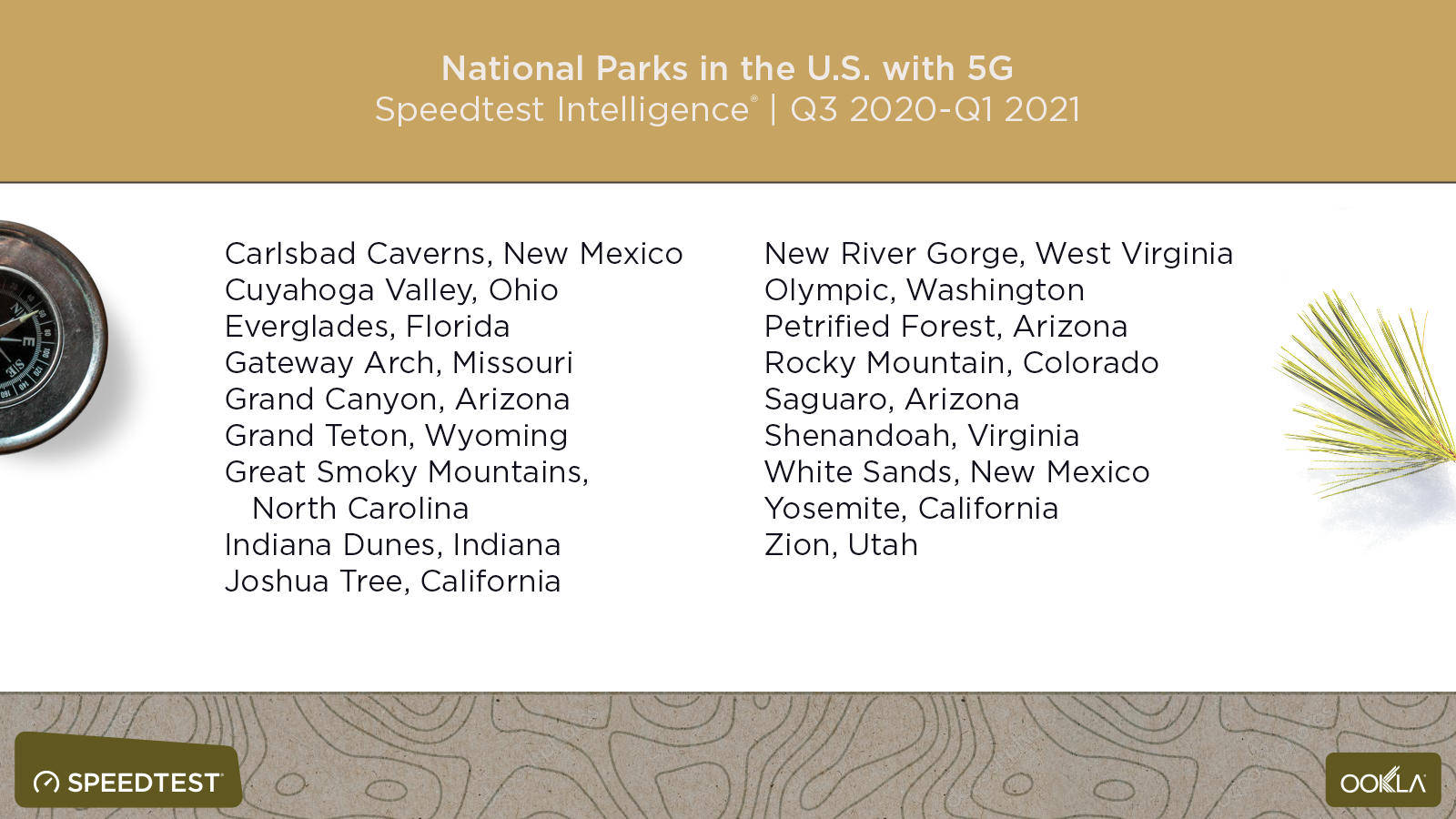
Speedtest data showed 5G in 36 U.S. National Parks from Florida to Washington. If the park you want to visit is on this list, you should have access to all that 5G has to offer at least somewhere in the park.

In Canada, only Banff and Jasper showed a sufficient number of 5G samples to make the list.
4G Availability varies widely among U.S. parks, less so in Canada
In many cases, National Parks are located in gorgeous rural locations — exactly where you’d expect not to find 4G. We looked at 4G Availability, the percent of users on all Android devices that spend the majority of their time on 4G and above (both roaming and on-network), across both countries’ park systems to see where users can connect to a modern signal.
Because terrain varies widely in parks, the presence of 4G in a park does not mean service is uniformly available throughout that park (so prepare your emergency contact plan accordingly).
Less remote U.S. national parks have higher 4G Availability
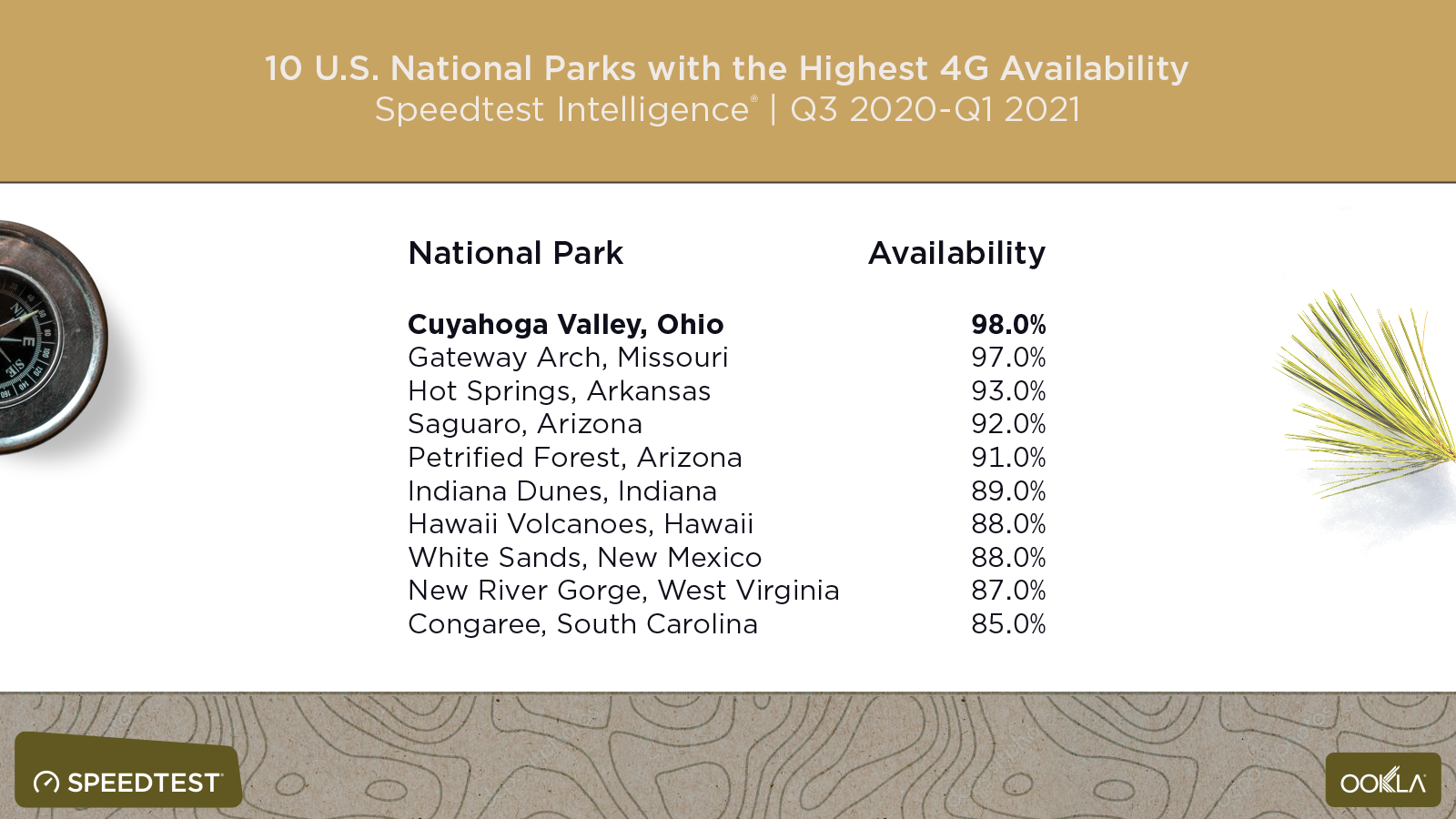
Cuyahoga Valley National Park in Ohio had the highest 4G Availability of any U.S. National Park, followed by Gateway Arch in Missouri and Hot Springs in Arkansas. All but four of the 10 U.S. National Parks with the highest 4G Availability were on the list of parks with the fastest median download speeds. Even the parks on this list that are farther from cities are still close to areas like highways that are often better served by mobile infrastructure.
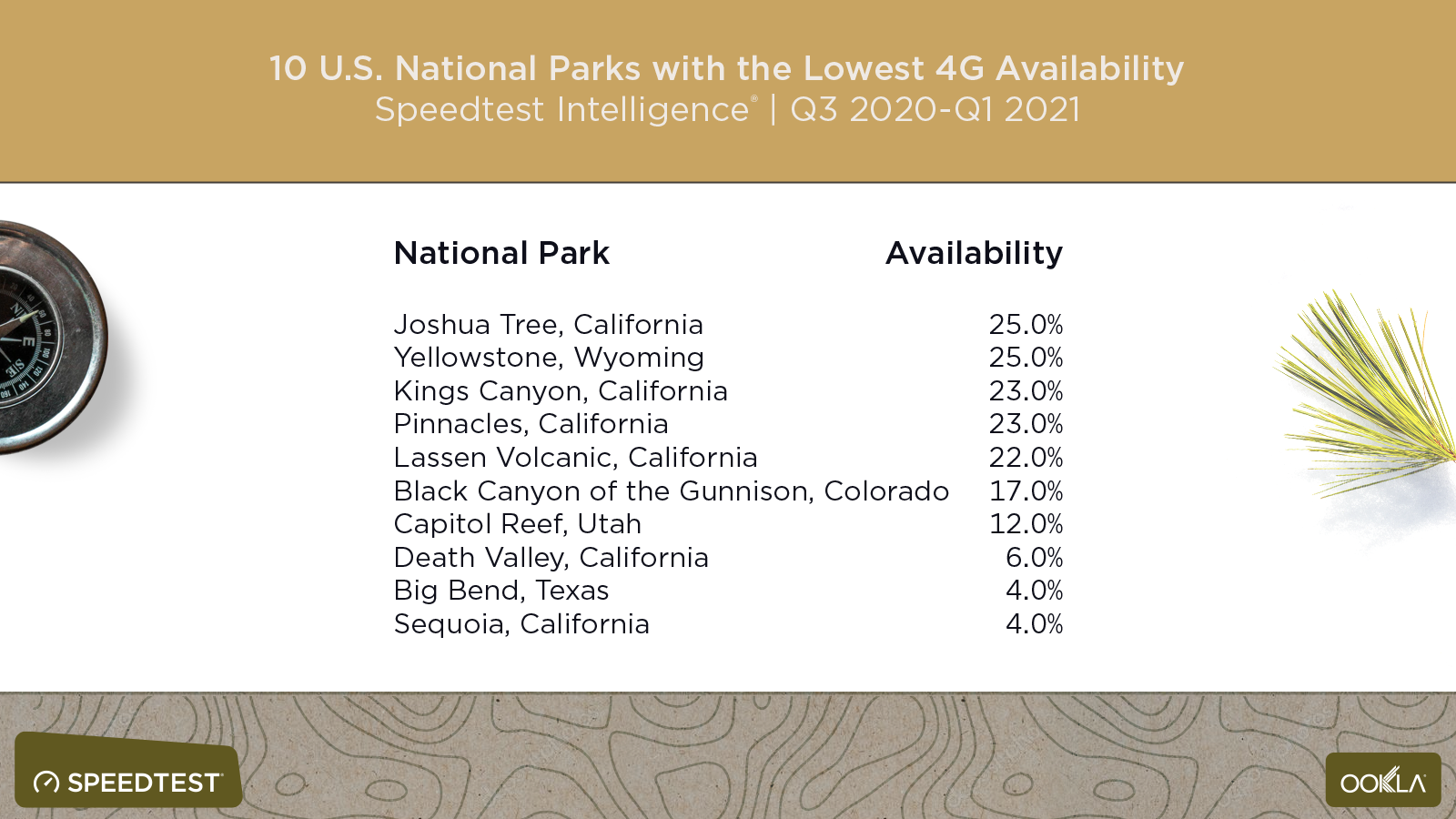
If you’re looking to unplug while in the outdoors, try Sequoia National Park in California and Big Bend National Park in Texas. These two parks had the lowest 4G Availability of all the U.S. National Parks. There was significant overlap between the list of national parks with the lowest 4G Availability and those with the slowest median download speeds. With 4G Availability numbers like these, spectral efficiency will suffer and the network will likely not be able to serve as many people per cell, dragging down your mobile performance. Save yourself the frustration — log off and enjoy the view.
Only two Canadian parks show less than 50% 4G Availability
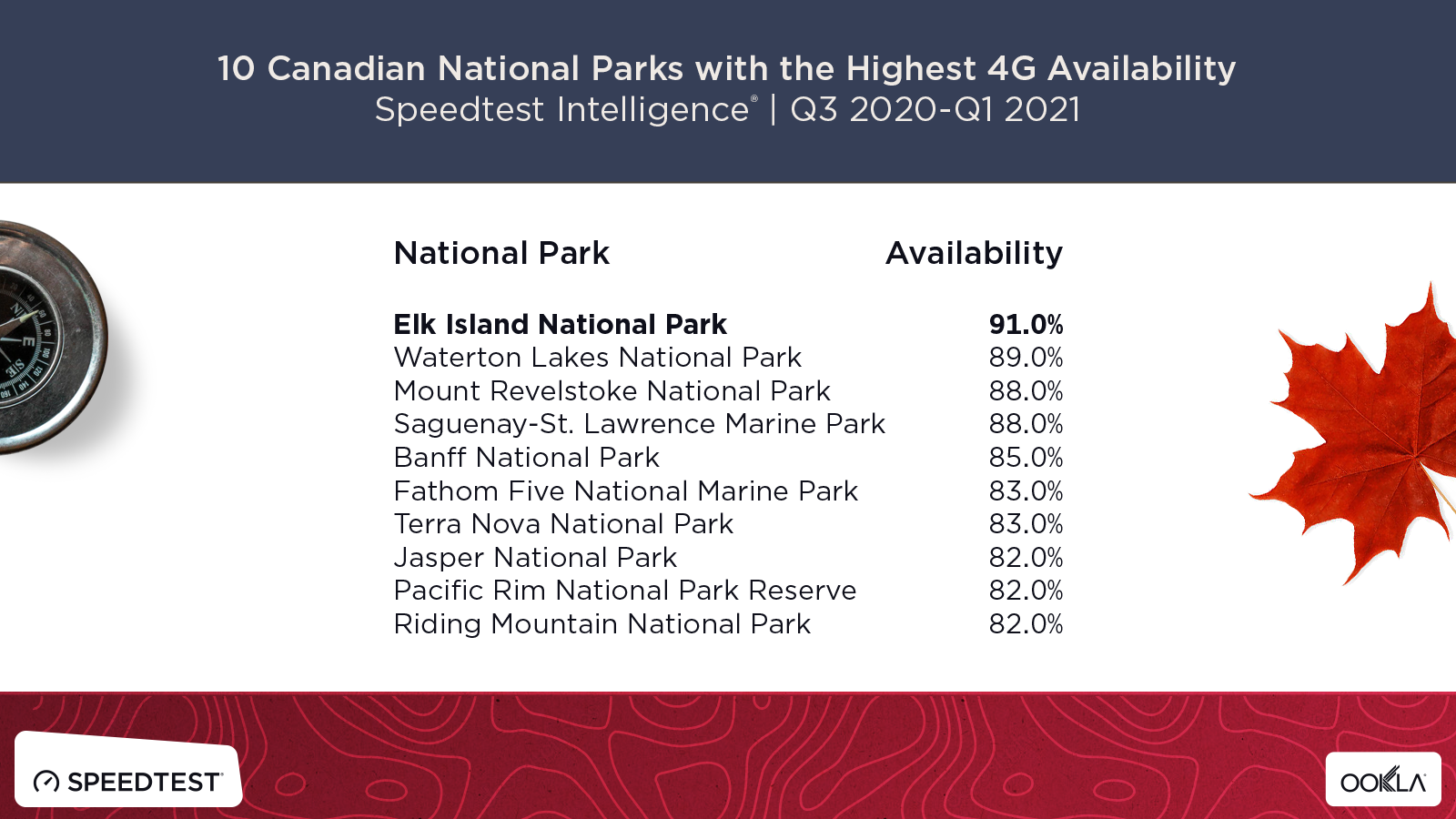
Elk Island had the highest 4G Availability among national parks in Canada, Waterton Lakes National Park was second and Mount Revelstoke National Park third. The national parks on this list had strong 4G Availability regardless of their proximity to or distance from population centers.
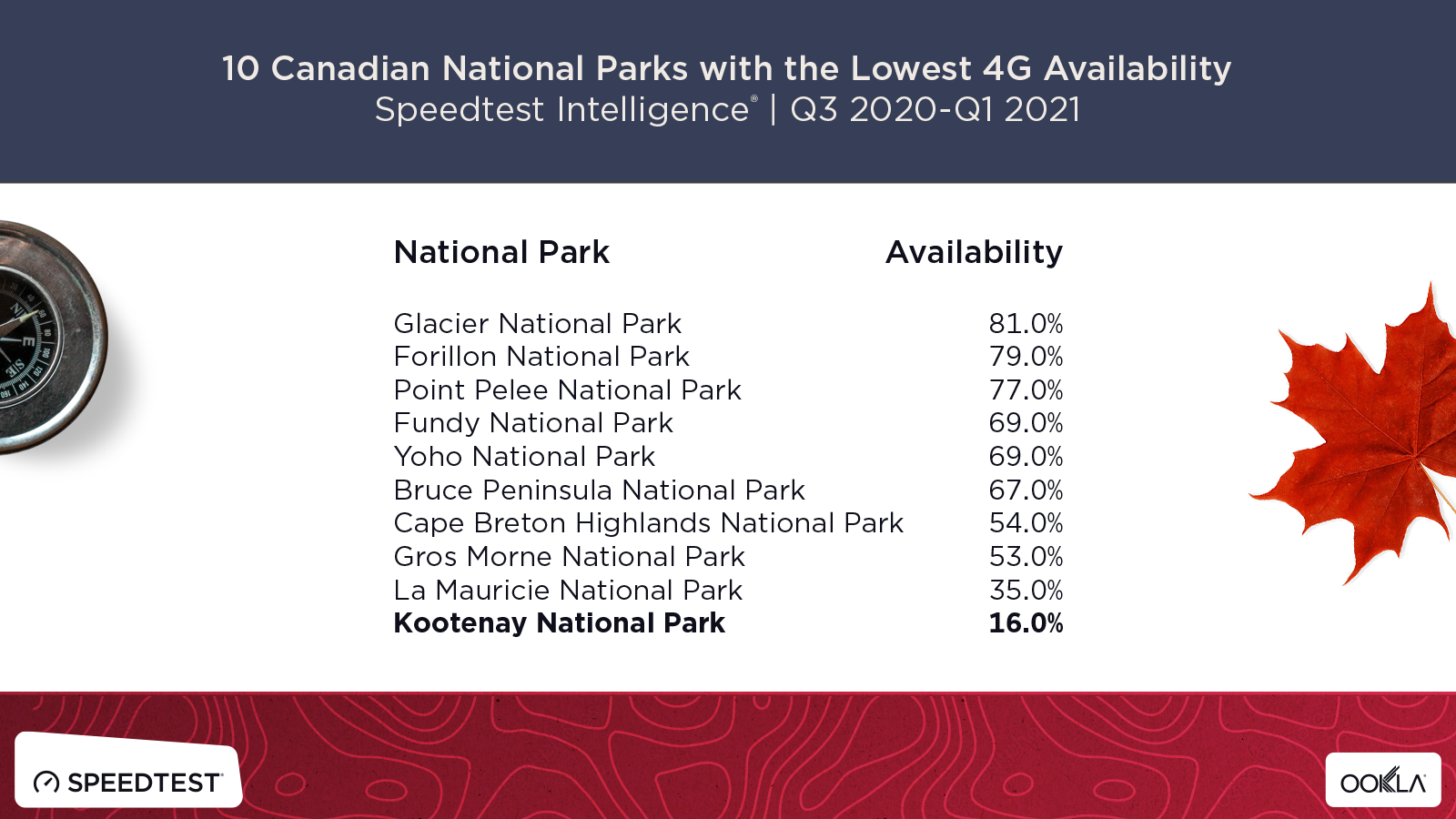
Kootenay National Park had the lowest 4G Availability among national parks in Canada. La Mauricie was second and Gros Morne third. It’s worth noting that the Canadian National Parks on this list had, for the most part, much higher 4G Availability than the U.S. National Parks with the lowest 4G Availability.
Mobile service not guaranteed
We’ve mentioned this throughout the article, but median performance only applies where you can actually get a signal. Below, we’ve mapped the Canadian and U.S. National Parks with the fastest and slowest speeds and the highest and lowest 4G Availability from our lists above to show how varied that coverage can be.
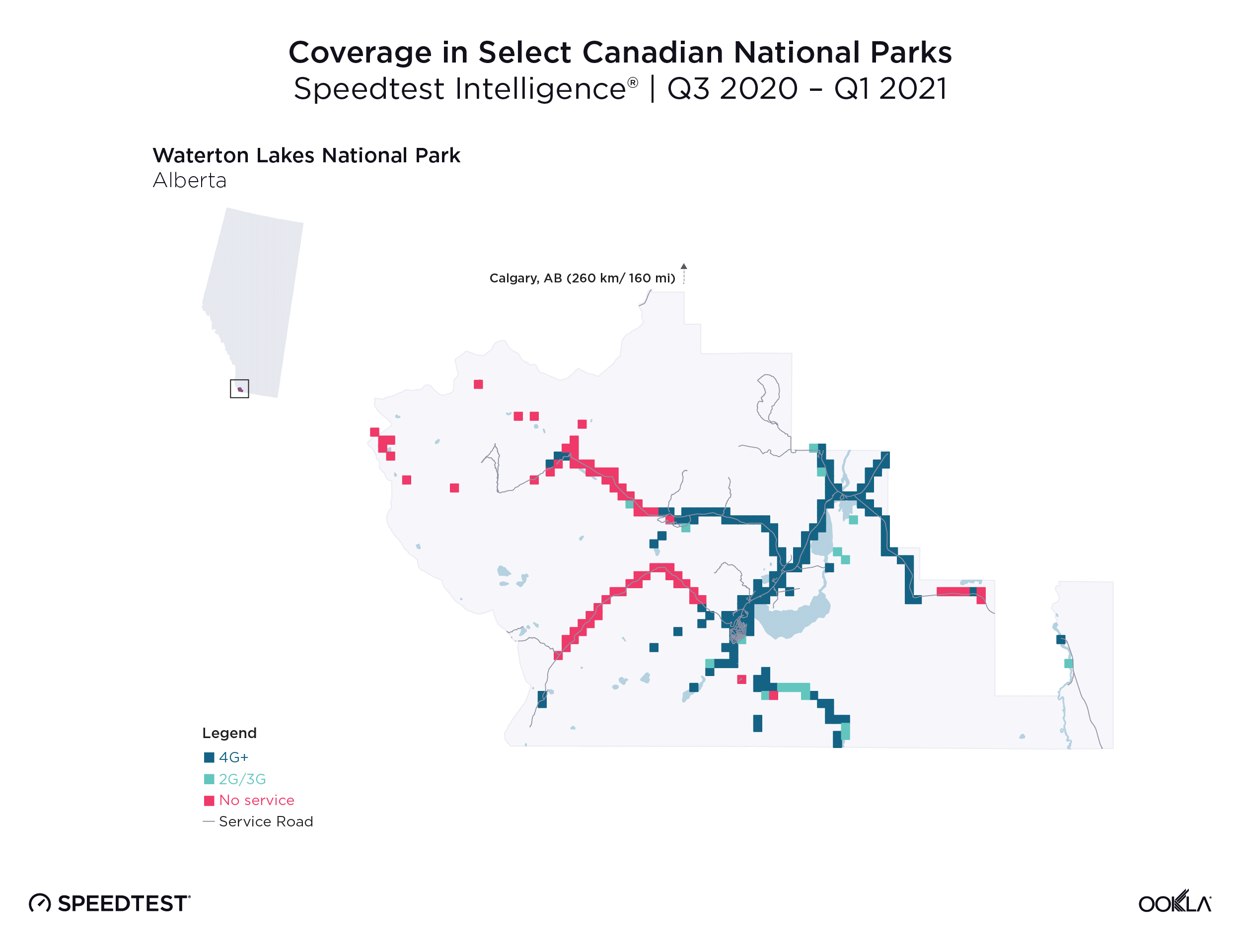
Although Waterton Lakes National Park had the fastest download speed among Canadian National Parks, travelers will only find reliable 4G service in the eastern half of the park, particularly along Highway 5, the first half of Red Rock Parkway, and the road to the Waterton Valley View Point. There’s also spotty connectivity on the Crypt Lake Trail. Meanwhile, we saw a 4G signal along most of the roads in Elk Island National Park and at the southeast and southwest corners of Flyingshot Lake. Knowing where service is and is not could help Canadians exercise their right to disconnect.
It’s not surprising that Riding Mountain National Park showed the slowest download speed among Canadian National Parks as even the major roads often only have 2G or 3G service. Visitors to this park have the best chance of connecting to 4G around Clear Lake. Parks Canada warns there is no cell coverage in Kootenay National Park and Speedtest data mostly backs this up. We saw almost no service along Highway 93 along the length of the park. There were small pockets of 4G service near the Stanley Glacier and Radium Hot Springs, but visitors facing an emergency will likely need to seek out the emergency phone at Kootenay Crossing as advised by the Park.
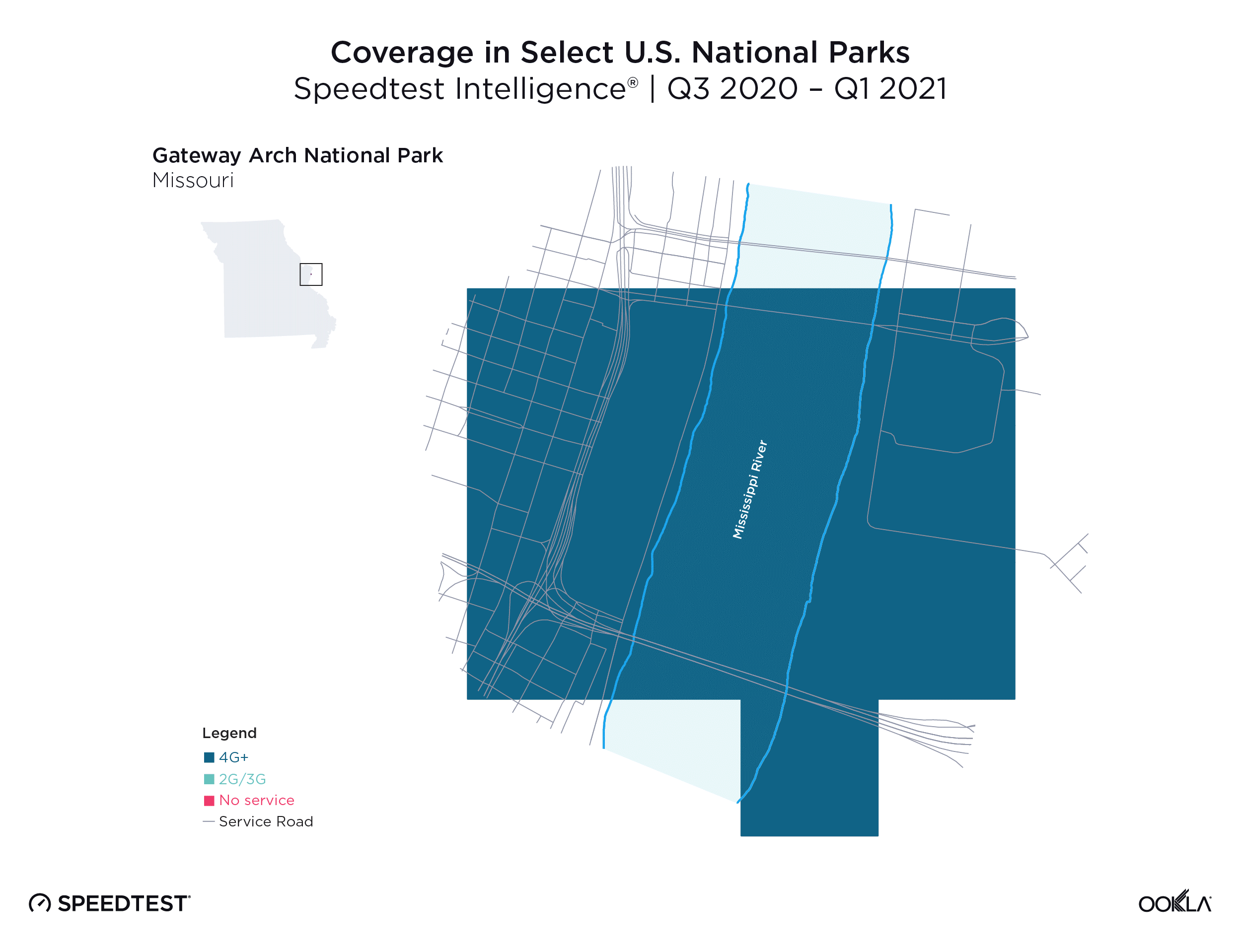
In the U.S., Gateway Arch National Park and Cuyahoga Valley National Park both show service in all or most of the park. This is not surprising given that Gateway Arch covers only 91 (mostly flat) acres in St. Louis. The gaps in 4G service at Cuyahoga Valley are few given that the park covers more than 32,000 acres (for comparison, Yellowstone has 2,221,766 acres). Either park would be good destinations if you need to be connected most of the time.
Mobile service is much poorer at both Big Bend National Park and Sequoia National Park. Visitors to Big Bend should be able to connect to a 2G or 3G signal if they are along the north and western service roads while the south and eastern service roads show spotty or no service at all. Most of the major roads at Sequoia show no service at all, with only a couple of spots where 4G peeks through. If you’re traveling to either of these parks, plan on being mostly off the grid.
5G all the time or completely disconnected, we hope this data will help you get outside and enjoy nature this summer — either with your mobile lifeline or completely off the grid. If you do visit a national park in Canada or the U.S., take a Speedtest® on Android or iOS to help us provide even better information next year.
Ookla retains ownership of this article including all of the intellectual property rights, data, content graphs and analysis. This article may not be quoted, reproduced, distributed or published for any commercial purpose without prior consent. Members of the press and others using the findings in this article for non-commercial purposes are welcome to publicly share and link to report information with attribution to Ookla.

